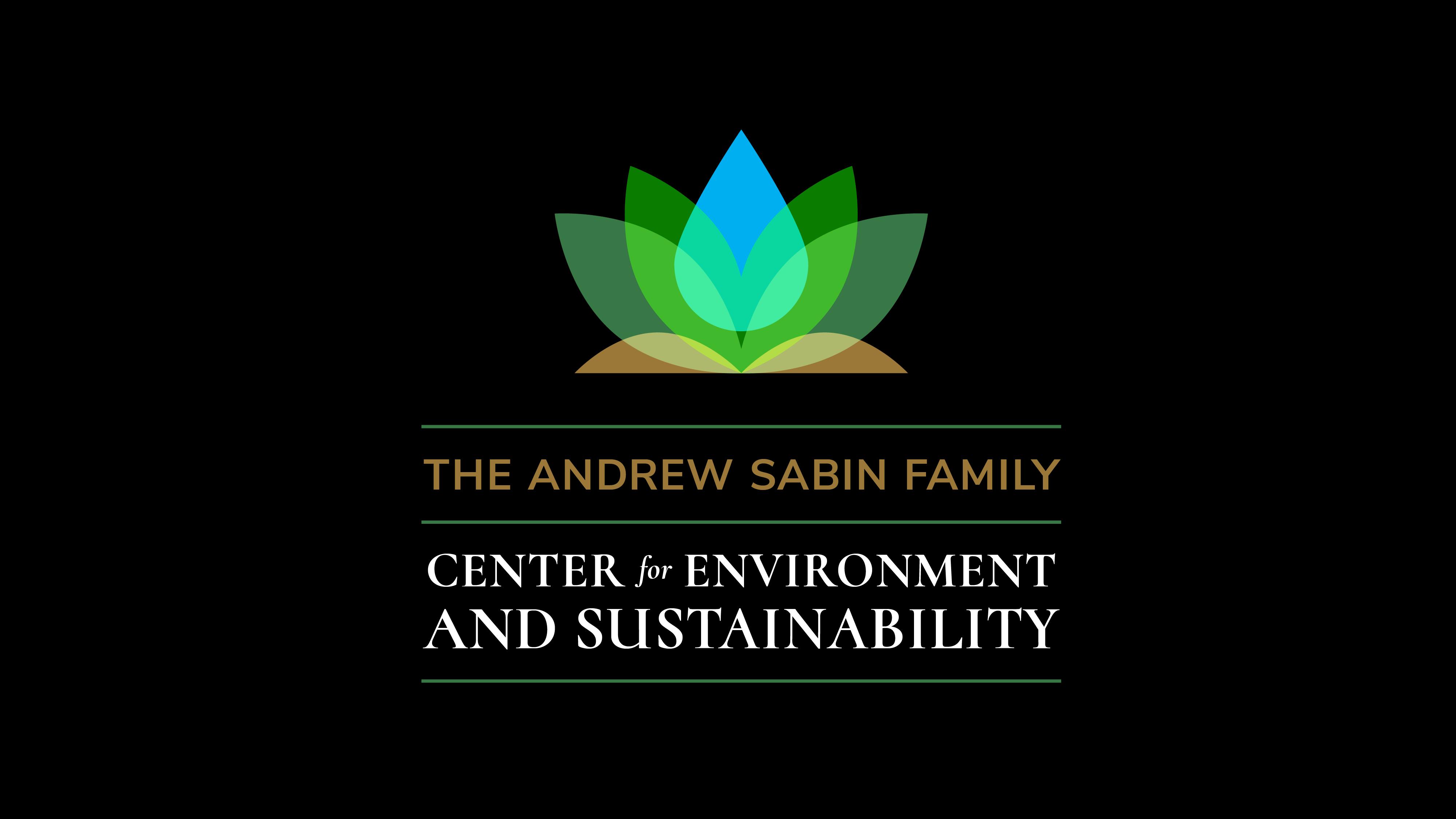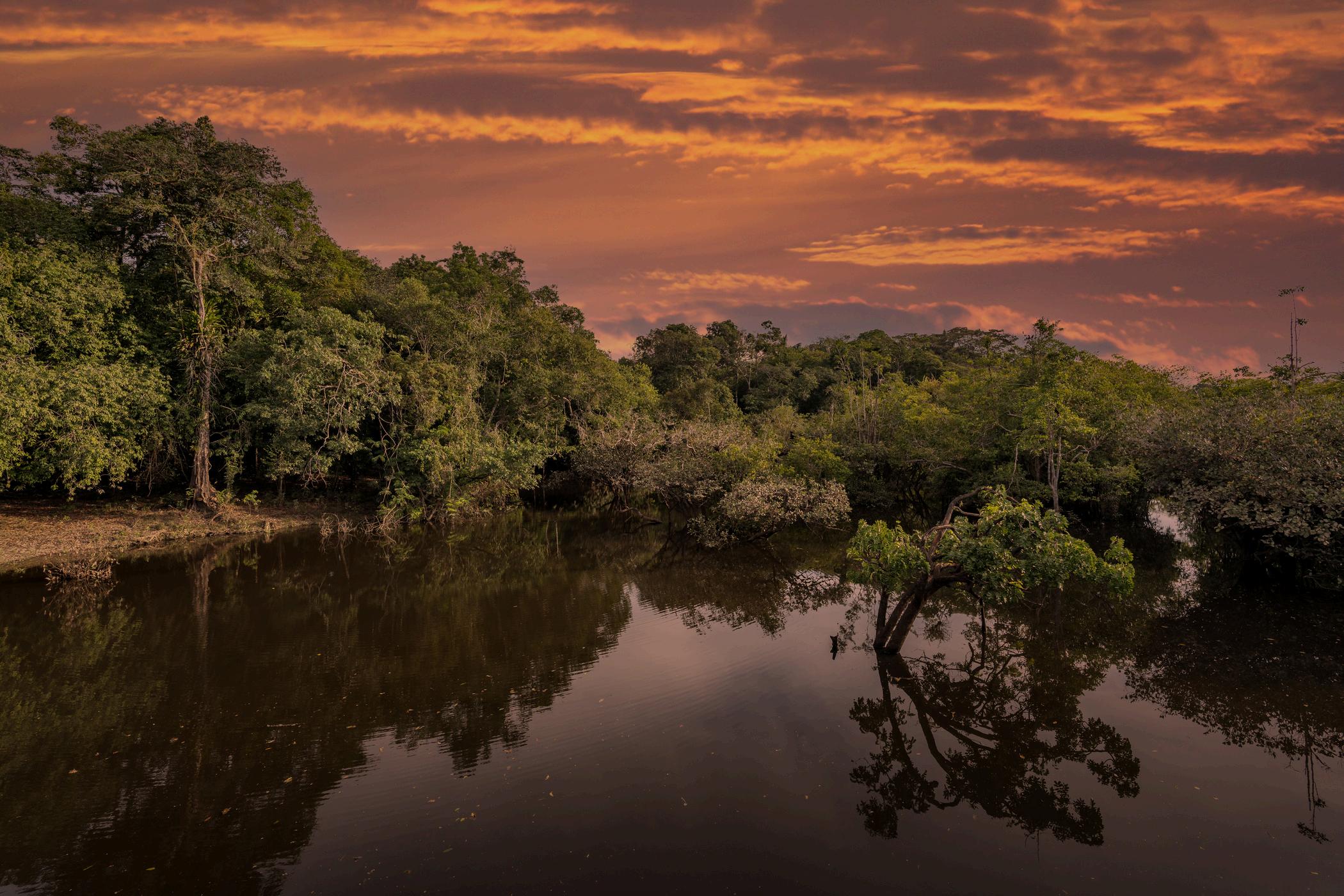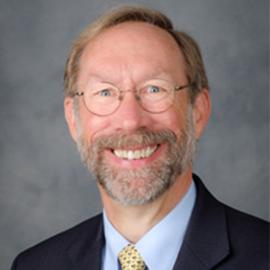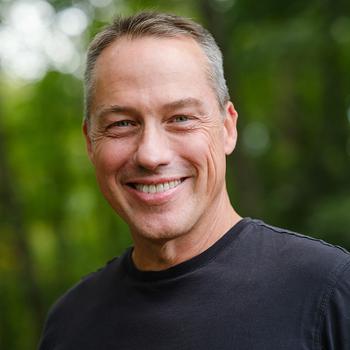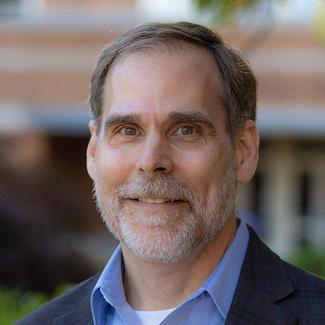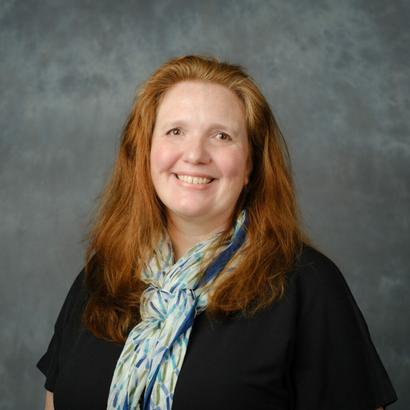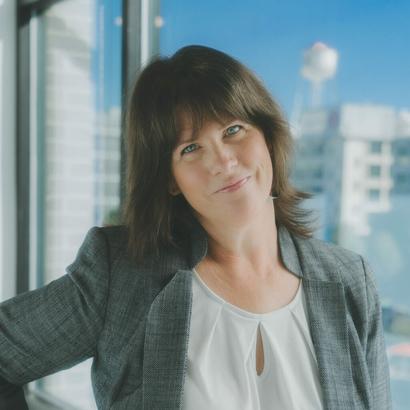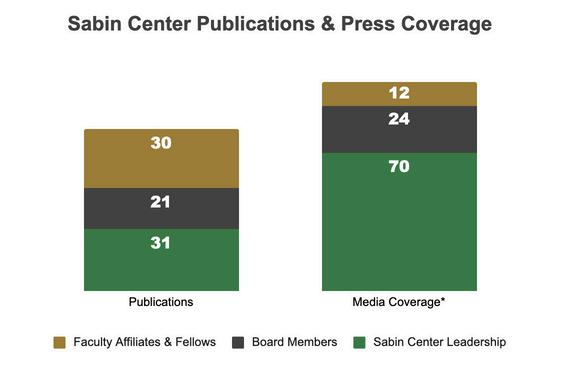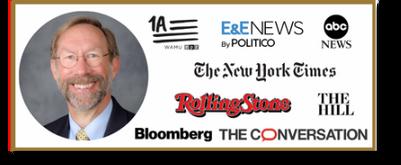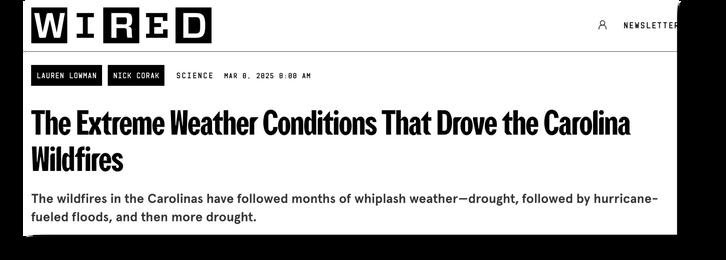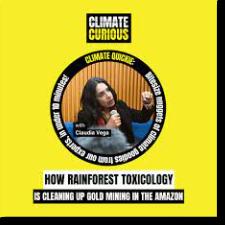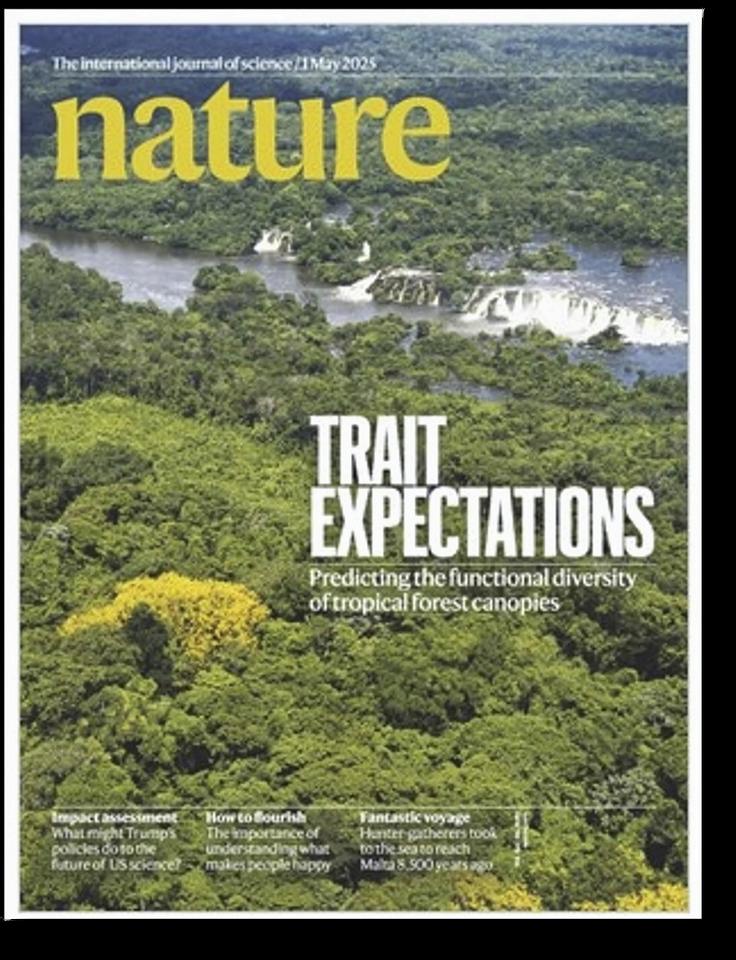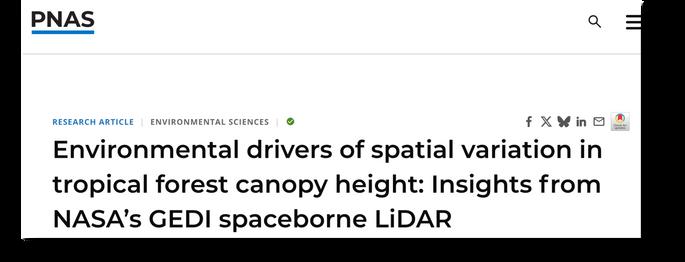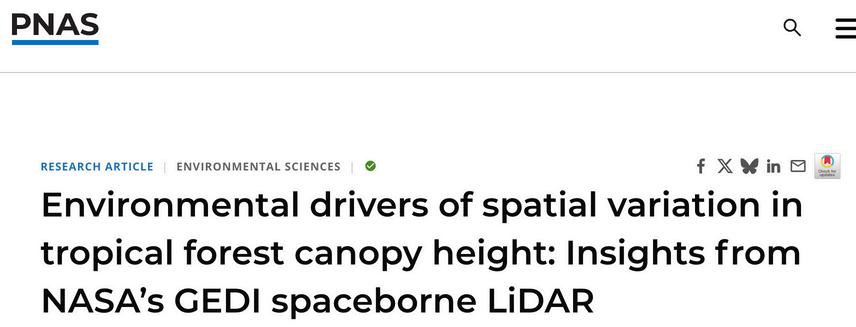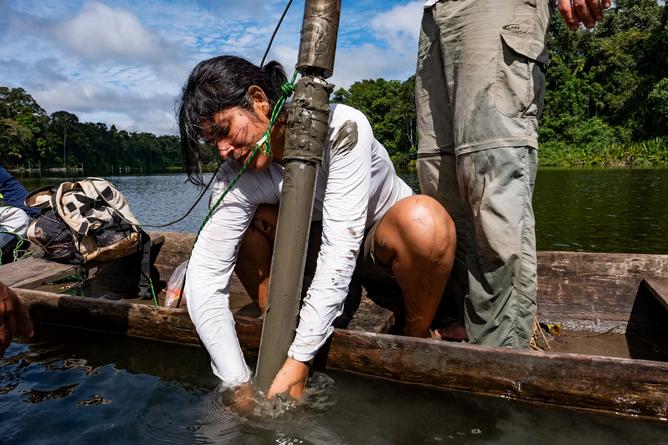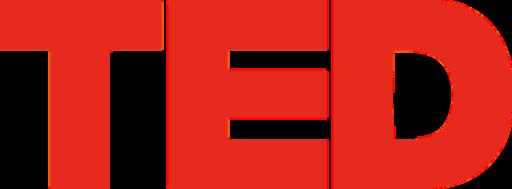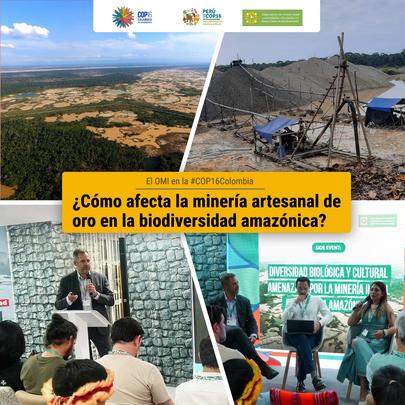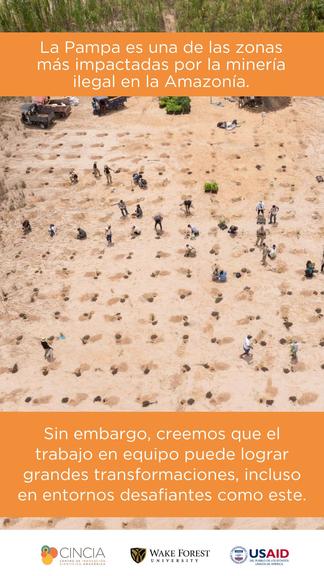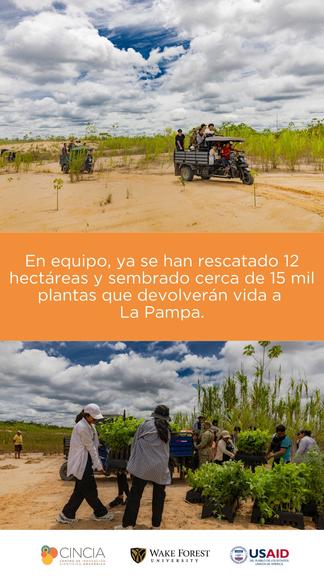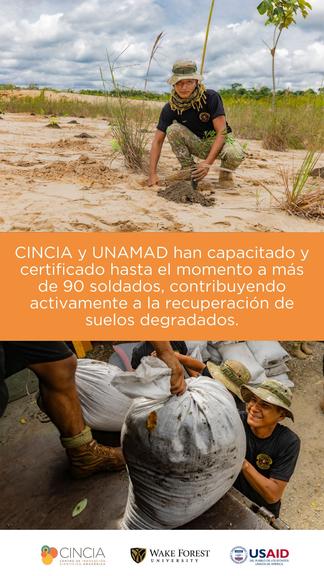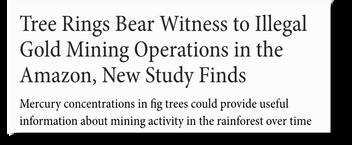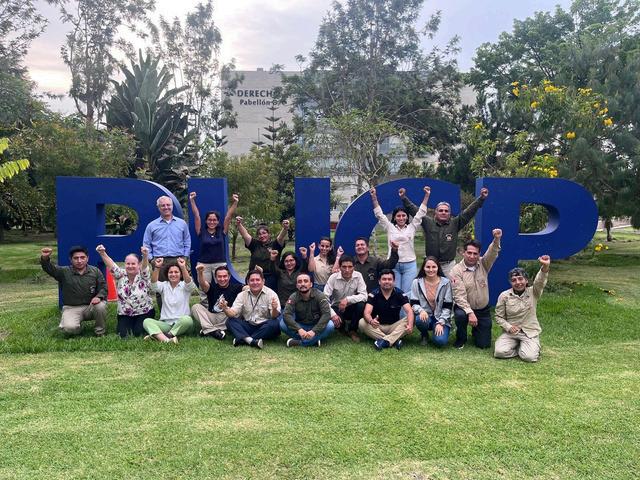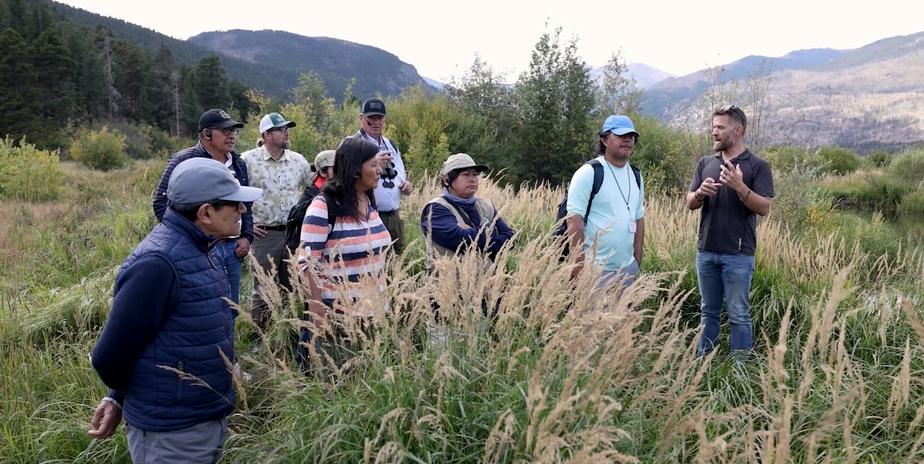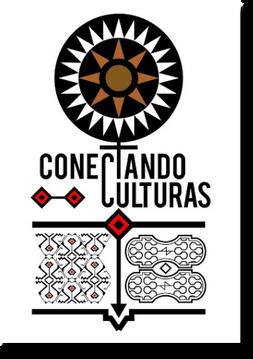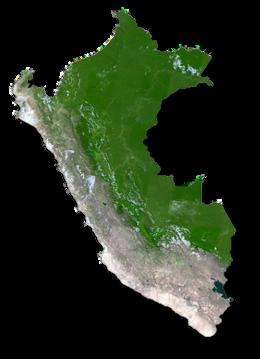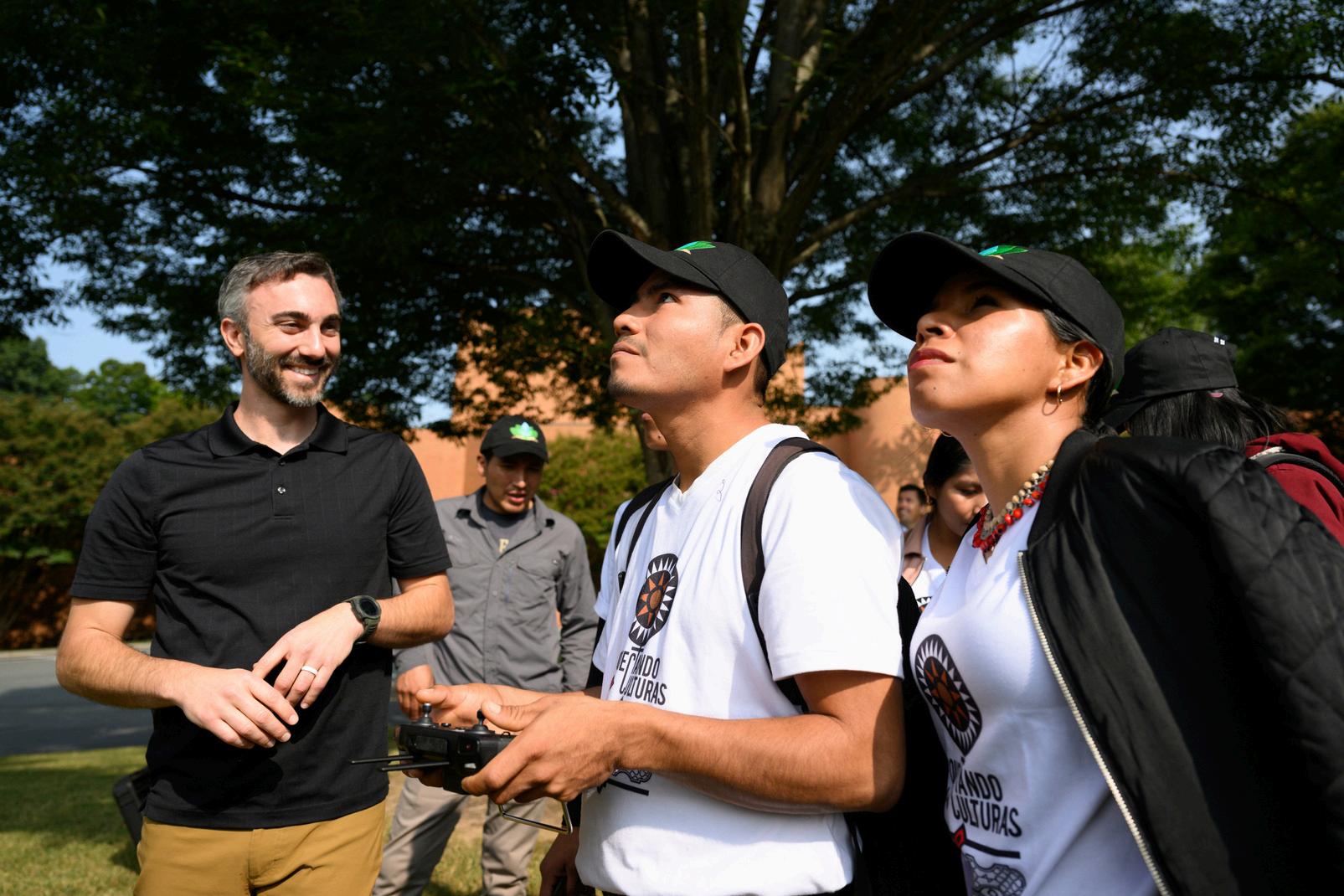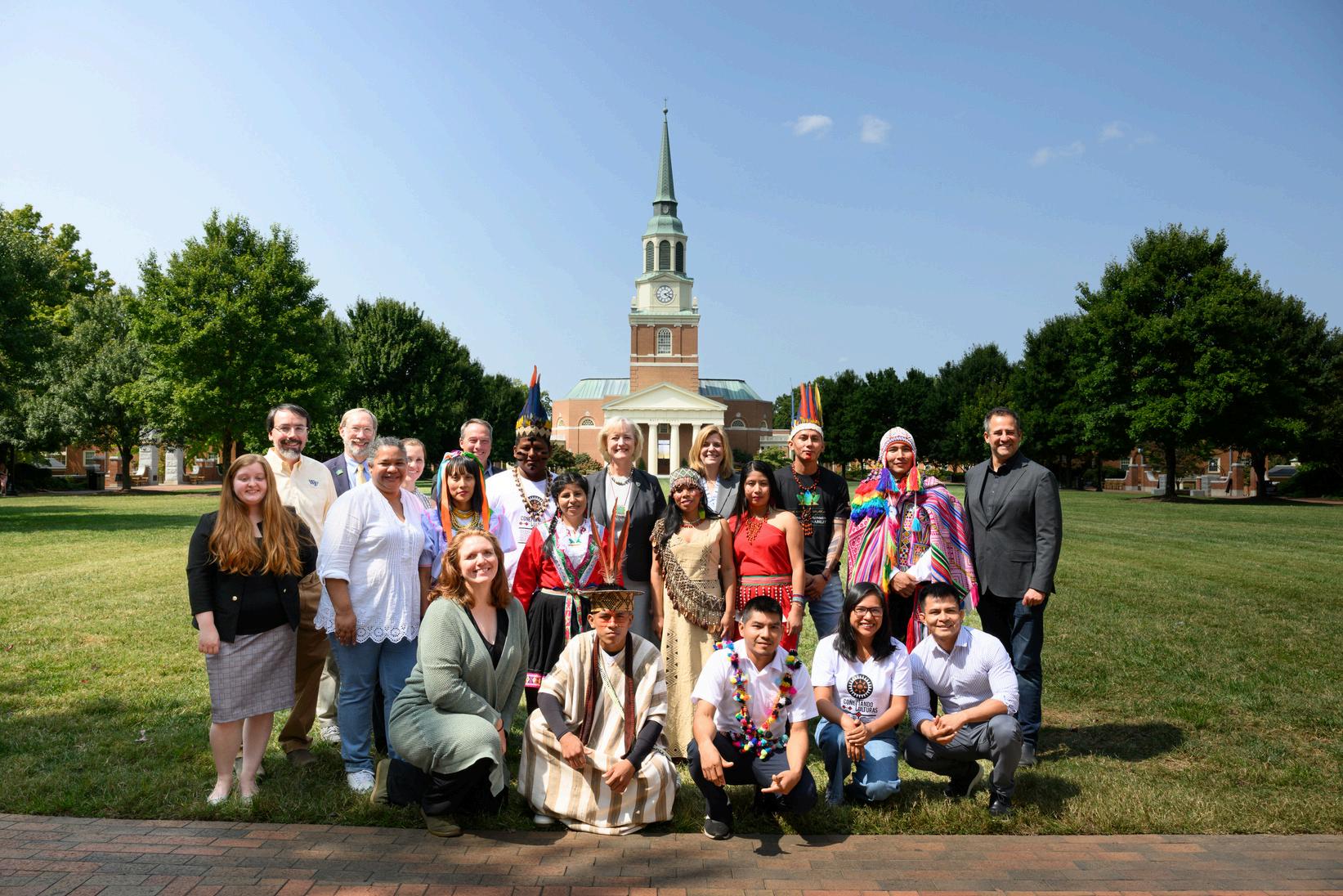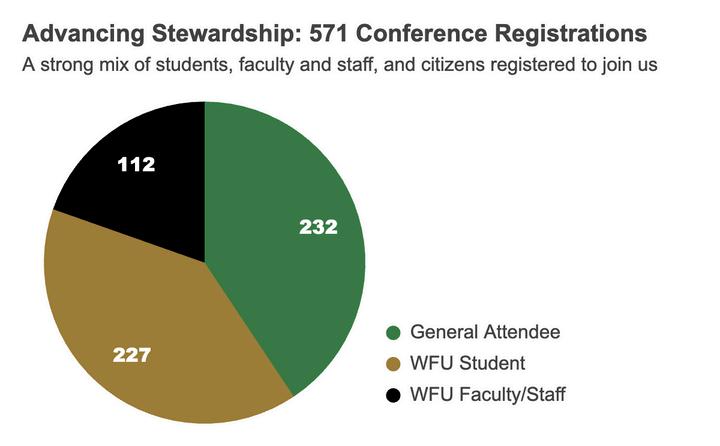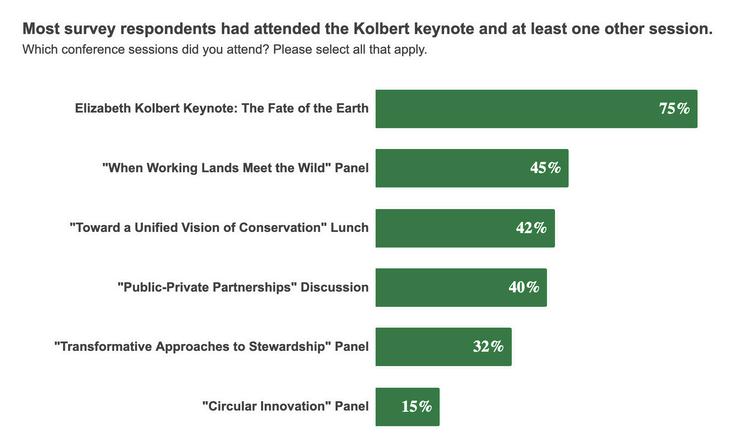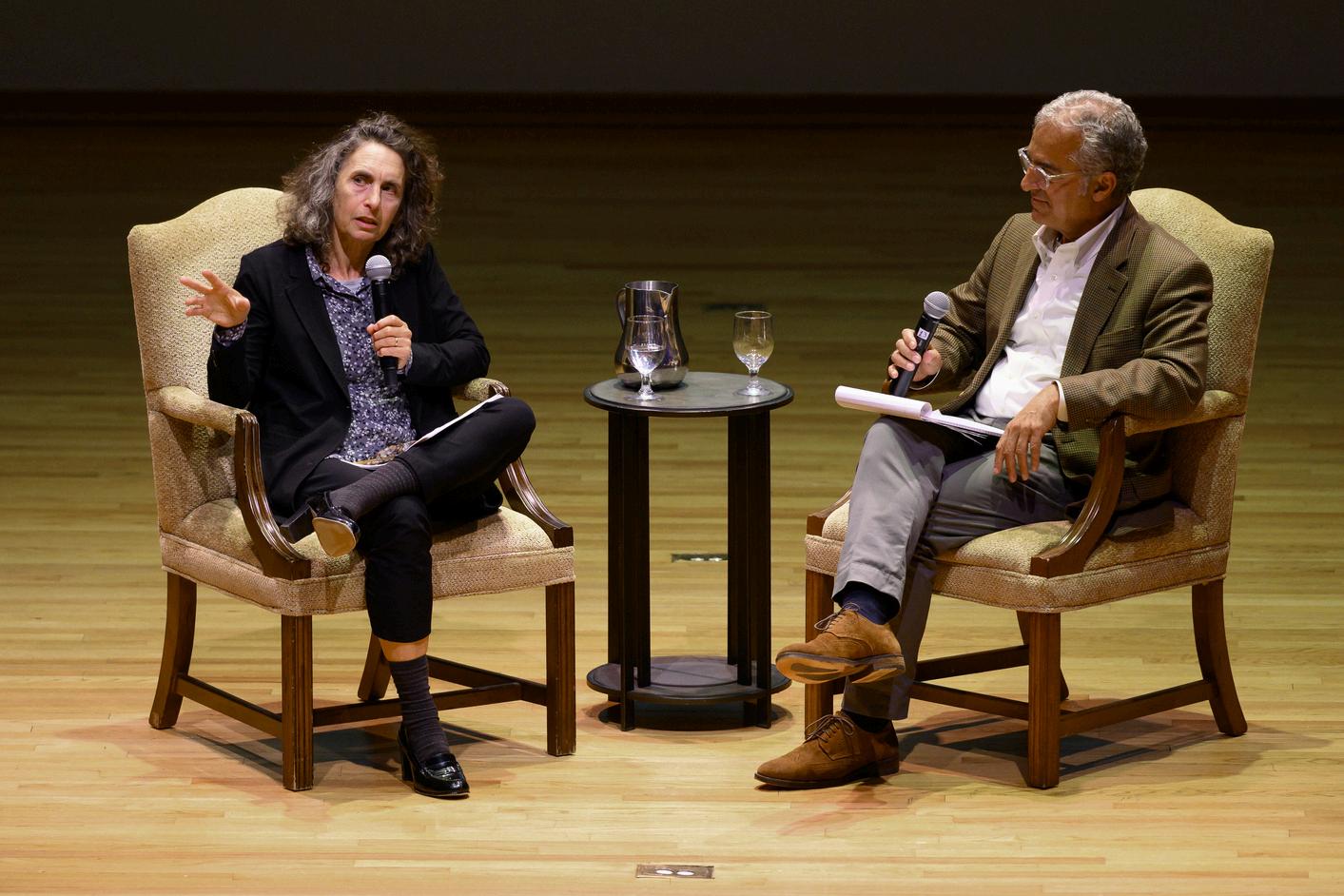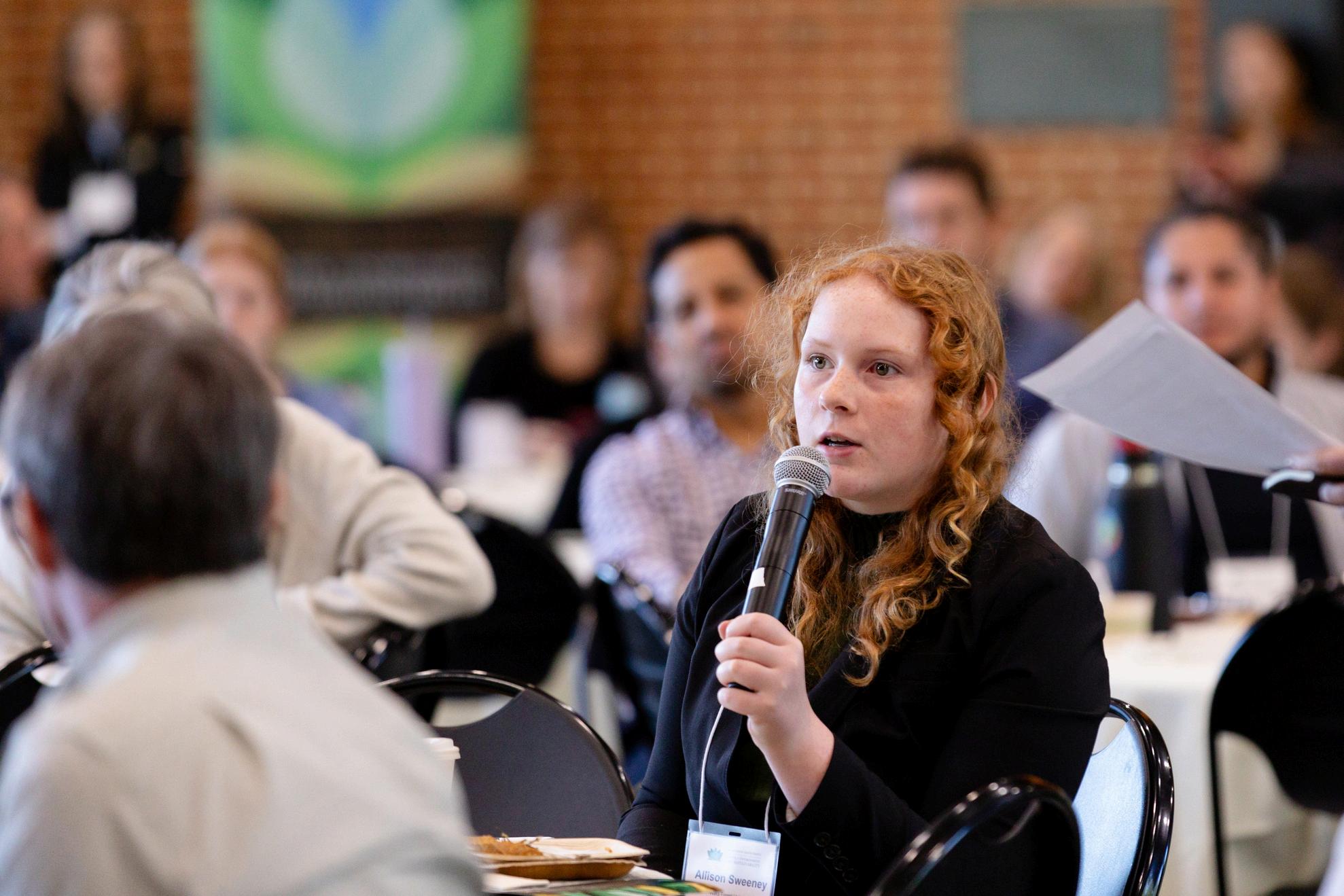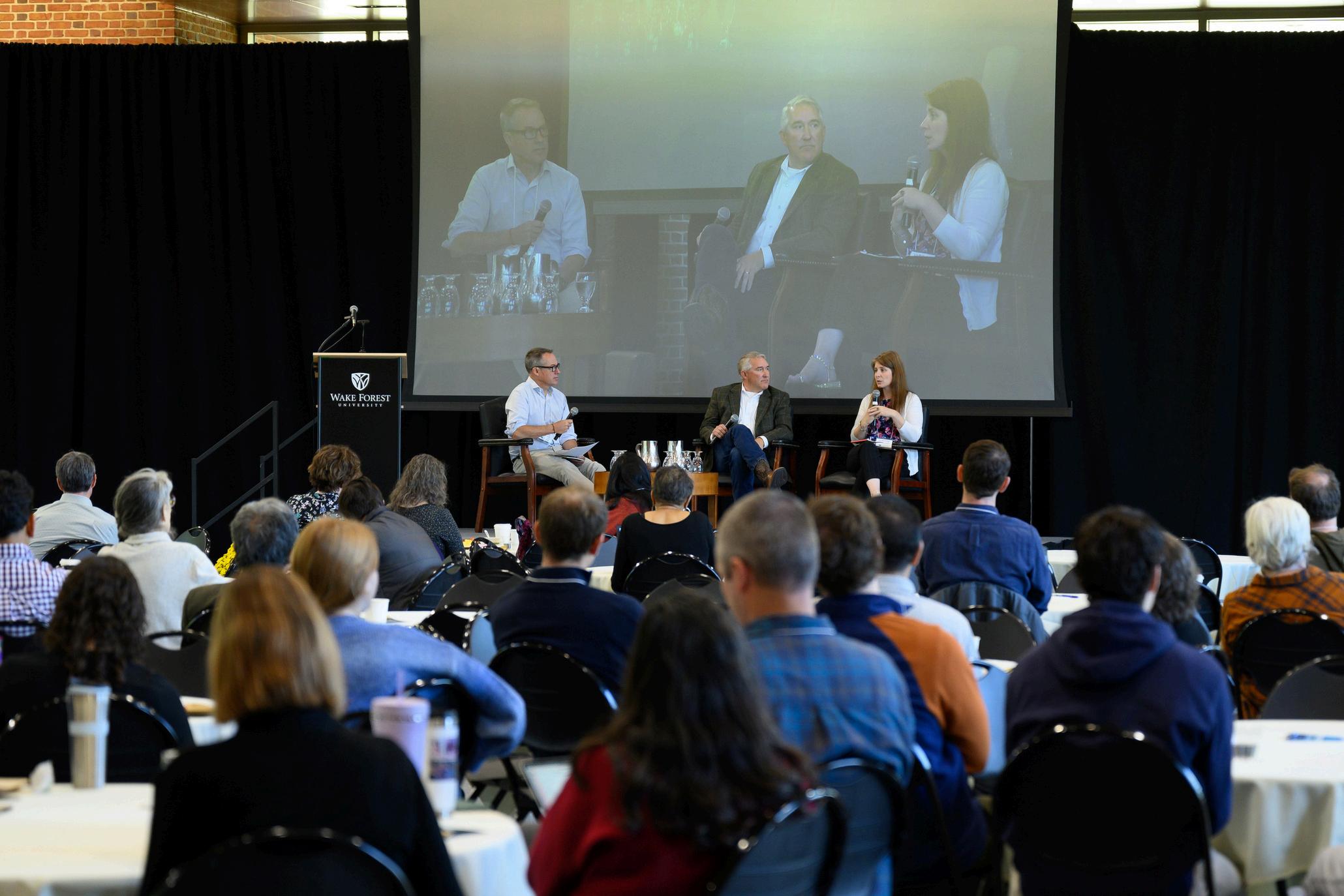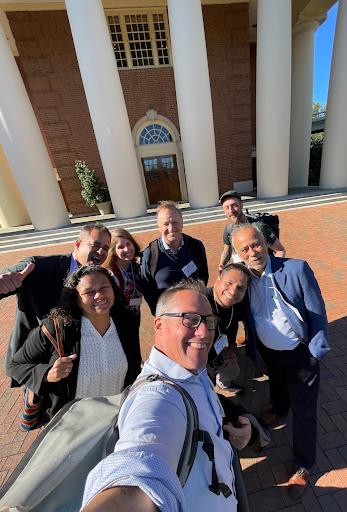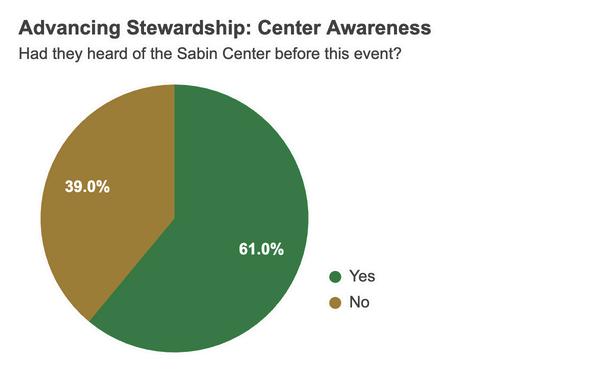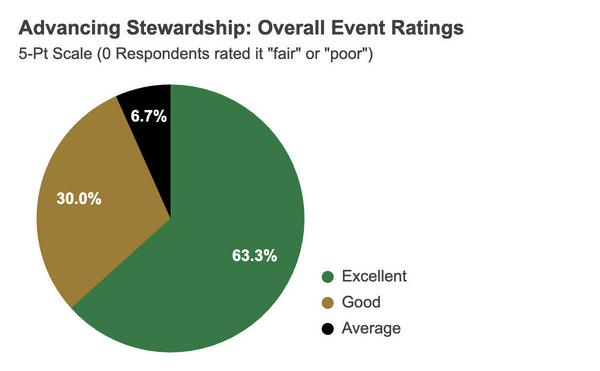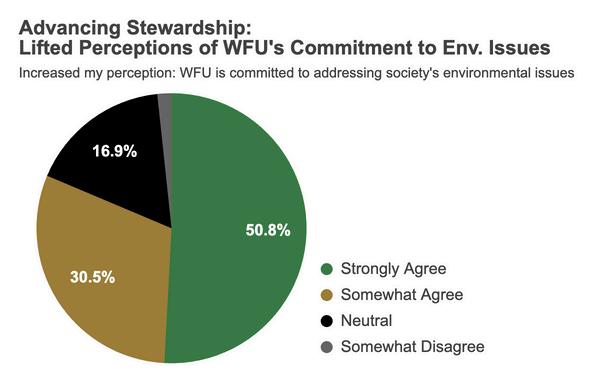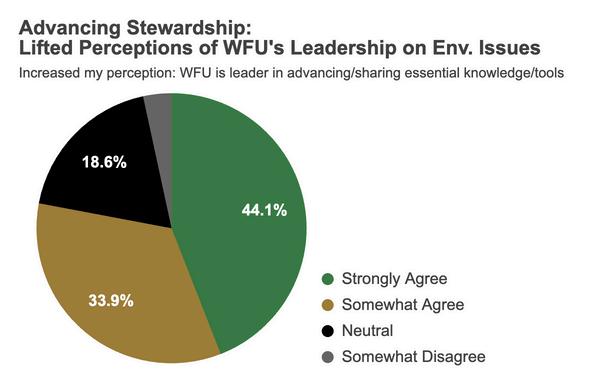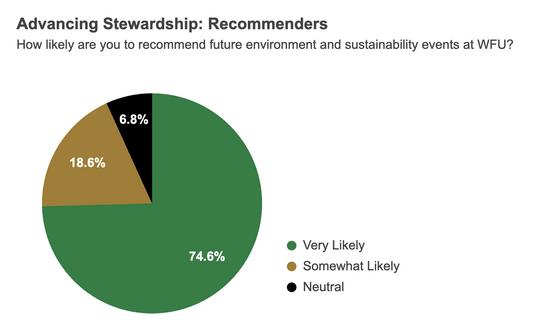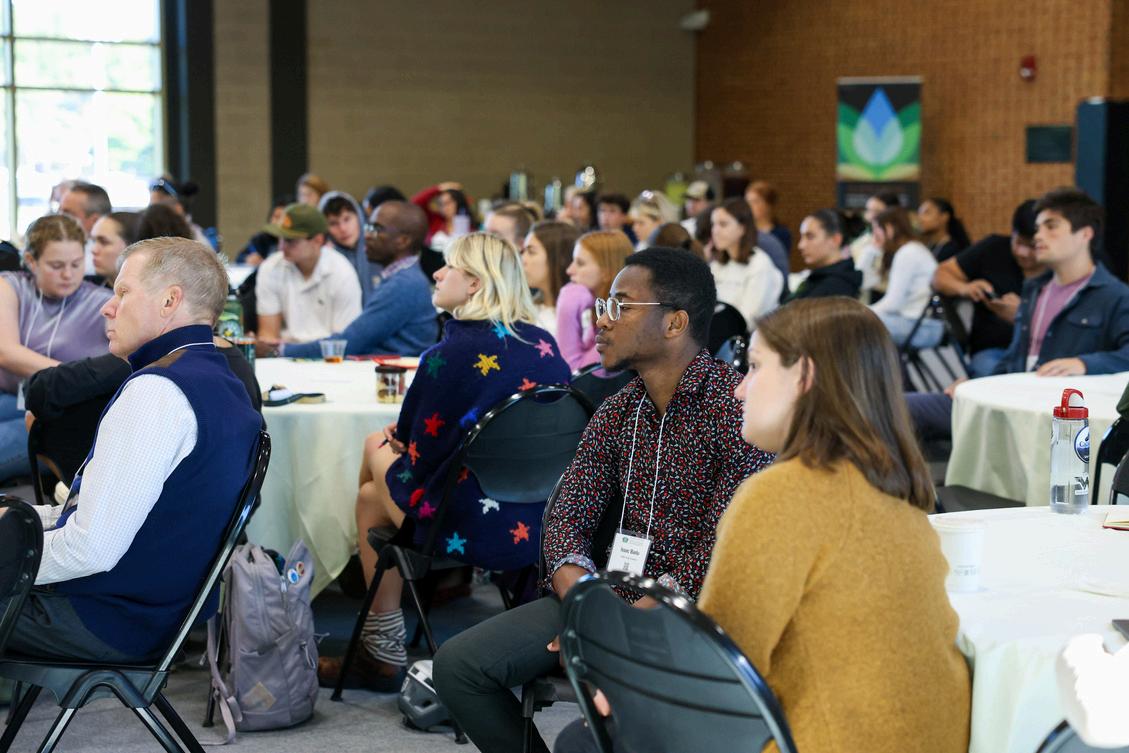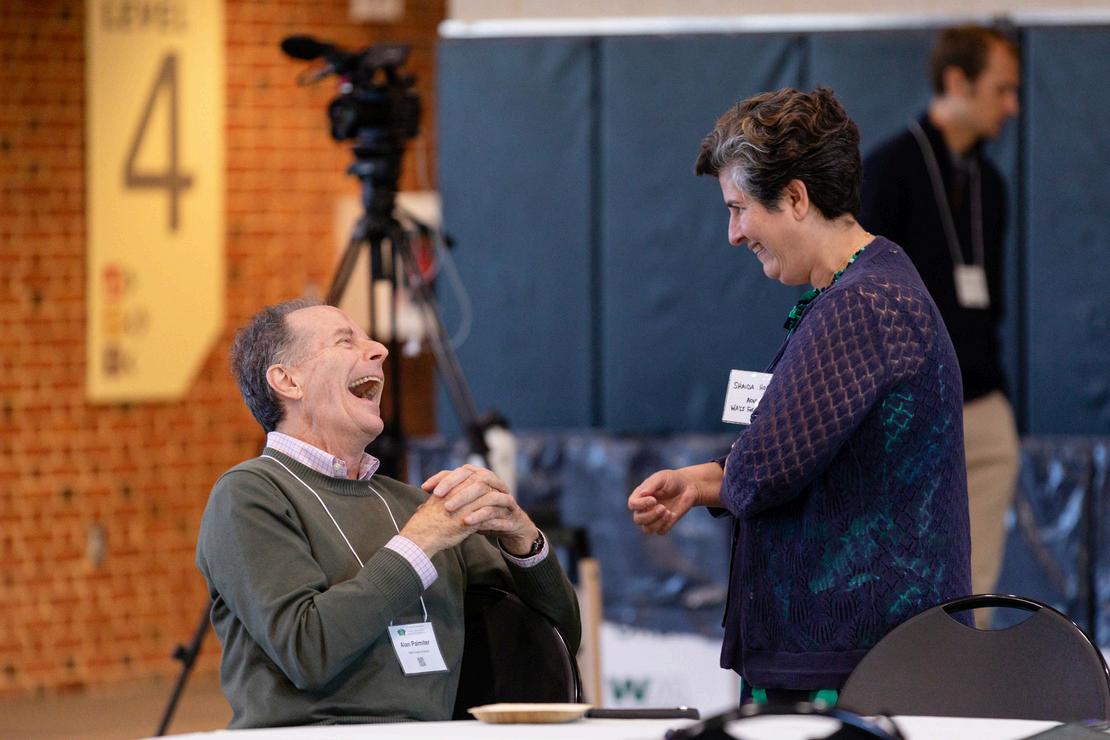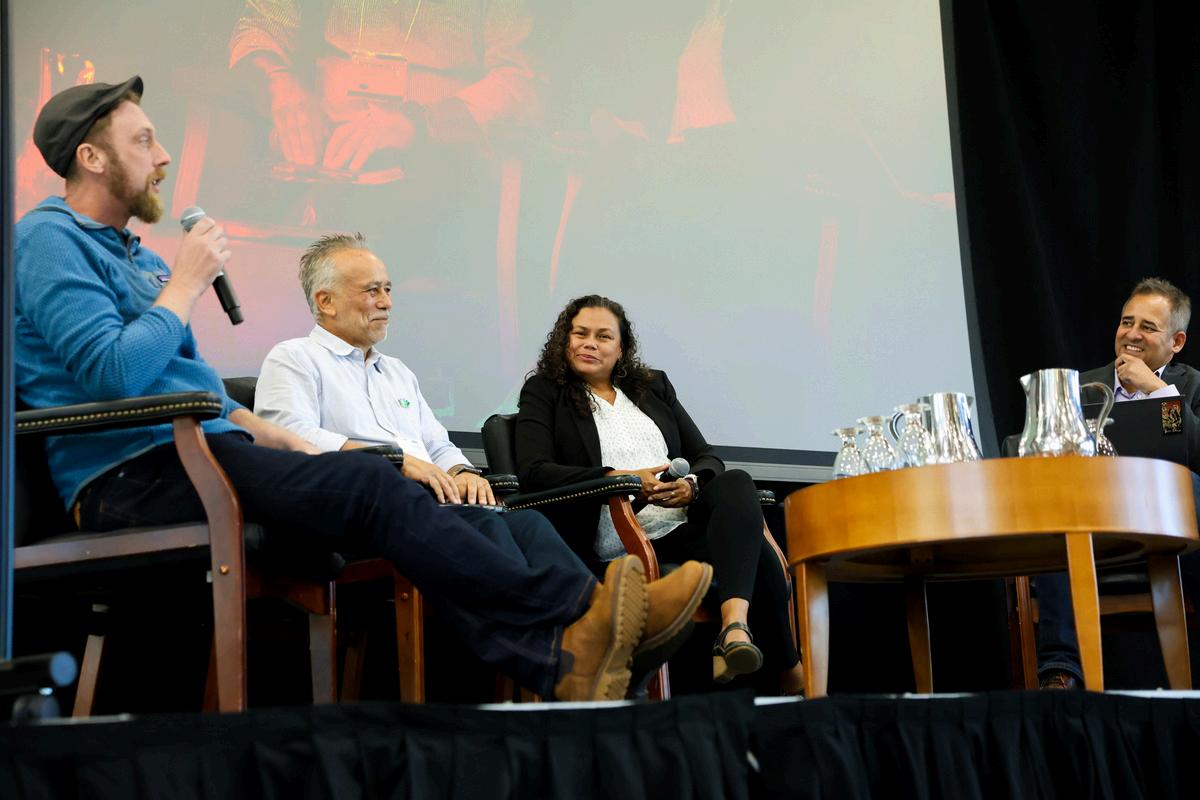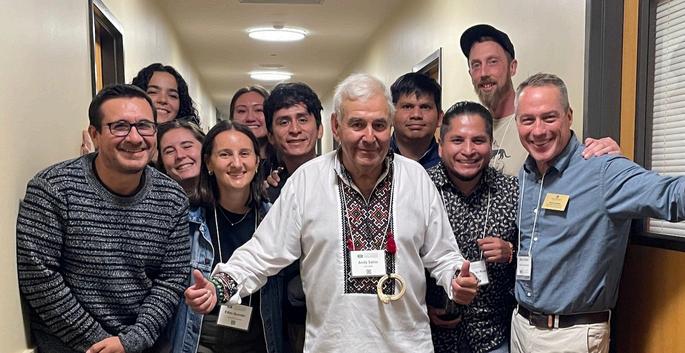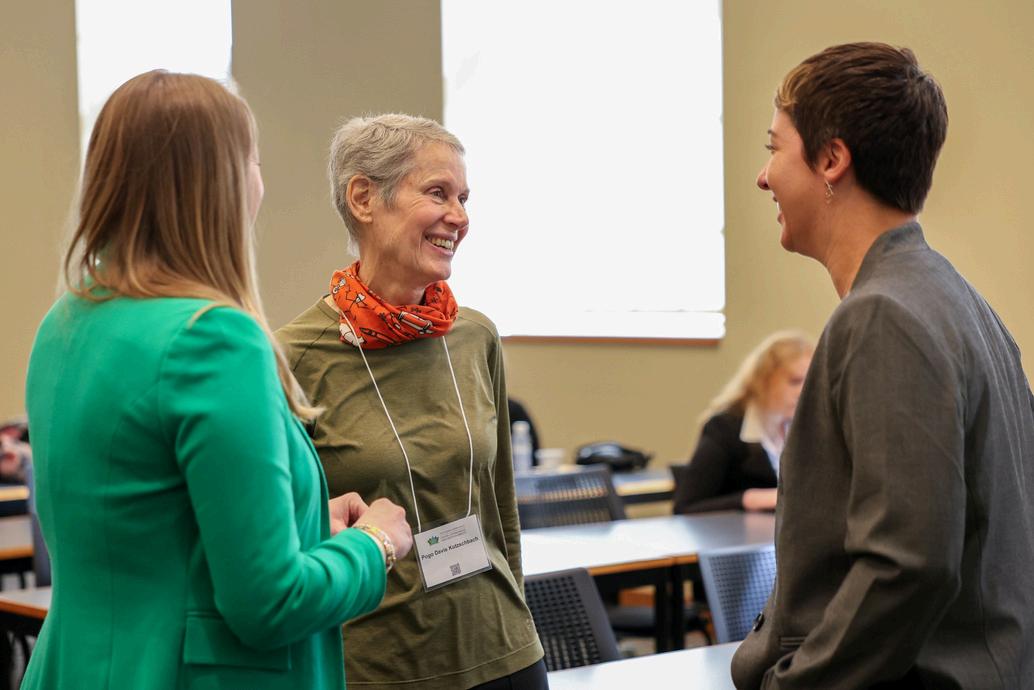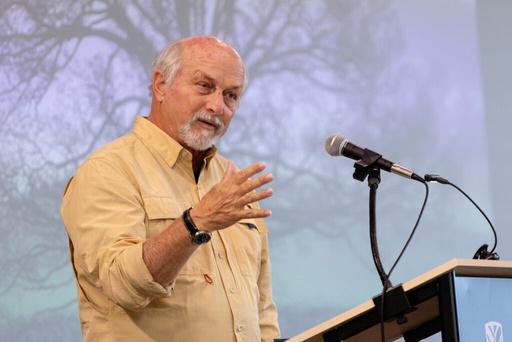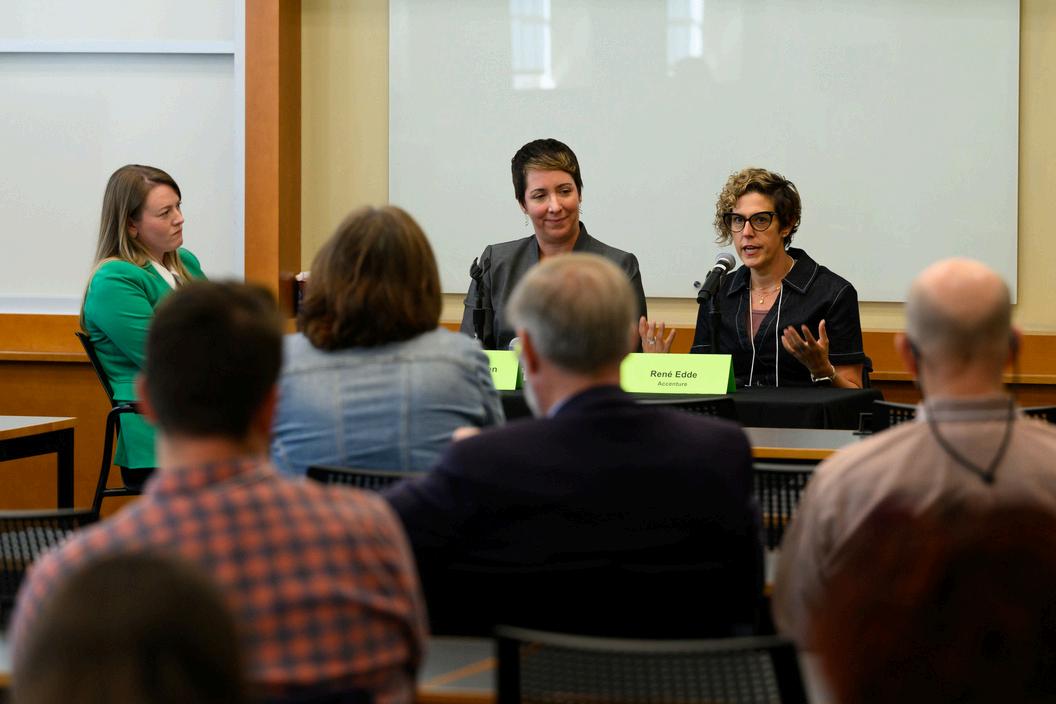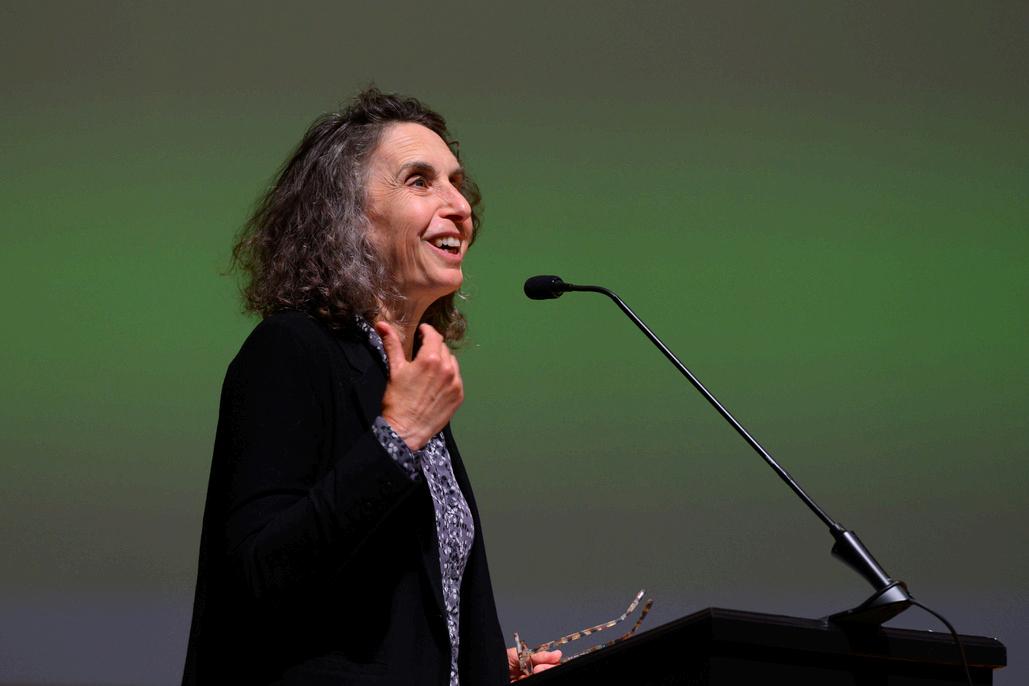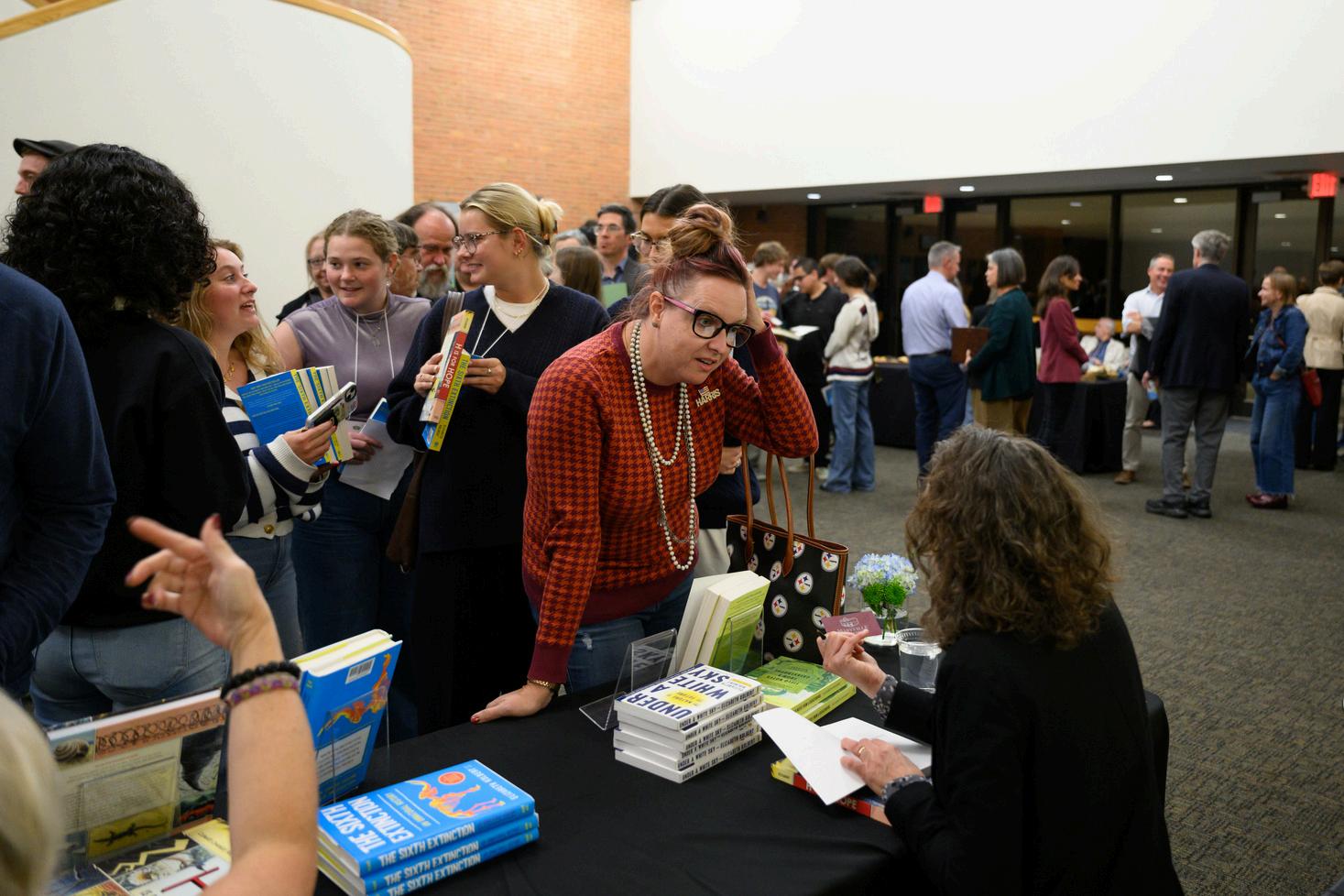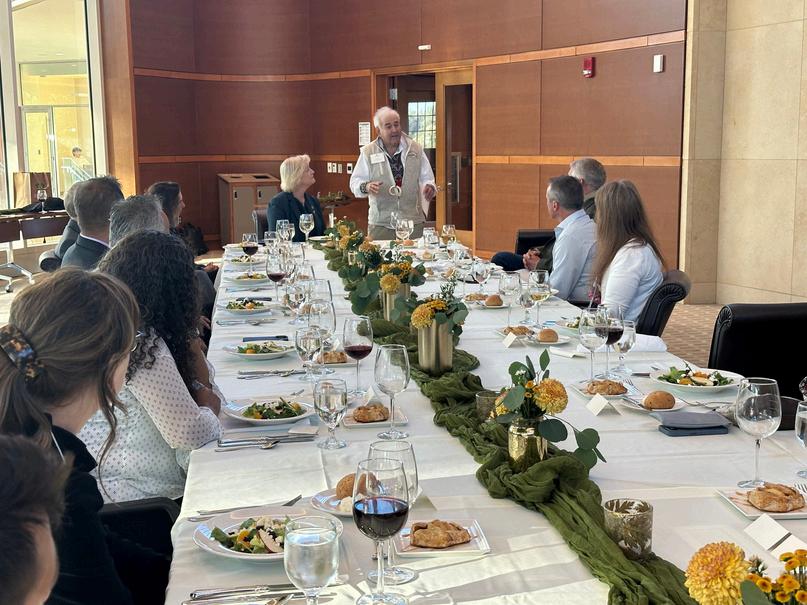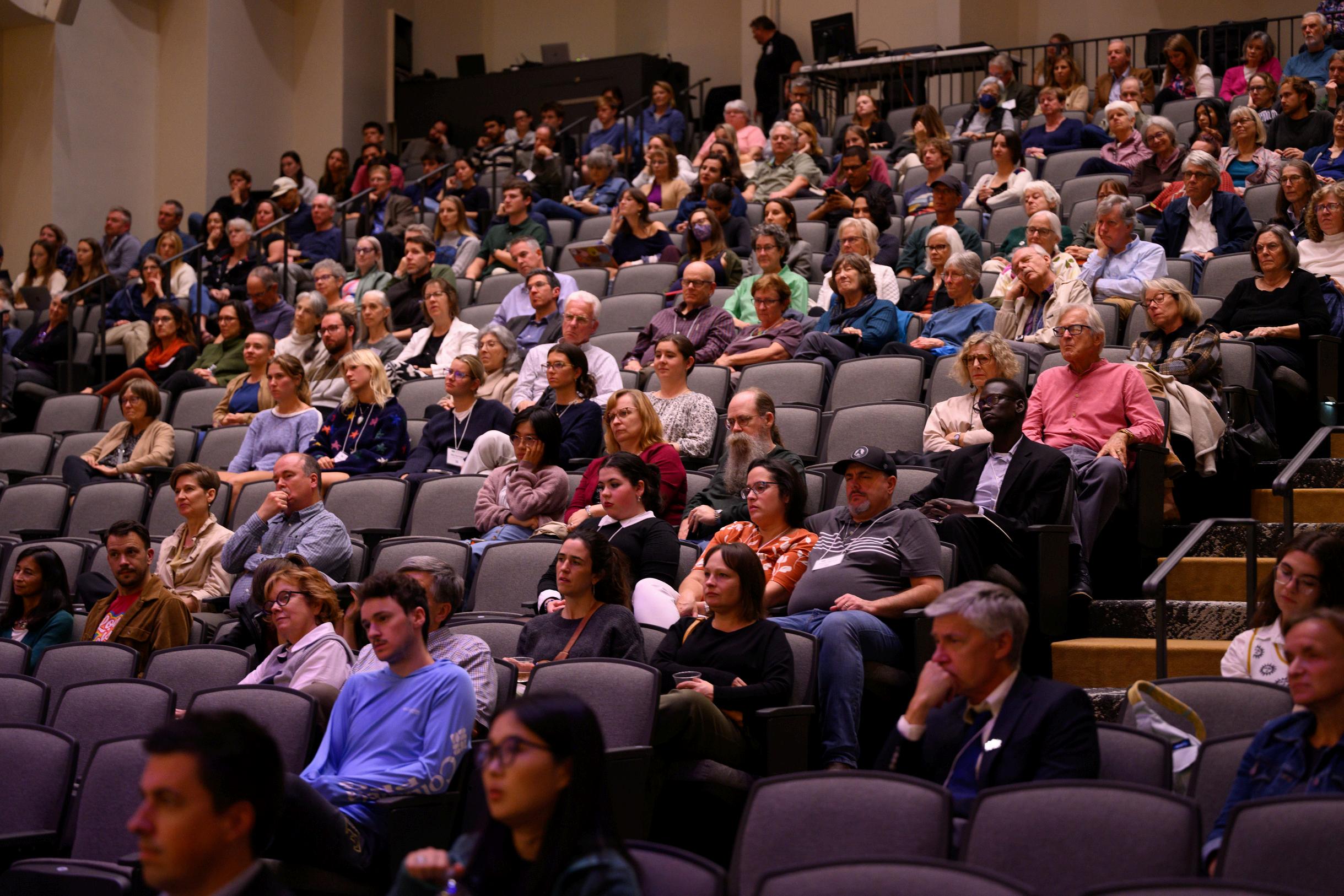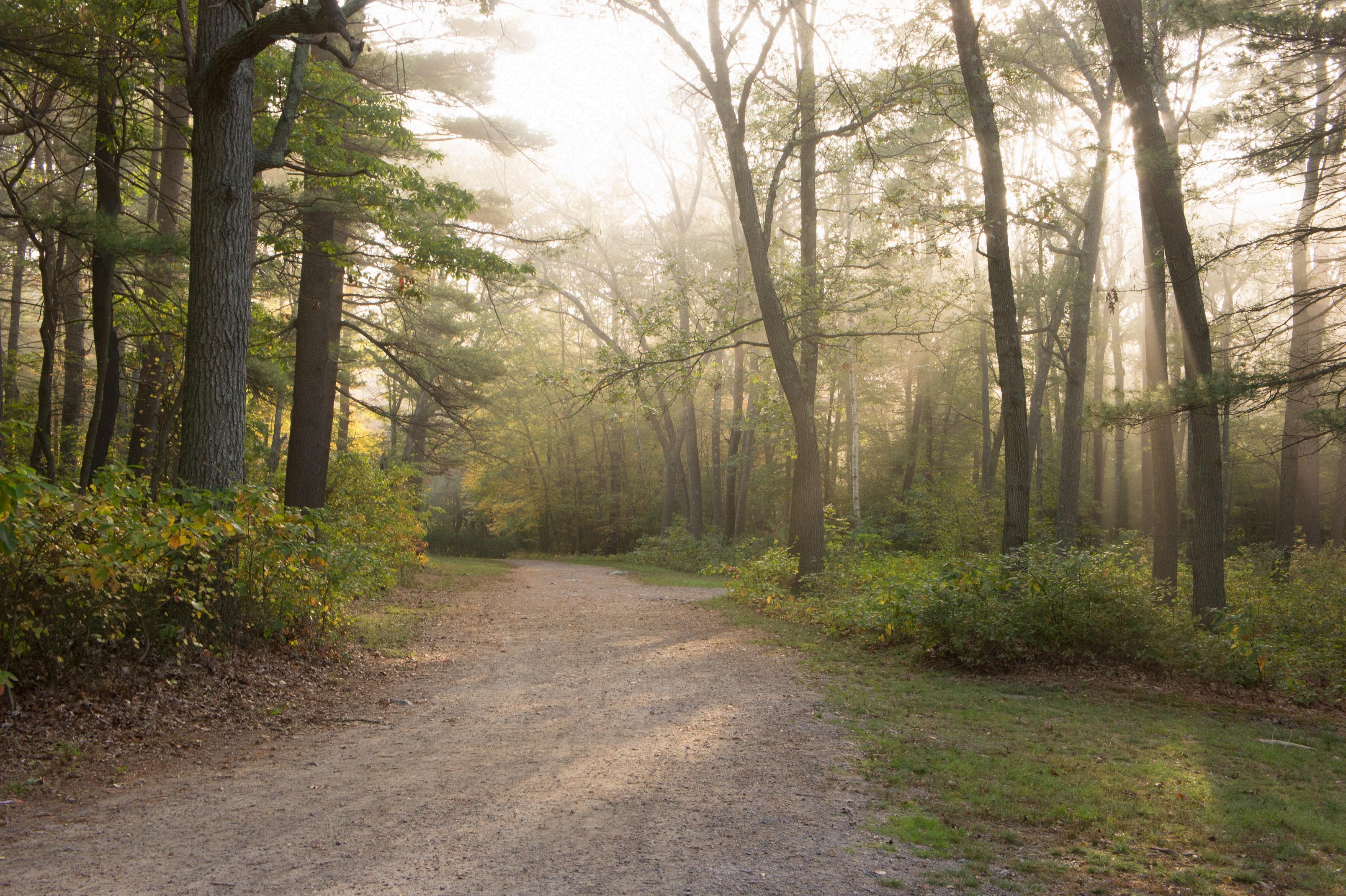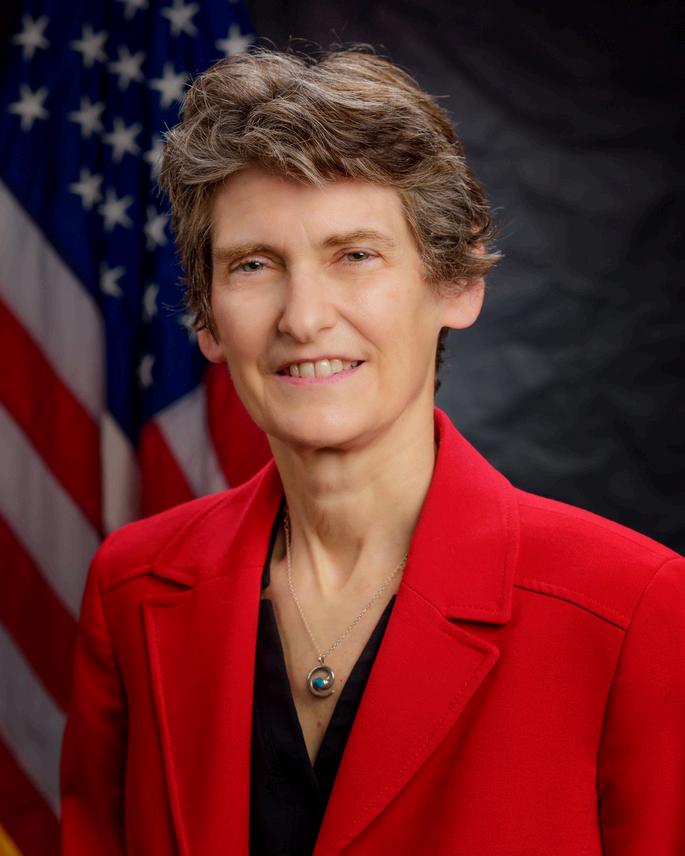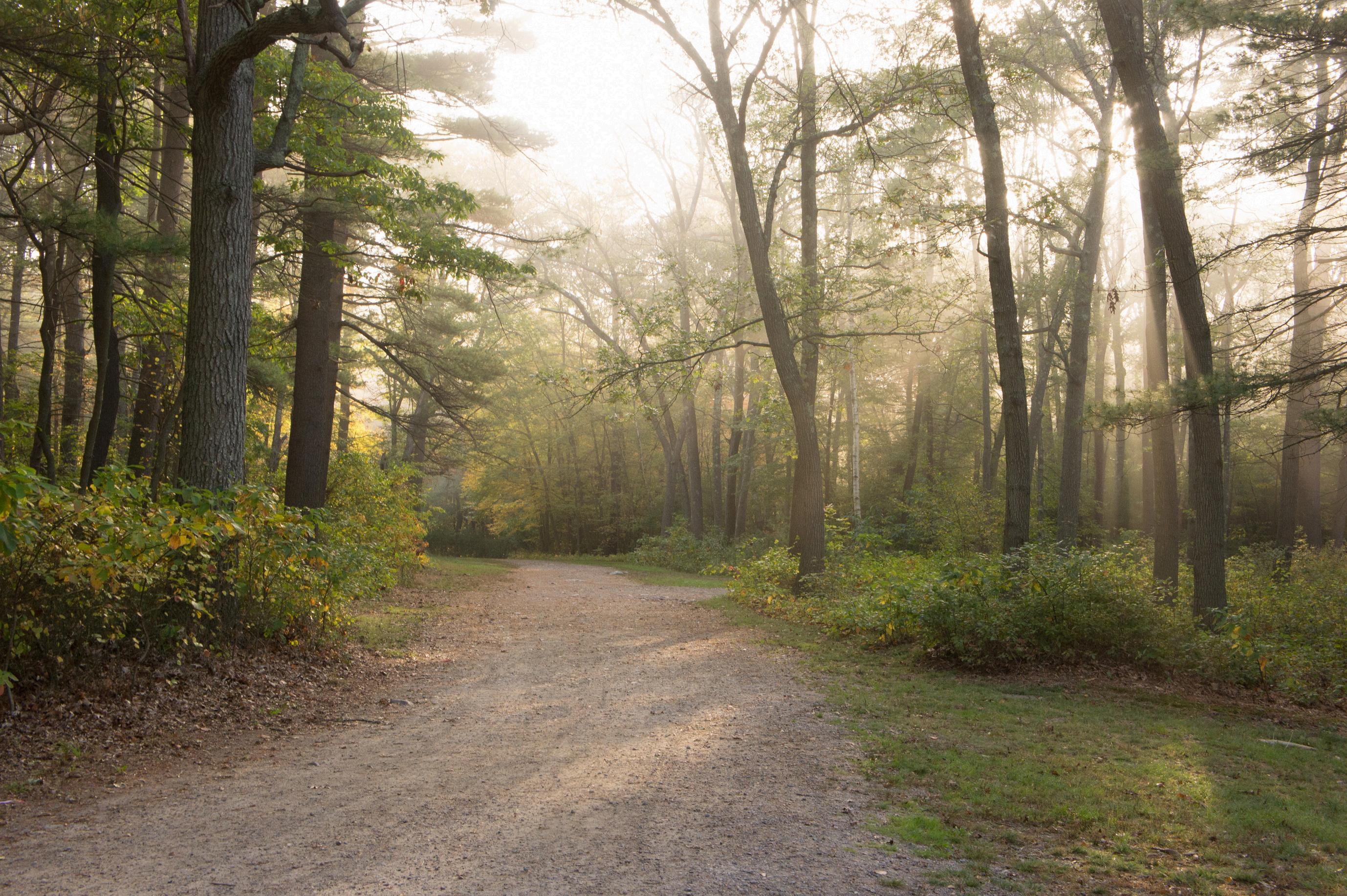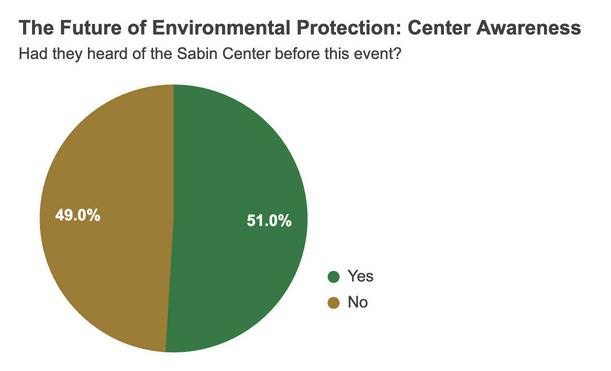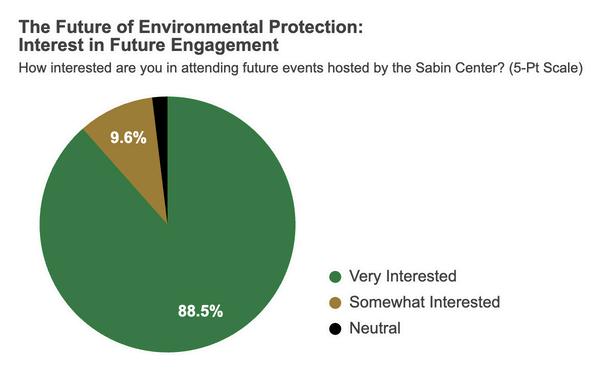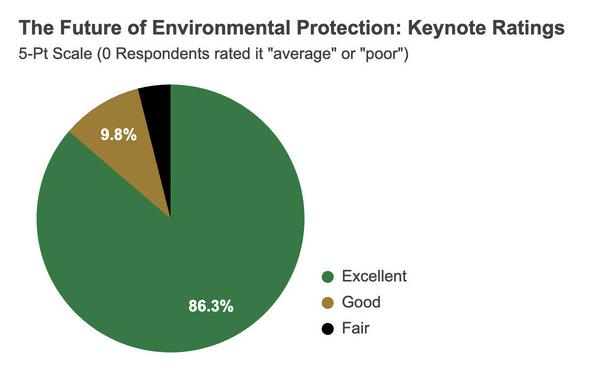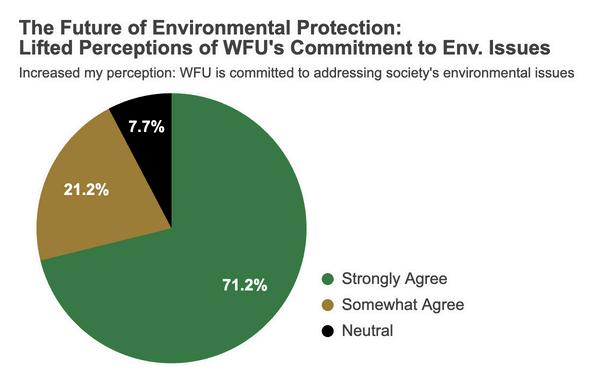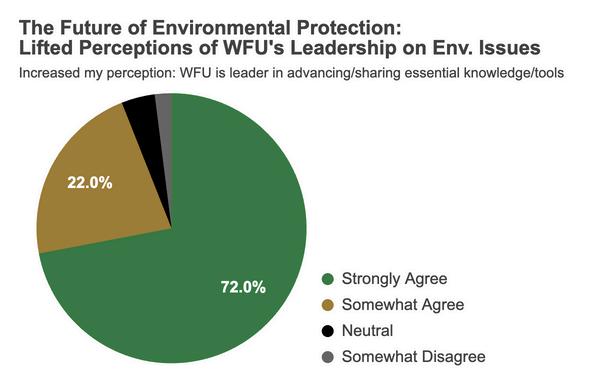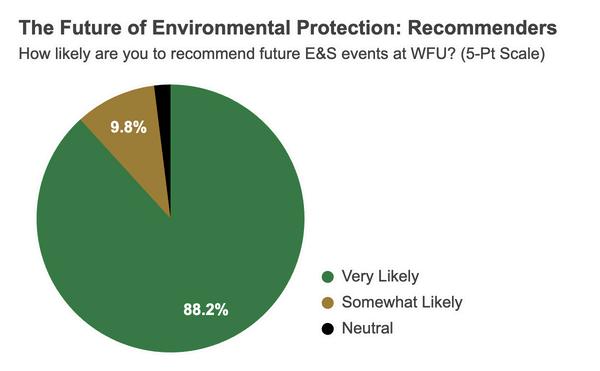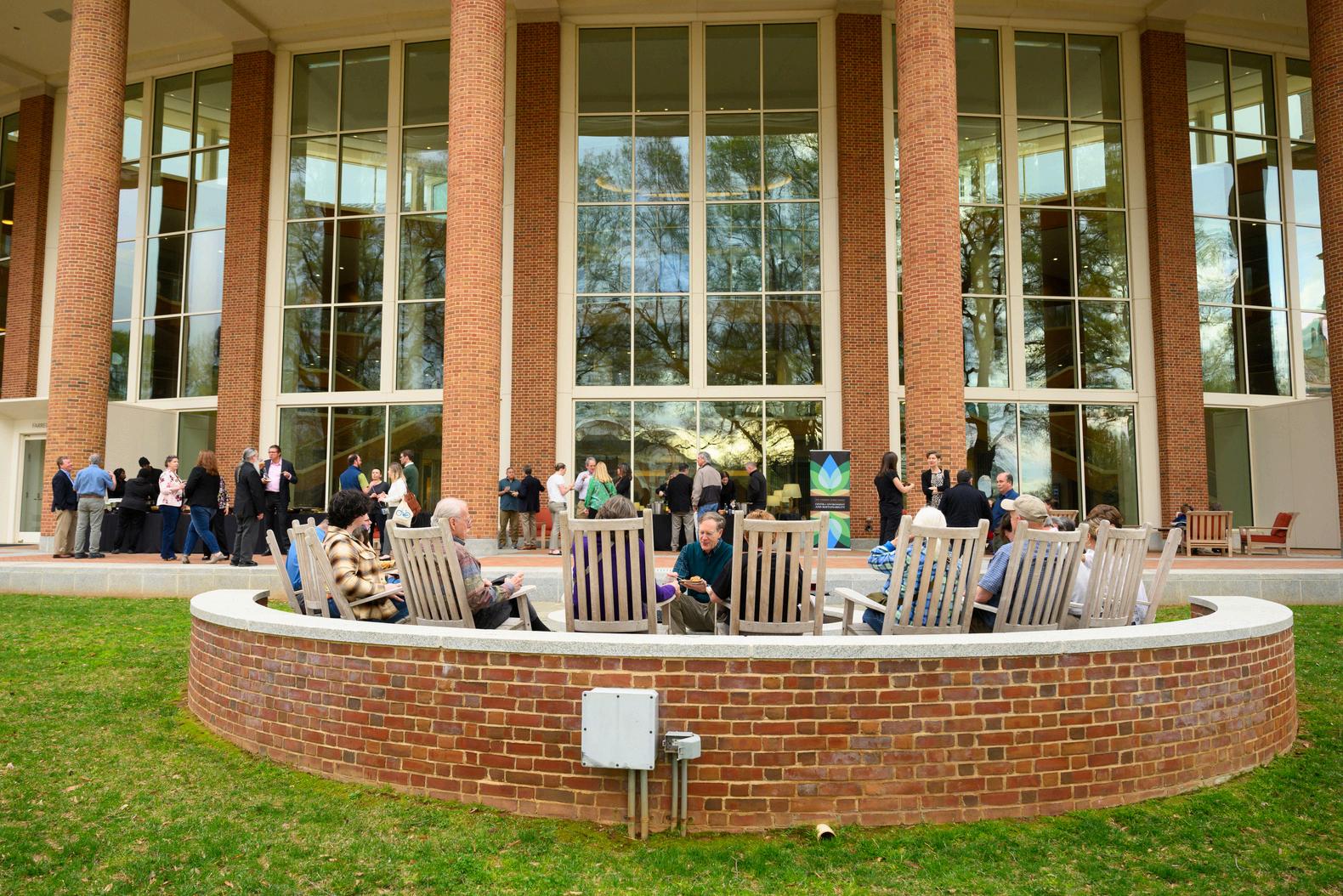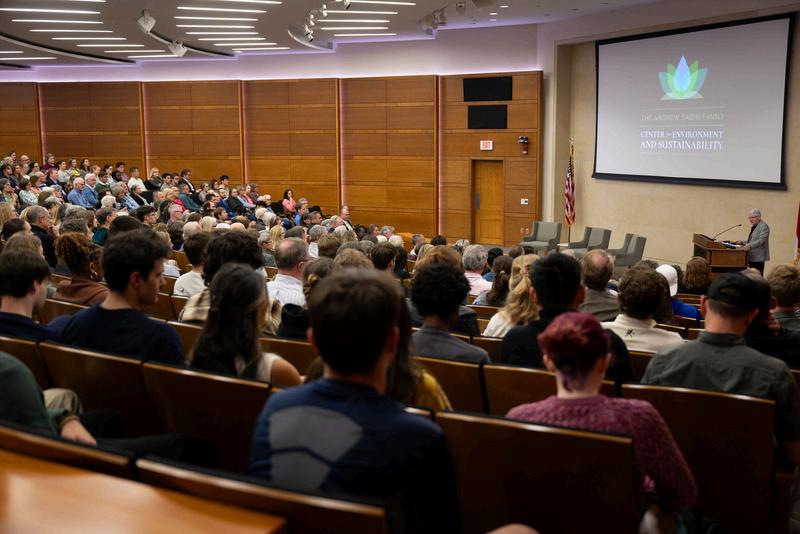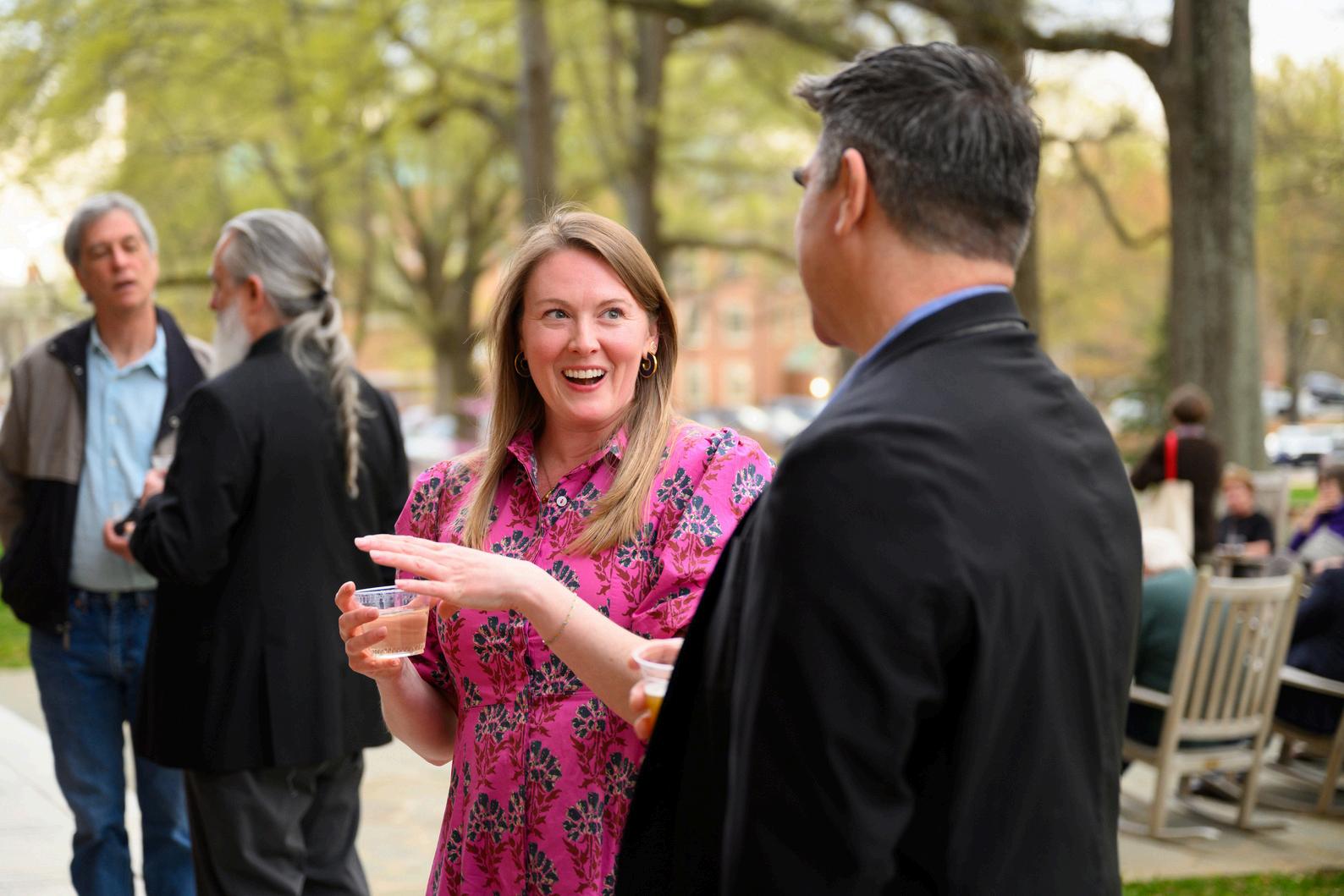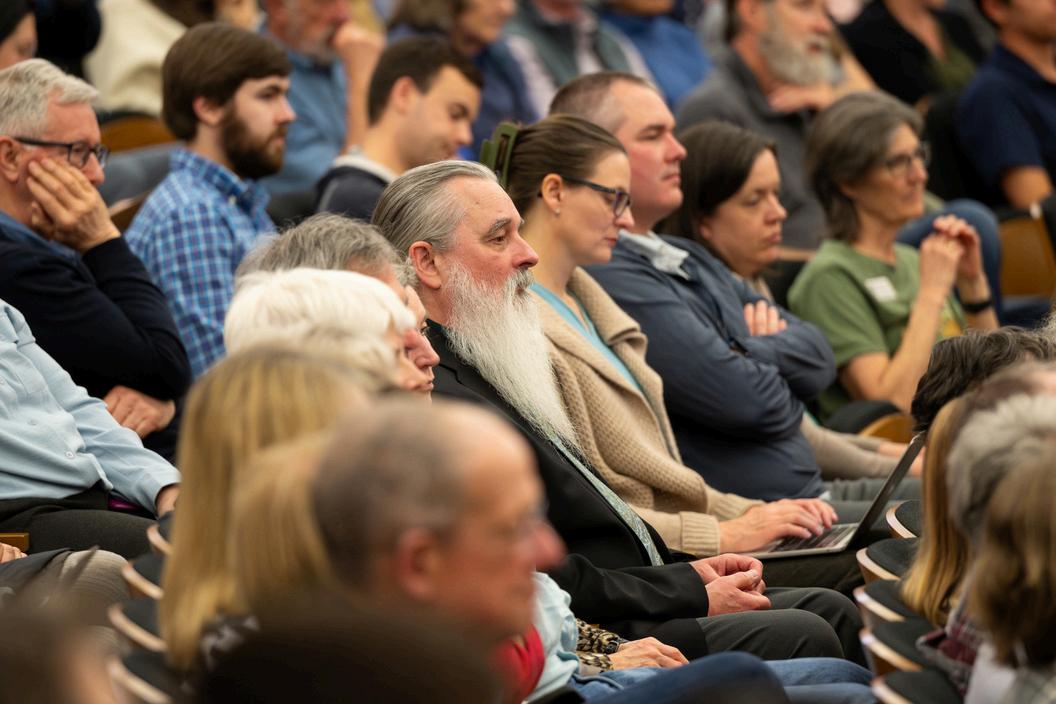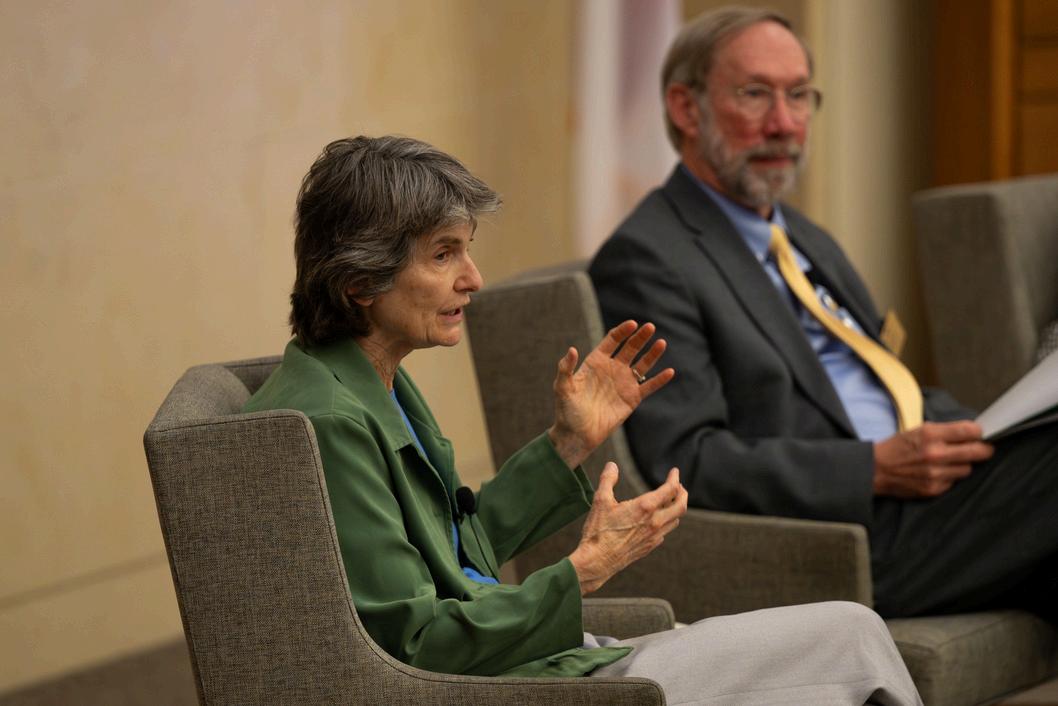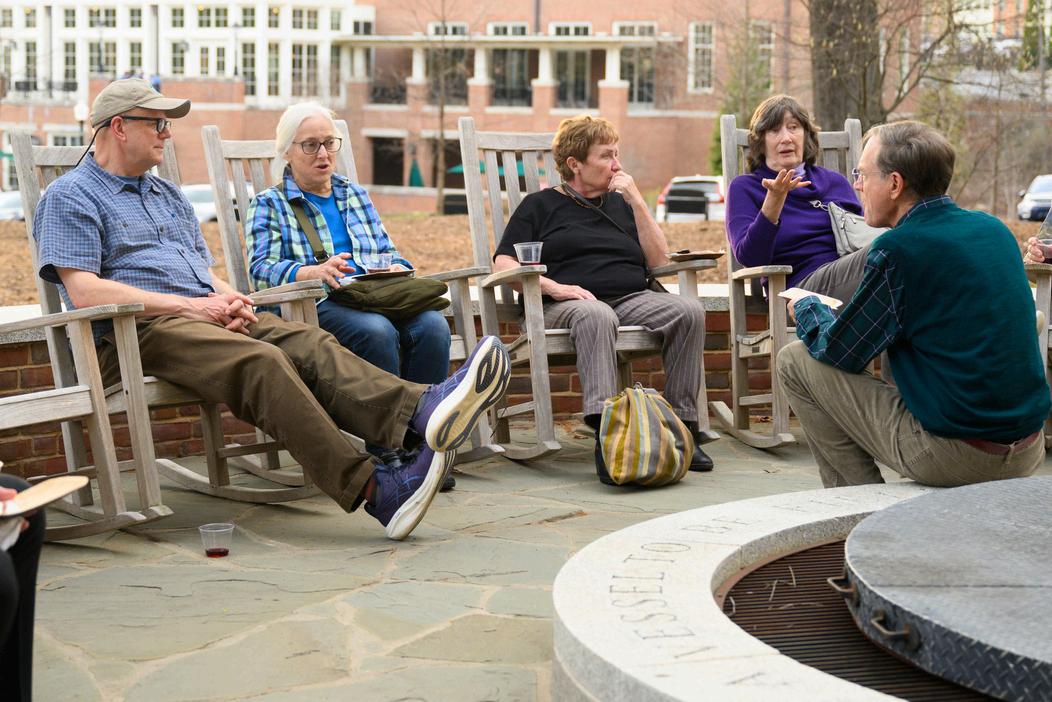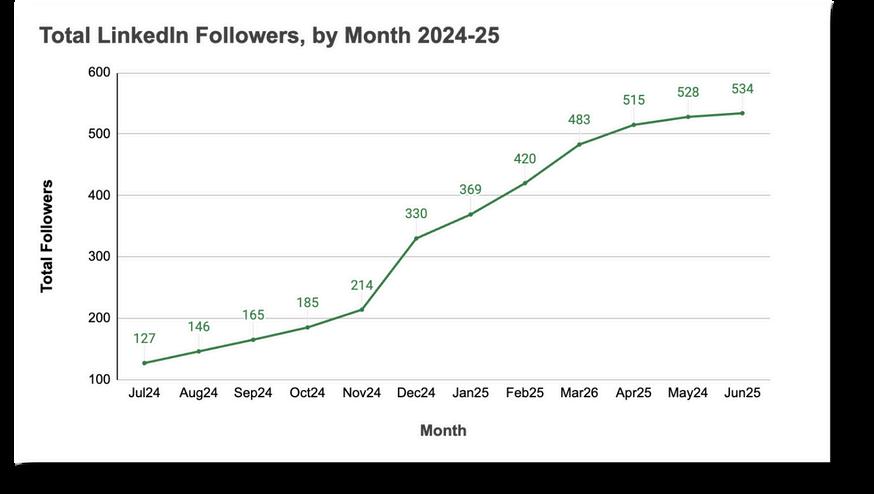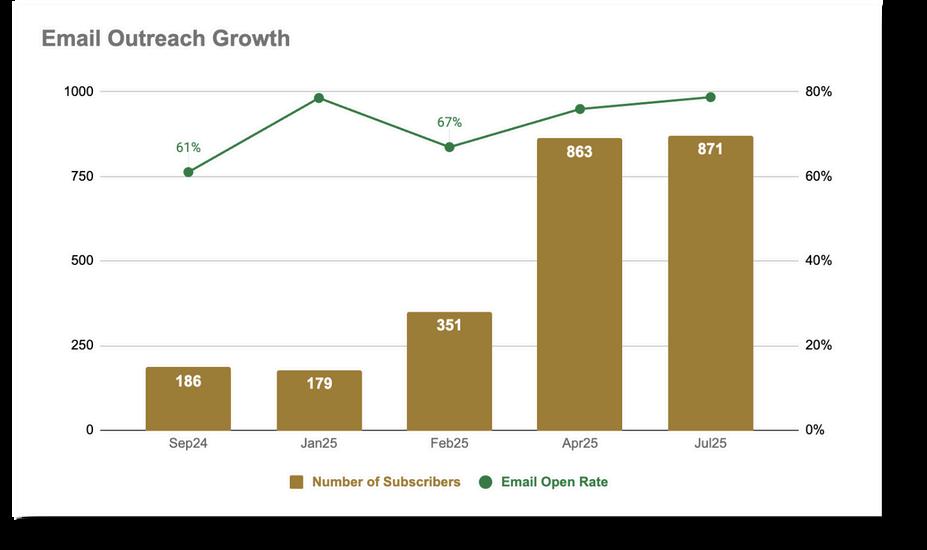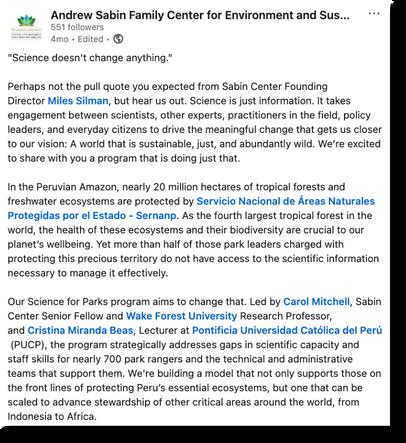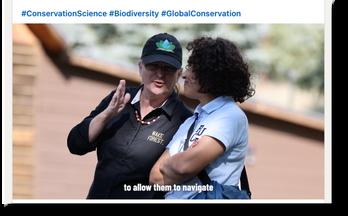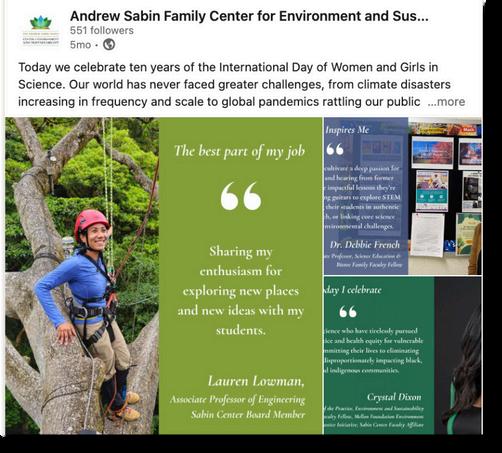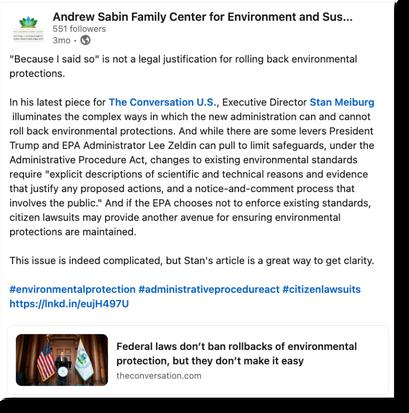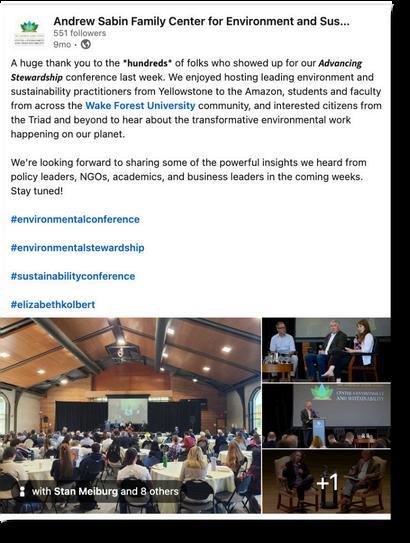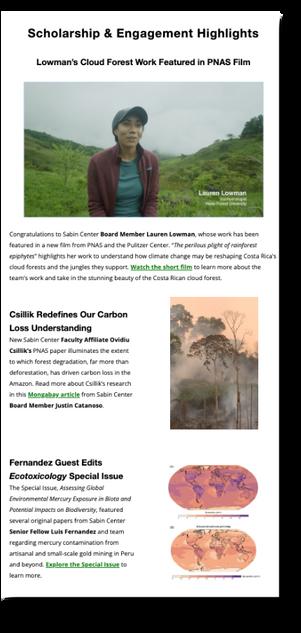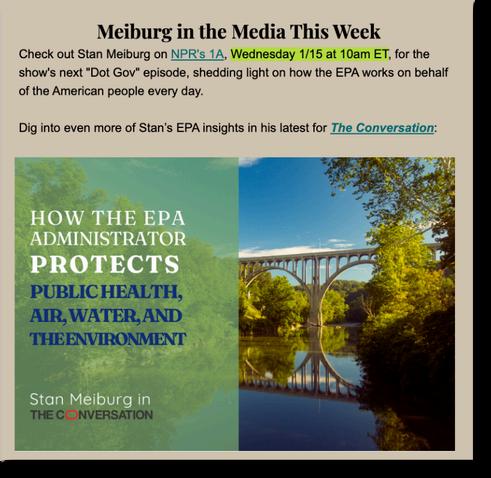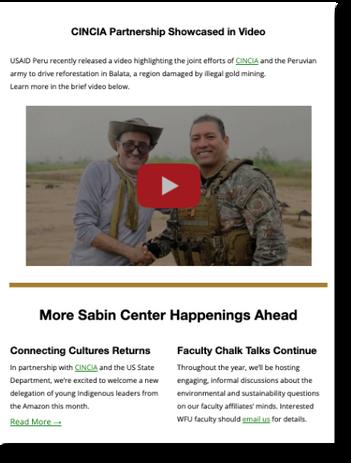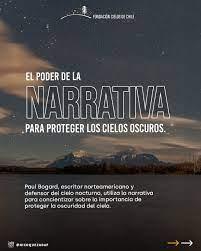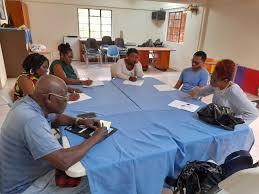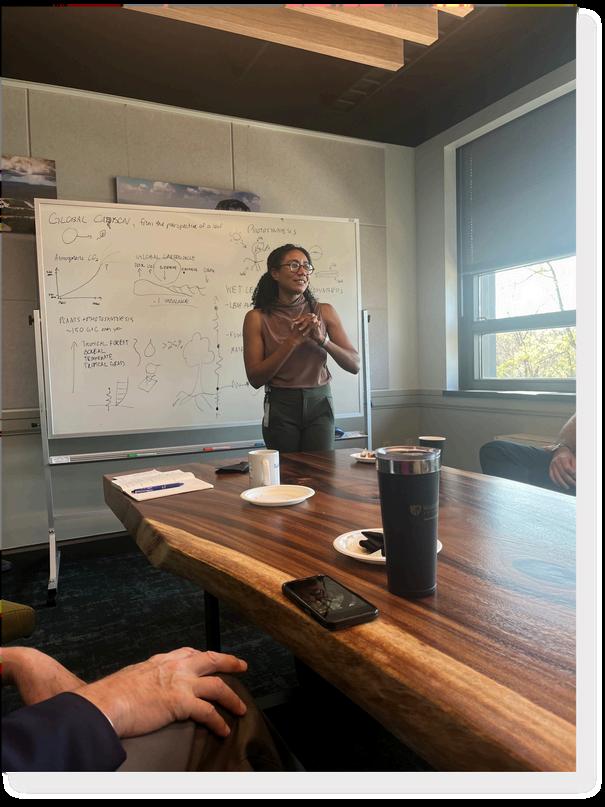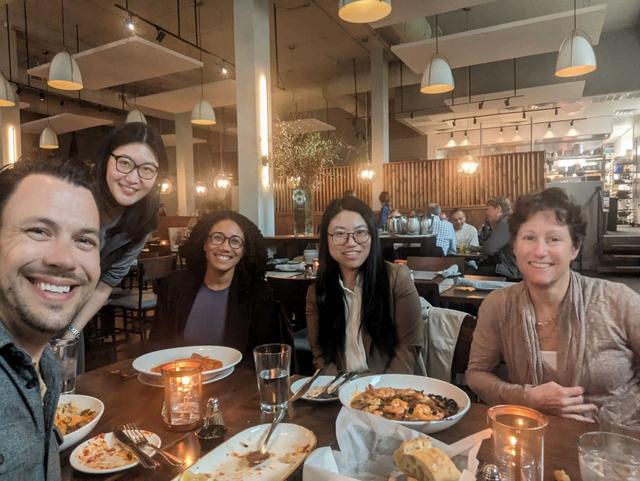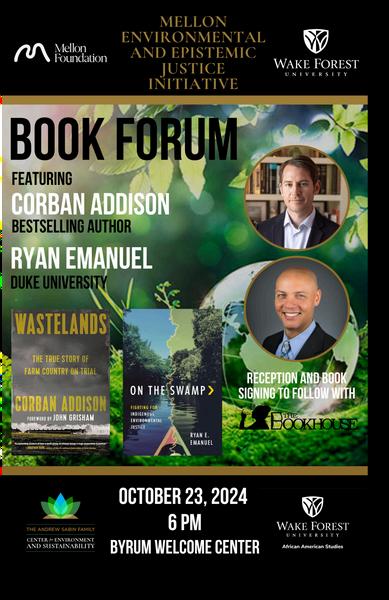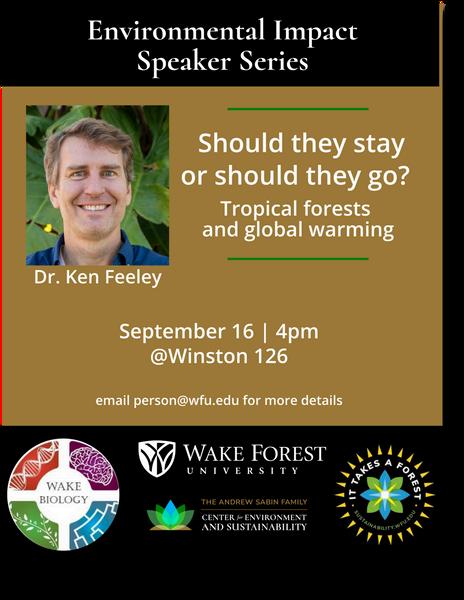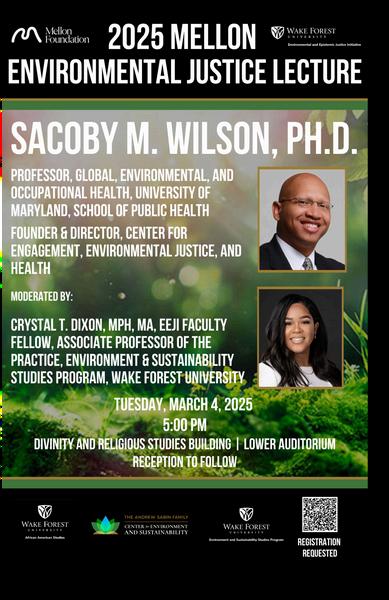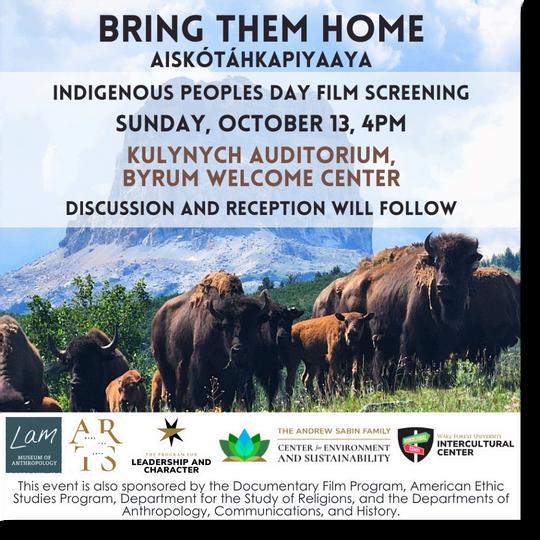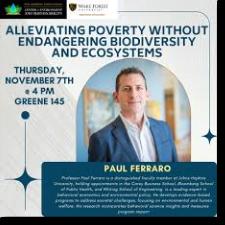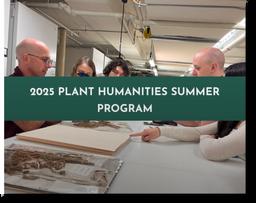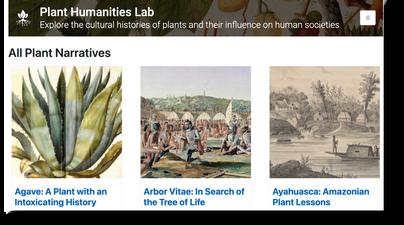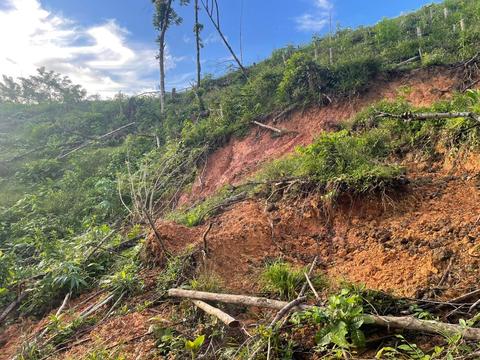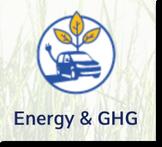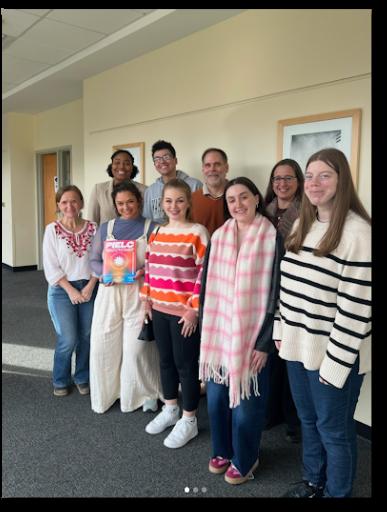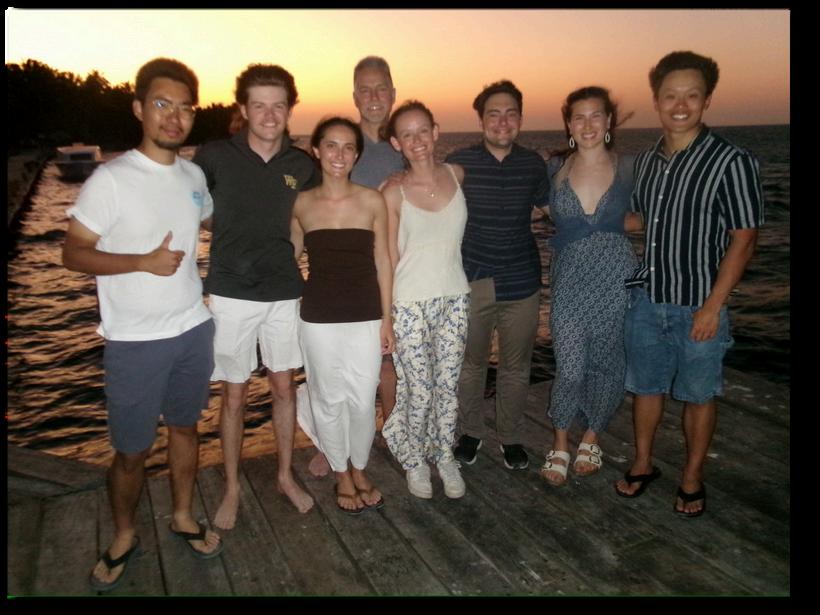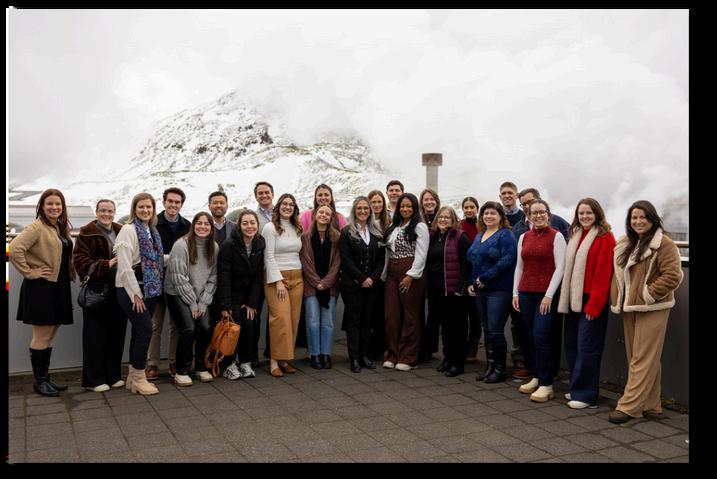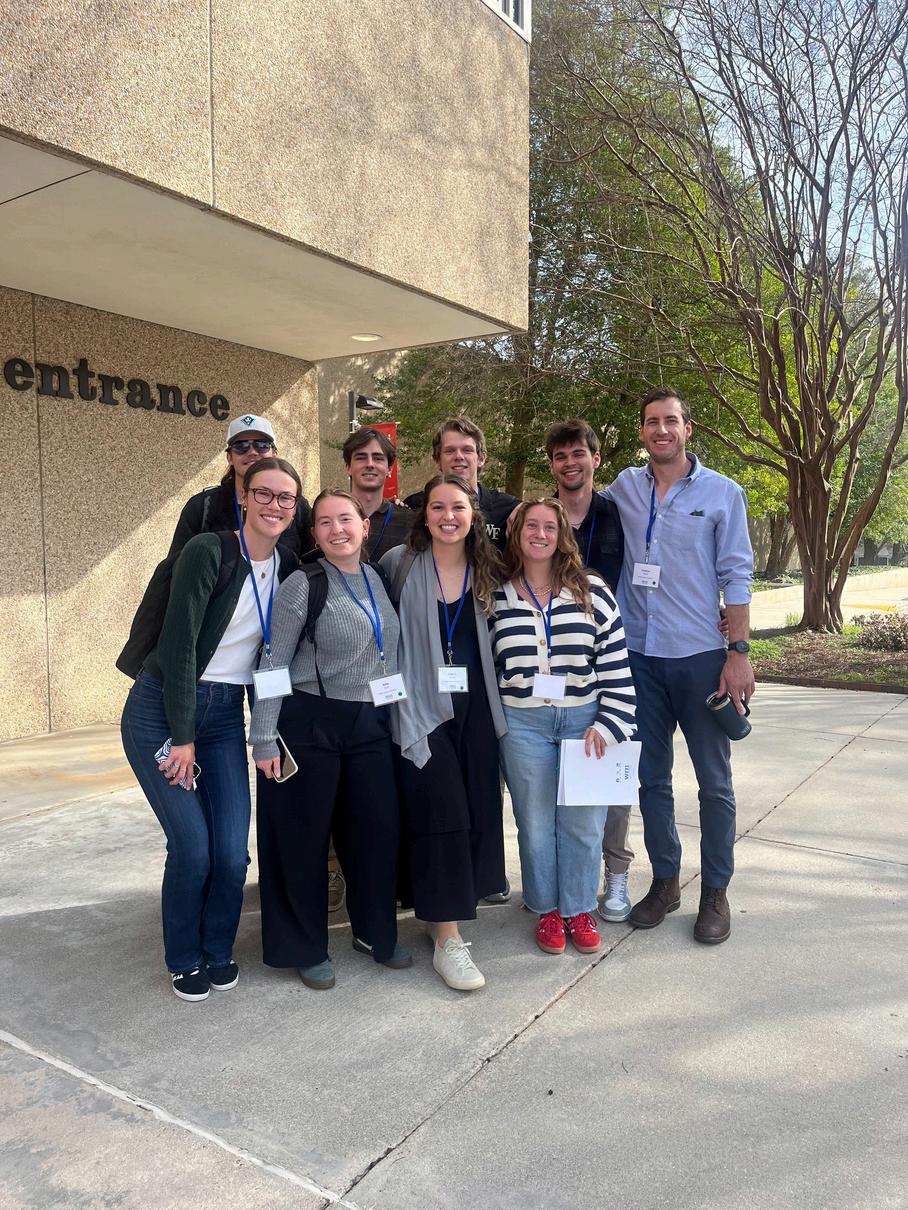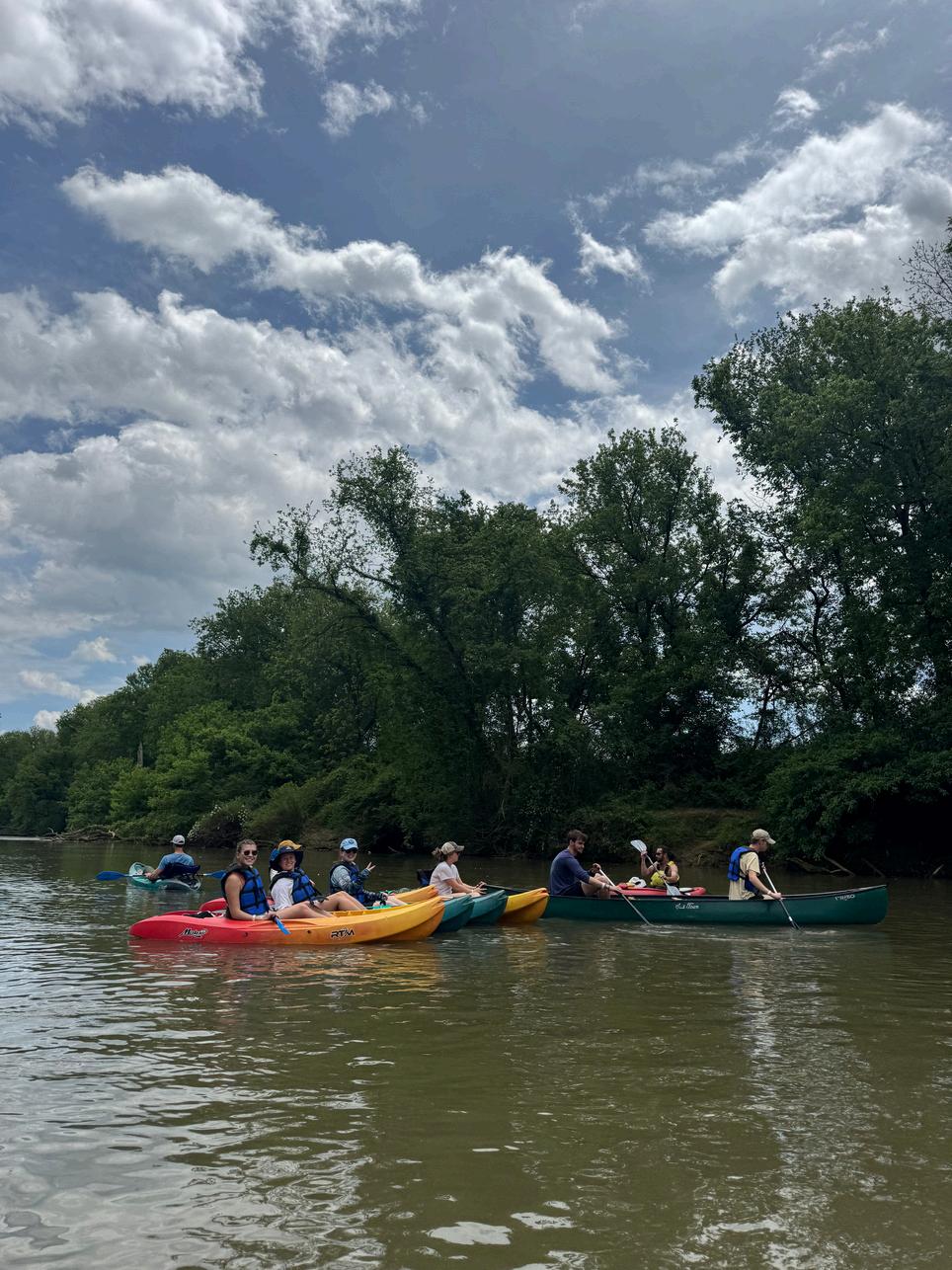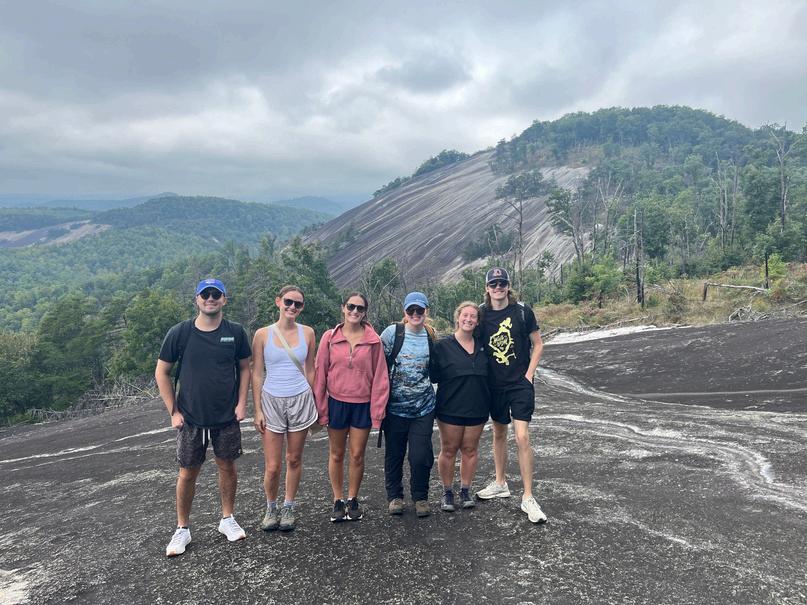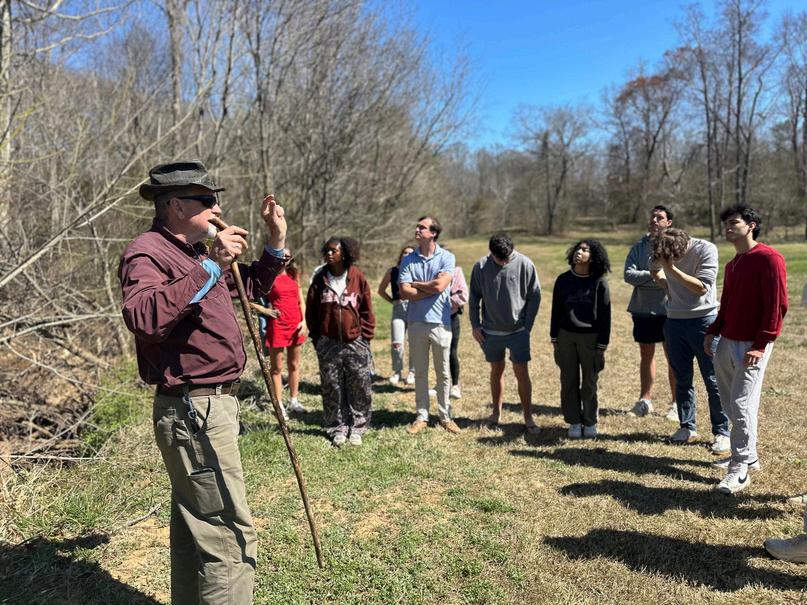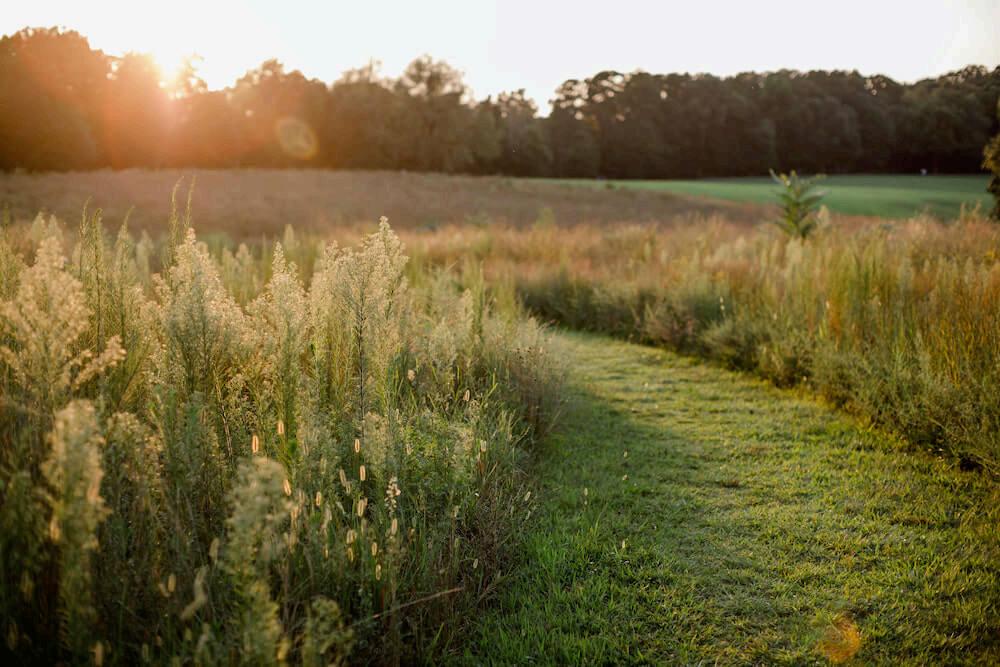II. Annual Goals and Objectives
II-A. Evaluating our progress against 2024-25 goals and objectives
In last year’s Annual Report, we identified four core objectives for the coming year: 1) Elevate the Center’s presence at WFU and beyond; 2) Support new research projects, including through seed grants; 3) Support WFU education; and 4) Advance environment and sustainability collaboration statewide.
Reflecting on the past twelve months, we see significant progress across all objectives.
1) Elevate the Center’s Presence at WFU and Beyond.
We’ve enjoyed significant success in establishing our presence and serving as a powerful ambassador for the University’s commitment to environment and sustainability efforts, as both a leader in developing and sharing knowledge and a partner to the local, regional, national, and global communities. As described in our Success Summary, we hosted highimpact events in the fall and the spring that reached diverse audiences, including hundreds of citizens, students, faculty, and staff. We’ve also utilized multiple communications channels to grow our reach and have hosted several informal opportunities for engagement across the University.
⏵ Events. Our October conference, Advancing Stewardship, welcomed 12 leading practitioners, representing federal government, global, national, regional NGOs, and industry voices, as well as Pulitzer Prize winner Elizabeth Kolbert for our keynote. Of the 584 registrations, 39% were students, 19% were faculty and staff, and 40% were engaged citizens and practitioners from the region. We saw 100-150 attendees at each of our Thursday panels and nearly filled the Brindle Auditorium for the keynote. Feedback was overwhelmingly positive, both in our follow-up survey and anecdotally. The Future of Environmental Protection, our March event with Gina McCarthy and Janet McCabe, was equally successful. We filled the Broyhill Auditorium for the keynote and moderated discussion in the evening, with 359 registrations: half of the audience were citizens and practitioners, roughly a third were students, and the rest were WFU faculty and staff. For both events, we also created several opportunities for more direct student engagement with our esteemed guests, through specific course outreach, open discussions, and small group meals. Both events received highly positive feedback, with over 50 people responding to our feedback surveys for each event. The vast majority rated our events highly and stated that the programs increased their perceptions of Wake Forest University as dedicated to addressing and a leader in advancing and sharing the knowledge critical for environmental and sustainability challenges.
⏵ Communications Outreach. This year, we launched an email newsletter, growing our audience to 884 subscribers. We also send out timely communications regarding events and opportunities, as well as targeted outreach to Faculty Affiliates. We typically see open rates of over 70% for our emails. We’ve established a presence on LinkedIn, growing our audience to well over 500 followers and reaching over 17,000 members in our organic
posting over the past year. This summer, we plan to establish a presence on Facebook and re-engage on Instagram. We are also updating our website and will continue to incorporate more robust content.
⏵ Media Presence. The Center has added its voice to the local and national conversation, with Stan Meiburg alone participating in nearly 100 media interviews. He had an op-ed published in the Atlanta Journal Constitution, and was featured in NPR’s 1A. Our Connecting Cultures program was featured on WFDD in September. Research from our leadership, Board, and Faculty Affiliates has also received significant press coverage, ranging from leading research platforms like Science Magazine to The Conversation and even The Weather Channel.
⏵ Community Engagement. We’ve grown our relationship with the City of Winston-Salem this year by launching a student fellowship with the city’s Sustainability Department. We continue to engage with a broad range of stakeholders through our participation in the Piedmont Environmental Alliance, a role that Kate Hanley is stepping into as Stan Meiburg retires. Stan continues to judge the PEA’s annual debate tournament. Kate is also deepening our connection with the Piedmont Land Conservancy and the Forsyth Audubon through participation in their programming, including the PLC’s Master Naturalist course. Following up on his role on Verger Capital Management’s Sustainability Task Force, Stan was invited to continue as a member of the Verger Board of Advisors. Stan also joined with Associate Provost Matthew Phillips in presenting a series on “This Fragile Earth: Sustainability and Creation Care” at St. Paul’s and St. Anne’s Episcopal churches
⏵ Informal Campus Engagement. We continue to create opportunities for faculty across the University to connect with each other both socially and intellectually. Our Sabin Suppers are sponsored dinners out in the community for 3-5 faculty members from diverse disciplines to get to know each other better. Our Chalk Talks feature faculty sharing their emergent thinking with faculty from beyond their discipline, creating an opportunity to “kick the tires” on new theories, frameworks, or questions with diverse perspectives.
2) Support New Research. Supporting and promoting environmental and sustainability research continues to be a core focus of the Center.
⏵ Increased Visibility. We’ve leveraged our growing LinkedIn presence to highlight the research achievements of the Center and its programs as well as the achievements and expertise of our Faculty Affiliates. For example, sharing publication and media coverage of mercury poisoning research from CINCIA, featuring faculty affiliates in the media like Board Member Lauren Lowman’s explainers on wildfires, or highlighting the expertise of Faculty Affiliate Courtney Di Vittorio in a World Water Week post. We also highlight these accomplishments in our bimonthly newsletter, which is sent out to hundreds of contacts.
⏵ Seed Grants. We funded two seed grants this year. Sabin Center Fellow Paul Bogard received funding to support research travel to Chile for his upcoming book, How to See
the Sky: The Newest Science, the Oldest Questions, and Why They Matter for Life. Wake Forest Engineering Assistant Professor Hussein Abdeltawab received the other seed grant to support equipment for his research project, State of Charge and Remaining Life Identification for Sodium-Ion Batteries using Federated Machine Learning. Although these were fewer grants than we had planned, due to our unexpected budget reduction with the loss of USAID funding, we plan to increase them in the coming year.
⏵ CINCIA Achievements. Our team at CINCIA has made substantial contributions to the science, policy, implementation, and outreach surrounding the human and environmental impacts of artisanal and small-scale gold mining in the Peruvian Amazon this year. Their breakthrough scientific advances include two landmark mercury exposure studies in both heavily impacted mining zones and regions only beginning to experience encroachment generating data aimed at changing the trajectory before it’s too late. The team developed novel landscape restoration and biomonitoring tools and worked to scale them through partnerships with governments, the military, and global agencies. At the same time, CINCIA invested in training and mentoring a new generation of local scientists and Indigenous leaders, equipping them with the skills and the knowledge needed to defend their territories and shape the future of Amazonian environmental governance. Full details can be found in Appendix VI.
⏵ Global Expansion. We had hoped 2024-25 would be a season of significant expansion for our global research efforts, including the expansion of our CINCIA model to new geographies. Indeed, we made significant progress, with a USAID partnership for biofuels in Namibia proposal approaching approval just before the new administration decimated USAID programming and severely reduced research investments more broadly. We had also made significant progress on a promising extension of our CINCIA funding with USAID elsewhere in Africa, but those plans are now scrapped. We are now focusing on new funding opportunities for CINCIA in Peru, and continue to see Africa as an area of growth for the Center.
⏵ Science for Parks (SFP). Science for Parks (SFP) is a key component of the Sabin Center's global conservation model focused on integrating science, governance, and social equity to support the effective management of protected areas, indigenous lands, and working wildlands. In Peru, SFP partners with the national parks service (SERNANP) to improve access to scientific information for staff responsible for managing approximately 20 million hectares of tropical forests and freshwater ecosystems. Currently, more than half of SERNANP’s rangers and staff lack the scientific data needed to inform management decisions. To address this, SFP Peru launched a curriculum titled Science Governance for Peruvian Protected Areas, engaging participants from SERNANP and affiliated government, research, and academic institutions. The training included eight virtual sessions, a two-day in-person workshop in Peru, and a two-week technical visit to Yellowstone and Rocky Mountain National Parks, where senior Peruvian professionals learned about U.S. National Park Service management practices. In March, the initiative supported the co-development of a Roadmap for Science Coordination for Protected Areas
in Peru. This document provides guidance for an alliance of eleven government agencies, universities, and research institutes working in three highly biodiverse regions: the Amazon lowlands of Loreto and the Andean-Amazonian regions of Cusco and Madre de Dios. Additional workshops and training courses have also been conducted over the past year. In September, a second Peruvian delegation is scheduled to participate in a technical visit to Yellowstone, Rocky Mountain, and Grand Teton National Parks, as well as to visit Wake Forest to interact directly with Sabin Center affiliated faculty, much in the same vein as Connecting Cultures.
⏵ Montauk Renewables. Our partnership with Montauk Renewables began in 2023 with the objective of exploring environmental outcomes from the use of pyrolysis technology to treat animal agriculture waste streams, a significant source of environmental concern in our state. That work continued into the past year, as Montauk acquired a pilot scale continuous feed pyrolysis unit, which would allow our researchers to further investigate how variables including temperature, residence time, and feed rates impacted the quality of residual biochar, biogas, and bio oils from the pyrolysis process. Our primary partner at Montauk, Joe Carroll (‘83, ‘91), left Montauk partway through the year, and our work with Montauk has wound down. However, it was a compelling initiative demonstrating the huge potential of our renewable energy expertise, and we look forward to future opportunities to explore this environmental challenge as well as to partner with Joe Carroll in his future endeavors.
3) Support WFU Education. Two of our specific objectives in support of this goal were to expand student fellowships beyond ENV majors in support of the University’s strategic vision to create substantive experiential-based offerings to engage students across courses and programs and to extend our student fellowship opportunities through a partnership with the City of Winston-Salem. We are pleased to report that we awarded funded fellowships with the City’s Department of Sustainability to two students: Aidan Norris, a graduating Engineering and Physics student who will be going on to work with the Peace Corps after his summer with the City, and Natalia Adams, a Politics and International Affairs major with an interest in environmental policy. We also awarded student fellowships to Thais Perez, a History major and Latin American Studies minor, and Anna Kalbas, a Politics and International Affairs major and Environmental Studies minor. Finally, we are thrilled to report that, through partnering with Elizabeth Marsh in Advancement, we have secured an annual fund of $5,000 to support conservation fieldwork..
4) Advance Environment & Sustainability Collaboration Statewide. Our two areas of focus in this regard were to secure funding for the proposed Environmental Leadership Institute of North Carolina (ELINC) and to continue advancing the NC Clean Future initiative.
Environmental leadership Institute for North Carolina (ELINC)
Last year’s report described our efforts to advance the Environmental Leadership Institute of North Carolina (ELINC). Modeled on the Institute for Georgia Environmental Leadership, ELINC would bring together emerging North Carolina leaders from a variety of sectors,
geographies, and perspectives for an immersive program that delivers world-class leadership development, expert environmental education, and opportunities to collaborate on the most critical environmental challenges facing our state.
While we have crafted a compelling vision for ELINC, we have always known that a significant funding source will be needed to make ELINC a reality. Last summer, we learned that the Z. Smith Reynolds Foundation was opening a call for proposals to promote “StateLevel Systemic Change,” and it seemed that ELINC was a perfect fit for this. After consulting with the Provost, we determined that the dynamics of the Wake Forest relationship with the ZSR Foundation did not support a Wake Forest application. Undaunted, we discussed the program with Catawba College, and they enthusiastically decided to apply for a $250,000 grant, which we supported. We were encouraged when the application reached the second round of review and had what seemed to be a very positive site visit from the Foundation. Unfortunately, we learned in November that the Foundation did not select this application for funding. The vision remains compelling, but new funding or partnership strategies will be needed to bring this vision into reality.
NC Clean Future
We noted in last year’s report that this year would be pivotal in the NC Clean Future partnership with Catawba College. This was the second year of our partnership, where a very modest contribution from Wake Forest and a larger one from Catawba leveraged over $370,000 in funding over two years from the Green South Foundation.
The NC Clean Future program focused on three areas: Private Colleges and Universities, Small and Medium Enterprises, and Communities of Faith. Significant events occurred this year in all three areas.
⏵ NC Clean Future held two meetings this year with the assistance of the North Carolina Independent Colleges and Universities. The first, on July 25th, provided a primer on how colleges and universities could take advantage of the incentives provided by the Inflation Reduction Act. The second, on December 17th, was a convening of sustainability directors at NC private colleges and universities, this time at High Point University, following up on the first such meeting last year at Salem College. In both meetings it was clear that the range of sustainability engagement among schools is broad, with some schools having extensive programs while others are just getting started. Renewable energy and conservation topics played a large role in both meetings.
⏵ On October 23, NC Clean Future, together with the Center for Private Business (CPB) at Wake Forest, hosted a Lunch ‘n Learn for Center members entitled “The Strategic Argument for Sustainability.” This event drew more participants than any other CPB event this year.
⏵ On September 27th, Catawba hosted a workshop entitled, “What if Caesar Paid Unto You?”, about how churches can use funding from the Inflation Reduction Act (IRA) to do clean energy projects. In addition, both Stan Meiburg and John Morrison of Catawba participated in podcasts by “Christians Caring For Creation,” a group specifically aimed at evangelicals concerned about climate change.
Unfortunately, we learned in late January that the Foundation was unable to renew the grant for a third year. The stated reason cited another casualty of the election, “uncertainties surrounding federal funding for climate change initiatives, which is critical to the project's current strategy and theory of change.” But we also believe that the priorities of the Foundation changed to focus more on land conservation in Western North Carolina. Fortunately for this area, the Foundation has continued to support local environmental reporting by the Winston-Salem Journal and Greensboro News-Record. But absent a new funding source, the NC Clean Future initiative appears to be on indefinite hiatus.
II-B. Setting Goals and Objectives for 2025-26
The Sabin Center has spent 2024-25 establishing its presence at WFU and beyond, setting a bar for convening leaders in the field, facilitating public discourse, amplifying research impacts, and expanding student opportunities for experiential learning and growth within the environment and sustainability space. The Center is also undergoing significant change. Alongside its peers at WFU and other academic institutions, as well as organizations dedicated to addressing critical environmental challenges, the Center has lost significant funding and support due to federal policy changes. Additionally, with the University’s strategic visioning process underway, the Center eagerly anticipates potential changes to the University’s environment and sustainability ecosystem that may impact its role. We are excited to see what comes next and how the Center can contribute within that new framework, and we have to continue to move forward in the interim. In the next year, we will invest in foundational infrastructure and governance needs and work to secure the operating resources necessary to achieve the purposes for which the Center was established. We will also continue advancing our core focus areas around research, engagement, and education.
1)
Infrastructure and Governance.
⏵ Transitioning Internal Leadership. In addition to the University-wide change, the Center itself is facing transition. The first Executive Director of the Sabin Center, Stan Meiburg, retires effective June 30, 2025. We do not currently have sufficient budget to recruit a new Executive Director at a competitive salary. We are fortunate to have Board Member Scott Schang as our Interim Director for this coming year but will need to work toward a permanent Executive Director. To do that, we must finalize a three- year budget that can support the position and clearly articulate the position’s role so that we can recruit the best fit moving forward. It’s also an opportune time to revisit the roles and responsibilities of our Board of Directors. To get the most out of our Board, while ensuring it’s a rewarding and productive experience for Board Members, we must be clearer about the Board’s role in our governance, finances, and programming. Finally, we have begun efforts to clarify the roles and current members of our Faculty Affiliates but will need to fully articulate the benefits and expectations of faculty engagement, as well as for External Fellows.
⏵ Identifying New Funding Model Opportunities. Given the loss of significant indirect funding sources, we need to develop a new funding model for the Center to achieve its purposes. In the past year, we have offered support to Advancement for environment-and sustainability-specific development efforts through both ideation (e.g., proposed donorexclusive activities to pair with our Advancing Stewardship conference) and communications support (e.g., a one-pager snapshot of our work designed to support Advancement outreach). More recently, we enjoyed partnering with Elizabeth Marsh in her successful efforts to obtain student fellowship funding from donor Lois Cassidy. We hope it will serve as a model for further partnerships with the Advancement team. In the meantime, we are actively pursuing grants and funding from established and new sources,
including the Gordon and Betty Moore Foundation, National Science Foundation, and the International Foundation.
⏵ Contribute to the University Environment and Sustainability Ecosystem. We look forward to learning more about the University’s next steps in harnessing the environment and sustainability ecosystem and believe that the Sabin Center will play an integral role in the ecosystem’s next chapter. As a proven catalyst for transdisciplinary research and engagement across the University’s schools, departments, and programs, we are wellpositioned to advance efforts to further integrate and amplify its efforts. Additionally, as the most external-facing part of the ecosystem, we have seized the opportunity to act as an ambassador for the University and all its stakeholders’ efforts in this space. The community response and feedback to our events to date underscore how essential this role is to achieving the University’s strategic goals of leadership and community partnership. We believe these strengths will only grow in a more holistic approach moving forward.
2) Elevate Center and University as leaders in the Environment and Sustainability space. In the coming year, we will build upon our momentum by hosting public events, expanding our communications and media presence, increasing our faculty engagement, and maintaining our relationships with the community around us.
⏵ Public Events. We are looking forward to continuing our public-facing event programming and have dedicated funding to at least one major conference in November, featuring a keynote from Jill Tiefenthaler.
Planned spending: $50,000
Specific objectives and metrics:
○ Fall Conference: 200+ Registrations, including at least 50 students.
○ Post-Conference content: We would like to plan for more strategic use of media from the conference, potentially partnering with students from documentary filmmaking for video cuts. Will also include planning on this with panelists as appropriate (i.e., explore partnering on a post-event essay, blog, or other reporting).
○ Potential Spring Conference on Sudd Wetlands: We have secured a $10,000 grant toward hosting this event. However, we will have to secure more than $50,000 in additional funding, given the need to bring several international travelers to our campus.
⏵ Communications & Media Presence. We will continue our momentum by leveraging our communications platforms for engagement within and beyond the University.
Planned spending: $7,500
Specific objectives and metrics:
○ Owned Media Platforms. We will maintain a consistent LinkedIn presence while establishing a presence on Facebook and Instagram. We will invite Faculty Affiliates to generate guest posts for our social media and/or our website as a way
to feature their expertise and create engaging/relevant content. Specific goals and metrics:
■ 8-10 posts/month on LinkedIn; 1-2x week for FB/IG
■ 5 faculty posts (for social media and/or website) during the year
■ Website blog posts at least 2x month.
■ Bimonthly newsletter (at least four within the academic year)
○ Media Presence.
■ Placement of 1-2 opinion pieces or explainers/articles by Sabin leadership, Board members, and/or Faculty Affiliates.
■ Continued presence in national/local media (we project a significant reduction in quantity with the departure of Stan Meiburg but will work to increase exposure for Miles Silman and Scott Schang.)
○ Marketing Materials.
■ Enlist help of UMC to generate at least one mailer promoting the Center to send to prospective donors and partners.
⏵ Faculty Engagement. Relationship development across the University is fundamental to our mission. With that in mind, we will continue investing in gatherings that provide intellectual stimulation and low-risk opportunities to connect on a human level.
Planned spending: $5,000
Specific objectives and metrics:
○ Host 4 Chalk Talks, including External Fellows as potential speakers.
○ Informal Engagement: Host 2 Sabin Suppers and 2 Happy Hours.
⏵ Community Engagement. We will continue our participation and outreach with the local community through supporting local government and actively participating in local environmental and conservation organizations like the Piedmont Environmental Alliance.
Planned spending: $6,000
Specific objectives and metrics:
○ Fund two City of Winston-Salem Sustainability Fellowships.
○ 100+ citizens at major public events (e.g., Fall Conference).
3) Support New Research. The Center will continue to invest in new and expanded research efforts. In addition to supporting and amplifying the work of our CINCIA and Science for Parks colleagues, as well as the research and scholarship of Faculty Affiliates, we’ll pursue two core activities essential to the pursuit of research given the federal funding cuts.
⏵ Faculty Grants.
Planned spending: $35,000
Specific objectives and metrics:
○ Faculty/Seed Grants: We hope to award 8-10 grants to faculty this year.
○ Amplifying Impact of Grants: This year, we will work with awardees to curate meaningful content coming out of their research and other Sabin-supported
activities by, for example, creating social media or website content and capturing photos and videos where relevant.
⏵ Grant Writing. We have initiated efforts with a contract grant writer and fundraiser with deep domain experience, Hannah Stutzman, to shore up existing programs like CINCIA, and we recognize that greater resources must be secured to fund the Center’s director, programs and new faculty research. This year, we will identify promising opportunities to partner with affiliated faculty on grants that advance the Center’s mission, with the goal of securing research funding for faculty and incremental funds via indirect for the Center. Planned spending: $20,000
Specific objectives and metrics:
○ Planned Grant Needs: We plan to apply for 6-8 new grants in FY26, including for the Sudd Wetlands conference, the Intelligent Remote Sensing in Conservation and Discovery Lab (IRSC), CINCIA, and Miles Silman’s Longterm Research in Environmental Biology (LTREB) grant renewal. We also plan to work with the broader University initiative to partner on additional, cross-campus funding opportunities.
○ Relevant Grant Applications Underway:
i) Wellcome Fund Burroughs Climate Health Excellence Centers (in partnership with Medical School Planetary Health team): $2M/year over five years. Program is designed to support research, application, and outward-facing work that helps to understand and address the relationship between climate change and public health.
ii) Nathan Cummings Foundation - Environmental Law & Policy Clinic: $500,000 over two years. The program seeks to fund initiatives in the Southeast that focus on racial, economic, and/or environmental justice.
iii) National Science Foundation Longterm Research in Environmental Biology (LTREB) - A Natural Laboratory for studying biodiversity, ecosystem function, and responses to climate change from Amazonian Lowlands to Andean Treeline. $450,000, Miles Silman. This is a 5-year grant that forms the backbone of the world’s central study system for understanding climate change effects on high diversity tropical montane ecosystems.
iv) Norwegian Agency for Development Cooperation International Climate and Forest Initiative. This grant has passed the initial phase and was one of 42 out of 680 proposals selected for full submission for 38 awards. Project is in partnership with the Amazon Aid Foundation will provide $1.29 million for CINCIA over 3 years ($630K / $640K / $650K), which is the highest dollar amount among the multi-country consortia. (These will be direct costs only and, because of NORAD requirements, is routed through our Peruvian arm, CINCIA.)
4) Expand Experiential Educational Opportunities. We will continue investing in experiential educational opportunities focused on environment and sustainability for students in the following ways.
⏵ Summer Fellowships: City of Winston-Salem. We look forward to renewing this new partnership with the City for the benefit of Wake’s students.
Planned spending: $5,000
Specific objectives and metrics:
○ Two student fellowships placed within the City’s Department of Sustainability (specific focus areas to be determined in collaboration with the City’s team)
○ Social media and/or website posts from students highlighting the benefits of their experiences with the City.
⏵ Summer Fellowships: General Environment and Sustainability Focus. As in years past, we will once again fund summer fellowships for students who have identified specific volunteer or research opportunities core to the space. While these have been historically focused on ENV students, in the past year students from outside ENV have been the primary applicants. Consistent with our belief that environment and sustainability issues will touch students’ professional lives regardless of their majors, we will continue to promote them with ENV students but will keep them open to a broader base of interested students.
Planned spending: $5,000
Specific objectives and metrics:
○ 2-4 student fellowships
○ Social media and/or website posts from students highlighting the benefits of their experiences
⏵ Fieldwork Fellowships: Coastal North Carolina/Conservation Focus. Our newly gifted current-use funds will enable us to expand our support for students seeking experiential environmental education. Specifically, the new gift is designated for students who wish to be out in the field, with a preference for North Carolina coastal conservation, especially at Bald Head Island.
Planned spending: $5,000 (from designated fund)
Specific objectives and metrics:
○ 2-4 student fieldwork fellowships
○ Social media and/or website posts from students highlighting the benefits of their experiences
Assessments
No formal assessments have been conducted of our Center in the past year. However, the process of securing an endowment from the Andrew Sabin Family Foundation, which culminated in September 2023, certainly included an in-depth look at the Center’s actual and potential impact within the University and beyond. We do not have a formal assessment scheduled.
III. Strengths & Weaknesses
Wake Forest University itself continues to be one of the Center’s greatest strengths. The nature of the Wake community and its Pro Humanitate mission encourages us to facilitate “Radical Collaboration” across disciplines, departments, and schools. Doing so merely requires a simple walk across campus (or a short drive downtown or to Charlotte). University leadership, including President Wente, Provost Michele Gillespie, Vice Provost Kim McCallister, and VP of Sustainability Dedee Delongpré Johnston, has only increased its call for a commitment to addressing environment and sustainability challenges near and far. Indeed, the Environment and Sustainability Visioning process, led by Vice Provost McCallister, demonstrates the “all hands on deck” approach that Wake Forest will be taking as we move into an uncertain environmental future. The world-class expertise and leading-edge research in the environment and sustainability area across the University continue to grow, with the expansion of the ENV program and the planetary health investments unfolding at the medical school. Students are more engaged than ever, as evidenced by the hundreds who have turned up for our events and opportunities to connect with speakers, as well as the strong response we’ve received to our expanded summer fellowship offering. It is our privilege to continue increasing the visibility of the University –including its faculty, staff, and students – in its dedication and leadership in addressing critical environmental challenges, whether through signature initiatives like CINCIA, increased outreach and media presence, or high impact public events.
Our team – a “tiny but mighty” group including only two staff members supporting Executive Director Stan Meiburg and Founding Director Miles Silman – has also proven itself a tremendous strength in this past year. With staffing and budget at only a fraction of what we can see and surmise at our peer institutions, the Center has hosted world-class events, garnered national and international media coverage, increased our experiential education impact, expanded our communications reach, and supported groundbreaking research and scholarship from here on campus to the Peruvian Amazon. Our two staff members have unique, nonacademic professional backgrounds, including advertising, law, and public relations, that have allowed them to bring fresh perspectives and powerful approaches to programming, communications, and engagement. Meanwhile, our leadership team brings an unparalleled network of academic, governmental, NGO, and communications professionals, which has enabled us to secure true “headliners” for our events as well as tap into some of the best thinkers and practitioners in the space for participation and support.
All of that said, the Center, like so many environmental and academic institutions across the country, is facing significant challenges and change. With the dismantling of USAID until recently the world’s largest development donor and the leading funder of environmental and conservation efforts in the Amazon we experienced the early termination of our $8.8 million CINCIA-ACIERTA project. This resulted in the loss of approximately $2.49 million in already allocated funding and ~$15M in the next phase, which was in late-stage negotiation with USAID and would have run through 2031. It also was a major setback to our Africa renewable energy, agriculture, and development initiative, which, based on our successes in South America, was being expanded in scope to extend beyond the planned work in Namibia. This is all part of a
broader rollback that has disrupted thousands of initiatives globally and severely impacted Amazon conservation work. We hope to recover $847,723.68 in closeout costs for the CINCIA project, which is submitted but not guaranteed until the closeout process is finalized by USAID. Our operational resources are stretched to the maximum and will not cover our existing programming, let alone growth, moving forward without further financial investment.
We have already made a deep pivot to foundation and individual fundraising to secure new external funding sources to replace dollars lost for programs like CINCIA, Science for Parks, and Connecting Cultures with $17M in pre-proposals and queries to the Norwegian Agency for Development, the World Bank, and the Gordon and Betty Moore Foundation, among others. But given the current climate, competition for funding is far more intense than a year ago, making it far more difficult to secure funding for baseline programming. And, given our already streamlined team, our capacity to pursue funding is limited. To put it bluntly, our staff need resources (e.g., a grant writer) and partnerships (particularly with Advancement) if we are to effectively increase funding.
To continue delivering an outsized impact both for the University and against the growing environment and sustainability challenges facing our world, we require greater financial and operational support. We are optimistic that the Environment and Sustainability Visioning process will yield new resources and operational efficiencies to elevate the University’s efforts and, by extension, the Center’s work. We certainly see ourselves as a “keystone species” of Wake’s environment and sustainability ecosystem, and we believe that we are uniquely positioned to amplify its impact. Both through our distinctive role as an external facing representative of the University, and our core function of catalyzing collaboration across the entire University, we can and will deliver outsized returns on any future investments into the system as a whole.
We also look forward to continuing our partnership with Advancement, which is currently finalizing a deal for a modest gift to the Center that extends our student fellowship programming. We see far greater opportunities to help Advancement and other University units achieve further investments into the University’s environment and sustainability ecosystem broadly, and Sabin Center programming in particular.
Another challenge we have identified for Center success arises from current dynamics within environmental and sustainability space at the University. The University has grown substantially in the space, including by creating the Sabin Center and ENV major, growing the Office of Sustainability, and supporting new roles and initiatives in the professional schools. And this growth represents meaningful progress. Yet in this larger, more complex ecosystem, ambiguity remains over roles and responsibilities and how best to work together. As a result of the more formalized and siloed nature of E&S work across the University, as well as a few interpersonal barriers, coordination and collaboration has been more difficult than in the past. For example, we invited broader participation from other key E&S units at the University in planning for the fall conference but were met with a lack of resources and time from most partners due to timing misalignment.
IV. Role of University Offices, Services
Collaboration across disciplines, departments, and schools continues to be essential both to advancing our mission and to amplifying our support of the University and key stakeholders working toward environment and sustainability goals.
The extent to which support from the University Administration has lifted the Center in the past year cannot be overstated. In particular, we are grateful for the swift, thoughtful, and generous support of Dean Jackie Krasas, Provost Michele Gillespie, Vice Provost Kim McCallister, Associate Vice-President for Policy and Government Affairs Julia Jackson-Newsome, Lobbyist Jimmy Broughton, and Deputy Legal Counsel, and myriad others in University Finance, as political shifts caused chaos and uncertainty around our funding, as it did for so many. Their outreach and actions – mere hours after we received official notices from USAID cutting off funding for our CINCIA team in Peru – helped us to continue functioning and prevented staff layoffs. While much uncertainty remains around funding sources, particularly for international programs like CINCIA, we are in a much stronger position to navigate it thanks to their steady leadership and support.
We continue to strengthen our relationships with the School of Business, thanks to the incredible partnership of Board Member and Director of Sustainability Initiatives Ashley Wilcox and support of Dean Annette Ranft. Ashley’s creativity and follow-through were essential to the success of our Advancing Stewardship conference, where she developed and facilitated a student-facing panel on Sustainability in the business sector, featuring experts from Accenture, which she used as a springboard for a circularity design course for students. Ashley also helped us host the Future of Environmental Protection event in the spring, working with us to ensure a smooth experience as we hosted the event at Farrell Hall.
Likewise, we’ve enjoyed working closely with colleagues at the law school over the past year. Dean Andy Klein partnered with us in hosting Gina McCarthy, Janet McCabe, and Janet’s husband, Jon Laramore, Executive Director of Indiana Legal Services. While Gina and Janet participated in environmental regulation conversations with students from across the University in the law school auditorium, Jon engaged with law students interested in legal aid. Dean Klein also co-hosted a faculty and staff luncheon with Gina and Janet providing a unique opportunity to engage directly with our guests prior to their public event.
Board Member Scott Schang, Director of the Environmental Law & Policy Clinic, has been an indispensable part of the Sabin Center team. While Scott will officially become our Interim Director effective July 1, on Stan’s departure, Scott has been providing steady guidance and insights as we navigate this time of transition. We are indebted to Scott for his time, wisdom, and presence and to the law school for sharing him so graciously with us.
This year has also seen new partnerships emerging with the Medical School, as Dr. David Callaway, who joined the leadership team as the inaugural Senior Associate Dean of Planetary Health last fall. Stan Meiburg has been an integral member of Dr. Callaway’s Advisory Group, helping to forge relationships between our Center and our campus and the dynamic leadership in
Charlotte. We are currently partnering with Dr. Callaway to develop a grant application for the Burroughs Wellcome Fund Climate and Health Excellence (CHEX) Centers award, which will be submitted in August 2025.
As noted above, partnering with dedicated environment and sustainability units across the University has not been without its challenges, and we believe that investment in shoring up those relationships would be beneficial to all units and the University as a whole. Even with those challenges, however, we have sought to partner with and support our fellow environmentally focused organizations on campus. For example, we have actively promoted the Office of Sustainability’s (OOS) Earth Month activities, including through advertising them to our packed house at the Future of Environmental Protection event in March. Likewise, the OOS was a supporting partner in that program both formally and informally, as the OOS team has provided invaluable logistical support in securing student volunteers and cross-promoting events. We also partner with the ENV program when feasible, including through awarding student fellowships every year. We actively promote Environmental and Epistemic Justice Initiative programming, including their October book forum, March lecture with Sacoby Wilson, and April Summit.
Advancement is a critical partner for the Center’s long-term stability and growth. We look forward to capitalizing on the momentum generated from our recent work with Elizabeth Marsh. The Center has compelling stories to tell and exciting opportunities for alumni and other interested donors looking to make a powerful impact for the environment and for experiential learning. Our events provide salient moments to engage, whether through simple outreach with invitations to the events themselves, or through the co-creation of bespoke side events that can be rooted in our environmental programming while speaking more directly to a given donor or foundation’s specific areas of focus or interest.
Finally, we welcome further support from the University in helping to scale our efforts. While our small staff is achieving outsized results, we can always benefit from assistance, financial or otherwise. At the same time, we are happy to share what we have learned in planning and promoting events with other units across campus and contribute in any way we can to ensuring the entire University is getting the highest return on investment possible for its engagement efforts. We would welcome greater involvement from University Marketing and Communications, including guidance on the best ways to enlist their expertise and assistance and the extent of support that is available.
FY25 Appendix: Amended July 2025
Appendix I - Journal Articles, Book Publications:
NB: Unless otherwise indicated, the work of Faculty Affiliates and Board Members throughout our Appendices was not funded by The Sabin Center, but rather reflects the collective efforts of Faculty across the University advancing research, scholarship, engagement, and discussion around issues central to the Center’s core mission and values. These are organized by the Center affiliate who contributed to. The work. The first 23 include Founding Director Miles Silman.
1. Aguirre-Gutiérrez, J., Díaz, S., Rifai, S. W., Corral-Rivas, J. J., Nava-Miranda, M. G., González-M, R., Hurtado-M, A. B., Revilla, N. S., Vilanova, E., Almeida, E., de Oliveira, E. A., Alvarez-Davila, E., Alves, L. F., de Andrade, A. C. S., Lola da Costa, A. C., Vieira, S. A., Aragão, L., Arets, E., Aymard C., G. A., … Malhi, Y. (2025). Tropical forests in the Americas are changing too slowly to track climate change. Science, 387(6738). https://doi.org/10.1126/science.adl5414
2. Aguirre-Gutiérrez, J., Rifai, S. W., Deng, X., ter Steege, H., Thomson, E., Corral-Rivas, J. J., Guimaraes, A. F., Muller, S., Klipel, J., Fauset, S., Resende, A. F., Wallin, G., Joly, C. A., Abernethy, K., Adu-Bredu, S., Alexandre Silva, C., de Oliveira, E. A., Almeida, D. R. A., AlvarezDavila, E., … Malhi, Y. (2025). Canopy functional trait variation across Earth’s tropical forests. Nature, 641(8061), 129–136. https://doi.org/10.1038/s41586-025-08663-2
3. Cui, K., Tang, W., Zhu, R., Wang, M., Larsen, G. D., Pauca, V. P., Alqahtani, S., Yang, F., Segurado, D., Fine, P., Karubian, J., Chan, R. H., Plemmons, R. J., Morel, J.-M., & Silman, M. R. (2024). Real-Time Localization and Bimodal Point Pattern Analysis of Palms Using UAV Imagery (Version 1). arXiv. https://doi.org/10.48550/ARXIV.2410.11124
4. Cui, K., Zhu, R., Wang, M., Tang, W., Larsen, G. D., Pauca, V. P., Alqahtani, S., Yang, F., Segurado, D., Lutz, D., Morel, J.-M., & Silman, M. R. (2025). Detection and Geographic Localization of Natural Objects in the Wild: A Case Study on Palms (Version 1). arXiv. https://doi.org/10.48550/ARXIV.2502.13023
5. David Bauman, S.M. Mcmahon, Yadvinder Malhi, Oliver L. Philips, William Farfan-Rios, et al.. Climate change effects on tree growth are mediated by local average climate in tropical moist forests. British Ecological Society Annual Meeting 2024, Dec 2024, Liverpool, United Kingdom. 1 p. multigr., 2024. ⟨hal-04840497⟩
6. Farfan-Rios, W., Feeley, K., Myers, J., Tello, S., Sallo-Bravo, J., Malhi, Y., Phillips, O., Baker, T., Nina-Quispe, A., Garcia-Cabrera, K., Saatchi, S., Terborgh, J., Pitman, N., Monteagudo Mendoza, A., Vasquez, R., Salinas-Revilla, N., Cayola, L., Fuentes, A., Loza, I., … Silman, M. (2024). Amazonian and Andean tree communities are not tracking current climate warming. California Digital Library (CDL). https://doi.org/10.32942/x2b32h
7. Farfan-Rios, W., Saatchi, S., Oliveras, I., Malhi, Y., Robinson, C., Phillips, O., Nina-Quispe, A., Gibaja, J., Cuba, I., Garcia-Cabrera, K., Salinas-Revilla, N., Terborgh, J., Pitman, N., Vasquez, R., Monteagudo Mendoza, A., Nuñez Vargas, P., Layman, C., & Silman, M. (2024). Wood density variation across an Andes-to-Amazon elevational gradient. California Digital Library (CDL). https://doi.org/10.32942/x2fw5h
8. Gupta, D., Golder, A., Fernendez, L., Silman, M., Lersen, G., Yang, F., Plemmons, B., Alqahtani, S., & Pauca, P. V. (2024). ASGM-KG: Unveiling Alluvial Gold Mining Through Knowledge Graphs (Version 1). arXiv. https://doi.org/10.48550/ARXIV.2408.08972
9. Journé, V., Bogdziewicz, M., Courbaud, B., Kunstler, G., Qiu, T., Acuña, M. A., Ascoli, D., Bergeron, Y., Berveiller, D., Boivin, T., Bonal, R., Caignard, T., Cailleret, M., Calama, R., Camarero, J. J., Chang‐Yang, C., Chave, J., Chianucci, F., Curt, T., … Clark, J. S. (2024). The
Relationship Between Maturation Size and Maximum Tree Size From Tropical to Boreal Climates. Ecology Letters, 27(9). https://doi.org/10.1111/ele.14500
10. Luize, B. G., Bauman, D., ter Steege, H., Palma‐Silva, C., do Amaral, I. L., de Souza Coelho, L., de Almeida Matos, F. D., de Andrade Lima Filho, D., Salomão, R. P., Wittmann, F., Castilho, C. V., de Jesus Veiga Carim, M., Guevara, J. E., Phillips, O. L., Magnusson, W. E., Sabatier, D., Revilla, J. D. C., Molino, J., Irume, M. V., … Dexter, K. G. (2024). Geography and ecology shape the phylogenetic composition of Amazonian tree communities. Journal of Biogeography, 51(7), 1163–1184. https://doi.org/10.1111/jbi.14816
11. Luize, B. G., Tuomisto, H., Ekelschot, R., Dexter, K. G., Amaral, I. L. do, Coelho, L. de S., Matos, F. D. de A., Lima Filho, D. de A., Salomão, R. P., Wittmann, F., Castilho, C. V., Carim, M. de J. V., Guevara, J. E., Phillips, O. L., Magnusson, W. E., Sabatier, D., Cardenas Revilla, J. D., Molino, J.F., Irume, M. V., … ter Steege, H. (2024). The biogeography of the Amazonian tree flora. Communications Biology, 7(1). https://doi.org/10.1038/s42003-024-06937-5
12. McElhinny, J. S., Larsen, G. D., Messinger, M., Newbolt, C. H., Whitworth, A., Ditchkoff, S. S., Silman, M. R., & Beaver, J. T. (2025). Experimental assessment of large mammal population estimates from airborne thermal videography. Cold Spring Harbor Laboratory. https://doi.org/10.1101/2024.12.31.630817
13. Moulatlet, G. M., Capparelli, M. V., Thomas, C., Boyle, B., Feng, X., Frazier, A. E., Hinojo-Hinojo, C., Herrera-Pérez, J., Kajiki, L. N., Lechner, A. M., Maitner, B., Newman, E. A., Nikolopoulos, E. I., Roehrdanz, P. R., Song, L., Valencia-Rodríguez, D., Yang, W., Merow, C., Silman, M., … Enquist, B. J. (2025). Amazon biodiversity is at risk from metal contamination due to mining activity. Cold Spring Harbor Laboratory. https://doi.org/10.1101/2025.05.21.654597
14. Portillo, A., Vega, C. M., Mena, J. L., Bonifaz, E., Ascorra, C., Silman, M. R., & Fernandez, L. E. (2023). Mercury bioaccumulation in bats in Madre de Dios, Peru: implications for Hg bioindicators for tropical ecosystems impacted by artisanal and small-scale gold mining. Ecotoxicology, 33(4–5), 457–469. https://doi.org/10.1007/s10646-023-02719-7
15. Portillo, A., Vega, C. M., Mena, J. L., Bonifaz, E., Ascorra, C., Silman, M. R., & Fernandez, L. E. (2024). Correction: Mercury bioaccumulation in bats in Madre de Dios, Peru: implications for Hg bioindicators for tropical ecosystems impacted by artisanal and small-scale gold mining. Ecotoxicology, 33(4–5), 470–471. https://doi.org/10.1007/s10646-023-02727-7
16. Quinlan, E. J., Layman, C. A., & Silman, M. R. (2025). Climate‐Mediated Hybridisation and the Future of Andean Forests. Journal of Biogeography, 52(6). https://doi.org/10.1111/jbi.15113
17. Quinlan, E., Neill, D., Rivas-Torres, G., & Silman, M. (2025). Assessing rarity: genomic insights for population assessments and conservation of the most poorly known Amazonian trees. California Digital Library (CDL). https://doi.org/10.32942/x26k9r
18. Rodriguez-Pascual, M. J., Vega, C. M., Andrade, N., Fernández, L. E., Silman, M. R., & Torrents, A. (2024). “Hg distribution and accumulation in soil and vegetation in areas impacted by artisanal gold mining in the Southern Amazonian region of Madre de Dios, Peru.” Chemosphere, 361, 142425. https://doi.org/10.1016/j.chemosphere.2024.142425
19. Sanchez‐Martinez, P., Dexter, K. G., Draper, F. C., Baraloto, C., Leão do Amaral, I., de Souza Coelho, L., de Almeida Matos, F. D., de Andrade Lima Filho, D., Salomão, R. P., Wittmann, F., Castilho, C. V., de Jesus Veiga Carim, M., Guevara, J. E., Phillips, O. L., Magnusson, W. E., Sabatier, D., Cardenas Revilla, J. D., Molino, J., Irume, M. V., … ter Steege, H. (2024).
Phylogenetic conservatism in the relationship between functional and demographic characteristics in Amazon tree taxa. Functional Ecology, 39(1), 181–198. https://doi.org/10.1111/1365-2435.14700
20. Sullivan, M. J. P., Phillips, O. L., Galbraith, D., Almeida, E., de Oliveira, E. A., Almeida, J., Dávila, E. Á., Alves, L. F., Andrade, A., Aragão, L., Araujo-Murakami, A., Arets, E., Arroyo, L., Cruz, O.
A. M., Baccaro, F., Baker, T. R., Banki, O., Baraloto, C., Barlow, J., … Zwerts, J. A. (2025). Variation in wood density across South American tropical forests. Nature Communications, 16(1). https://doi.org/10.1038/s41467-025-56175-4
21. ter Steege, H., Poorter, L., Aguirre-Gutiérrez, J., Fortunel, C., Magnusson, W. E., Phillips, O. L., Pos, E., Luize, B. G., Baraloto, C., Guevara, J. E., Endara, M.-J., Baker, T. R., Umaña, M. N., van der Sande, M., Pombo, M. M., McGlone, M., Draper, F. C., do Amaral, I. L., Coelho, L. de S., … Pickavance, G. (2025). Functional composition of the Amazonian tree flora and forests. Communications Biology, 8(1). https://doi.org/10.1038/s42003-025-07768-8
22. Timana‐Mendoza, C., Reyes‐Calderón, A., Venail, P., Britzke, R., Santa‐Maria, M. C., Araújo‐Flores, J. M., Silman, M., & Fernandez, L. E. (2025). Hydrological Connectivity Enhances Fish Biodiversity in Amazonian Mining Ponds: Insights From <scp>eDNA</scp> and Traditional Sampling. Molecular Ecology, 34(11). https://doi.org/10.1111/mec.17784
23. Ward, R., Zhang-Zheng, H., Abernethy, K., Stephen, A.-B., Arroyo, L., Bailey, A., Barlow, J., Berenguer, E., Chesini-Rossi, L., Cho, P., Dahlsjö, C., Das Neves, E. C., De Oliveira Sales, B., Farfan-Rios, W., Freitag, R., Ferreira, J. N., Girardin, C., Huaraca Huasco, W., Joly, C. A., … Silman, M. (2025). Reproductive and leaf litterfall fluxes in forest ecosystem sites globally (19502022) [Dataset]. Environmental System Science Data Infrastructure for a Virtual Ecosystem; NextGeneration Ecosystem Experiments (NGEE) Tropics. https://doi.org/10.15485/2523672
24. [Board Member Abdou Lachgar] Zhang, J., Andrew Zhou, H., & Lachgar, A. (2024). Hydrogenbonded frameworks based on hetero-trimers and -tetramers of octahedral cluster unit [Ta6Cl12(CN)6]3− and Mn complexes. Polyhedron, 258, 117010. https://doi.org/10.1016/j.poly.2024.117010
25. [Board Member Lachgar] Zhang, J., Zhou, H. A., Grant, T., & Lachgar, A. (2025). Neutral Supramolecular Cluster-Based Nanorods from Direct Assembly of Three Building Units. Journal of Chemical Crystallography, 55(2), 140–146. https://doi.org/10.1007/s10870-025-01044-7
26. [Board Member Lauren Lowman] Carchipulla-Morales, D., & Lowman, L. (2024, December). A High-Resolution Leaf Area Index Product for Tropical Forests Derived from MODIS using a Random Forest Algorithm. In AGU Fall Meeting Abstracts (Vol. 2024, No. 1463, pp. B31O-1463)
27. [Board Member Lowman] Corak, N. K., Barros, A. P., & Lowman, L. (2024, December). Post-fire Vegetation Recovery Dynamics Toward Higher Ecohydrological Resilience in a Humid Region. In AGU Fall Meeting Abstracts (Vol. 2024, No. 1545, pp. B13A-1545)
28. [Board Member Lowman] Corak, N. K., Thornton, P. E., & Lowman, L. E. L. (2025). A high resolution, gridded product for vapor pressure deficit using Daymet. Scientific Data, 12(1). https://doi.org/10.1038/s41597-025-04544-5
29. [Board Member Lowman] Corak, N. K., Thornton, P., & Lowman, L. E. (2025, January). Developing a High-Resolution, Gridded Data Product of Vapor Pressure Deficit Using Daymet and AmeriFlux. In 105th Annual AMS Meeting 2025 (Vol. 105, p. 447337)
30. [Board Member Lowman] Heckman, C., & Lowman, L. (2024, December). How uncertainty in data products influences estimates of root zone water storage capacity by altering observed climate. In AGU Fall Meeting Abstracts (Vol. 2024, No. 1371, pp. B41G-1371).
31. [Board Member Lowman] Hornslein, N., Barnard, H. R., Lininger, K. B., Hinckley, E. L. S., Singha, K., Navarre-Sitchler, A., ... & Parrish, E. G. (2024, December). Gordon Gulch (CO, USA): A Phenomenal Testbed for Advancing Critical Zone Science. In AGU Fall Meeting Abstracts (Vol. 2024, No. 915, pp. H51O-0915)
32. [Board Member Lowman] Lowman, L. E., Gotsch, S. G., Hartzell, S., Vaughan, D. R., & Attea, G. (2025, January). How Patterns of Cloudiness affect Vegetation Water Status in Mountain Regions. In 105th Annual AMS Meeting 2025 (Vol. 105, p. 451272)
33. [Board Member Lowman] Lowman, L., Hartzell, S., Gotsch, S., Attea, G., Tran, C., Hosburgh, L., & Price, R. (2024, December). Simulating foliar water uptake assuming leaf undersaturation recreates observed patterns of leaf gas exchange. In AGU Fall Meeting Abstracts (Vol. 2024, No. 1006, pp. H33G-1006)
34. [Board Member Lowman] Morgan, B. E., Tetzlaff, D., Lowman, L., Knowles, J. F., & Jha, A. O. P. (2024, December). Frontiers in Ecohydrology III Oral. In AGU24. AGU
35. [Board Member Lowman] Novick, K. A., Ficklin, D. L., Grossiord, C., Konings, A. G., Martínez‐Vilalta, J., Sadok, W., Trugman, A. T., Williams, A. P., Wright, A. J., Abatzoglou, J. T., Dannenberg, M. P., Gentine, P., Guan, K., Johnston, M. R., Lowman, L. E. L., Moore, D. J. P., & McDowell, N. G. (2024). The impacts of rising vapour pressure deficit in natural and managed ecosystems. Plant, Cell & Environment, 47(9), 3561–3589. https://doi.org/10.1111/pce.14846
36. [Board Member Lowman] Perdrial, J. N., Underwood, K., Lowman, L., Seybold, E. C., Hicks, N., Cable, B., ... & Rizzo, D. M. (2024, December). Connecting the Critical Zone through Interdisciplinary Insights and Data-Driven Research. In AGU Fall Meeting Abstracts (Vol. 2024, pp. B24B-03)
37. [Board Member Lowman] Restrepo-Acevedo, A. M., Guo, J. S., Kannenberg, S. A., Benson, M. C., Beverly, D., Diaz, R., Anderegg, W. R. L., Johnson, D. M., Koch, G., Konings, A. G., Lowman, L. E. L., Martínez-Vilalta, J., Poyatos, R., Schenk, H. J., Matheny, A. M., McCulloh, K. A., Nippert, J. B., Oliveira, R. S., & Novick, K. (2024). PSInet: a new global water potential network. Tree Physiology, 44(10). https://doi.org/10.1093/treephys/tpae110
38. [Board Member Lowman] Watters, R. M., Prieto-Rivera, F., Vaughan, D., Quinonez, K., Gotsch, S., Lowman, L., Brumbelow, K., & Smith, A. P. (2024) The Effects of Land Use Change on Canopy Soil C and Hydrologic Properties in a Tropical Montane Cloud Forest [Abstract]. ASA, CSSA, SSSA International Annual Meeting, San Antonio, TX. https://scisoc.confex.com/scisoc/2024am/meetingapp.cgi/Paper/157379
39. [Board Member Lowman] Zhao, S., Carchipulla-Morales, D., & Lowman, L. (2024, December). A Design-Centric Approach to Improving the Precision and Consistency of Fog Measurements for Enhanced Environmental Monitoring. In AGU Fall Meeting Abstracts (Vol. 2024, No. 2491, pp. ED13E-2491)
40. [Board Member] Harris, M. L. (2025). Preaching Black Earth (Forthcoming: Westminster John Knox Press).
41. [Board Member] Melanie Harris. Book Chapter: “Religion, Inequalities and Justice” in Environmental Justice Encyclopedia, (Sage Publications, Ed. Dorceta E. Taylor).
42. [Board Member] Melanie Harris. Book Chapter: “World Christianity and Ecological Theologies: Ecowomanist Perspective” in World Christianity and Ecological Theologies (Fortress Press, 2024.)
43. [Board Member] Melanie Harris. Book Contract: Fierce Compassion: Black Women’s Wisdom Practice (University of Illinois Press, expected publication 2027).
44. [Board Member] Melanie Harris. Book Contract: The Ecowomanist Circle: Resilience, Theology, and Justice in a Time of Climate Change (Fortress Press, expected publication 2026).
45. [Senior Fellow Fernandez] Aldous, A. R., Tear, T., & Fernandez, L. E. (2024). The global challenge of reducing mercury contamination from artisanal and small-scale gold mining (ASGM): evaluating solutions using generic theories of change. Ecotoxicology, 33(4–5), 506–517. https://doi.org/10.1007/s10646-024-02741-3
46. [Senior Fellow Fernandez] Evers, D. C., Ackerman, J. T., Åkerblom, S., Bally, D., Basu, N., Bishop, K., Bodin, N., Braaten, H. F. V., Burton, M. E. H., Bustamante, P., Chen, C., Chételat, J., Christian, L., Dietz, R., Drevnick, P., Eagles-Smith, C., Fernandez, L. E., Hammerschlag, N., HarmelinVivien, M., … Wu, P. (2024). Global mercury concentrations in biota: their use as a basis for a
global biomonitoring framework. Ecotoxicology, 33(4–5), 325–396. https://doi.org/10.1007/s10646024-02747-x
47. [Senior Fellow Fernandez] Gerson, J., Lehnherr, I., Luu, T., Bergquist, B., Szponar, N., Fernandez, L. E., Vega, C., & Porter, T. J. (2025). Ficus insipida tree rings as biomonitors for gaseous elemental mercury in the artisanal gold mining-impacted Peruvian Amazon. Frontiers in Environmental Science, 13. https://doi.org/10.3389/fenvs.2025.1531800
48. [Senior Fellow Fernandez] Nason, K., Szponar, N., Vega, C. M., Gerson, J., Brush, M. M., Fernandez, L. E., & Bergquist, B. A. (2024, August). Identifying Sources of Mercury in Peruvian Amazon Aquatic Systems using Mercury Stable Isotopes. In 2024 Goldschmidt Conference
49. [Senior Fellow Fernandez] Pisconte, J. N., Vega, C. M., Sayers, C. J., II, Sevillano-Ríos, C. S., Pillaca, M., Quispe, E., Tejeda, V., Ascorra, C., Silman, M. R., & Fernandez, L. E. (2024). Elevated mercury exposure in bird communities inhabiting Artisanal and Small-Scale Gold Mining landscapes of the southeastern Peruvian Amazon. Ecotoxicology, 33(4–5), 472–483. https://doi.org/10.1007/s10646-024-02740-4
50. [Senior Fellow Fernandez] Rodriguez-Pascual, M. J., Vega, C. M., Andrade, N., Fernández, L. E., Silman, M. R., & Torrents, A. (2024). “Hg distribution and accumulation in soil and vegetation in areas impacted by artisanal gold mining in the Southern Amazonian region of Madre de Dios, Peru.” Chemosphere, 361, 142425. https://doi.org/10.1016/j.chemosphere.2024.142425
51. [Senior Fellow Fernandez] Szponar, N., Vega, C. M., Gerson, J., McLagan, D. S., Pillaca, M., Delgado, S., Lee, D., Rahman, N., Fernandez, L. E., Bernhardt, E. S., Kiefer, A. M., Mitchell, C. P. J., Wania, F., & Bergquist, B. A. (2025). Tracing Atmospheric Mercury from Artisanal and SmallScale Gold Mining. Environmental Science & Technology, 59(10), 5021–5033. https://doi.org/10.1021/acs.est.4c10521
52. [Senior Fellow Fernandez] Marchese, M. J., Gerson, J. R., Berky, A. J., Driscoll, C., Fernandez, L. E., Hsu-Kim, H., Lansdale, K. N., Letourneau, E., Montestdeoca, M., Pan, W. K., Robie, E., Vega, C. M., & Bernhardt, E. S. (2024). Diet choices determine mercury exposure risks for people living in gold mining regions of Peru. Environmental Research: Health, 2(3), 035001. https://doi.org/10.1088/2752-5309/ad3d79
53. [Affiliate Courtney Di Vittorio] Di Vittorio, C. A., Wiles, M., Rabby, Y. W., Movahedi, S., Louie, J., Hezrony, L., Cifuentes, E. C., Hinchman, W., & Schluter, A. (2025). Mapping coastal wetland changes from 1985 to 2022 in the US Atlantic and Gulf Coasts using Landsat time series and national wetland inventories. Remote Sensing Applications: Society and Environment, 37, 101392. https://doi.org/10.1016/j.rsase.2024.101392
54. [Affiliate Di Vittorio] Di Vittorio, C., Peteet, D. M., Movahedi, S., Romanou, A., Braneon, C., & Rabby, Y. W. (2024, December). Tracking Areal Changes in Coastal Wetlands across the US Atlantic and Gulf Coasts from 1985 to 2022 and Estimating Carbon Fluxes into the Coastal Ocean. In AGU Fall Meeting Abstracts (Vol. 2024, pp. B21C-07).
55. [Affiliate Di Vittorio] Johnson, S., & Di Vittorio, C. (2024, December). Introducing a Google Earth Engine Application that Maps Coastal Wetland Changes and Enables Carbon Flux Estimations. In AGU Fall Meeting Abstracts (Vol. 2024, No. 1584, pp. B23D-1584)
56. [Affiliate Di Vittorio] Movahedi, S., Di Vittorio, C., & Romanou, A. (2024, December). Analyzing Drivers of Coastal Wetland Changes Using Statistical Models to Estimate Lateral Carbon Fluxes. In AGU Fall Meeting Abstracts (Vol. 2024, No. 1572, pp. B23D-1572).
57. [Affiliate Di Vittorio] Rabby, Y. W., & Di Vittorio, C. A. (2024). Comparison of coastal wetland inventories for representative sites in the United States and implications for change detection. Wetlands Ecology and Management, 32(4), 479–507. https://doi.org/10.1007/s11273-024-09998-9
58. [Affiliate Di Vittorio] Wasehun, E. T., Beni, L. H., Di Vittorio, C. A., Zarzar, C. M., & Young, K. R. L. (2025). Comparative analysis of Sentinel-2 and PlanetScope imagery for chlorophyll-a prediction using machine learning models. Ecological Informatics, 85, 102988 https://doi.org/10.1016/j.ecoinf.2024.102988
59. [Affiliate Crystal Dixon] DiPetrillo, B., Adkins-Jackson, P. B., Yearby, R., Dixon, C., Pigott, T. D., Petteway, R. J., LaBoy, A., Petiwala, A., & Leonard, M. (2024). Characteristics of interventions that address racism in the United States and opportunities to integrate equity principles: a scoping review. Systematic Reviews, 13(1). https://doi.org/10.1186/s13643-024-02679-x
60. [Affiliate John Knox; speech from 2023 published in 2024 law review] Knox, J. (2024). Keynote Speech by John Knox, Former UN Special Rapporteur for Human Rights and the Environment. Case W. Res. J. Int'l L., 56, 77.
61. [Affiliate Knox] Knox, J. H. (2025). Dismantling the Fortress: Reforming International Conservation. Harv. Env't L. Rev., 49, 1.
62. [Affiliate Knox] Knox, J. H., & Tronolone, N. (2024). Environmental justice as environmental human rights. Vand. J. Transnat'l L., 57, 153.
63. [Affiliate Knox] Scharf, M. P., Knox, J., Kelly, M., Williams, P., & Sterlo, M. (2024). Talking Foreign Policy:" Foreign Policy and Climate Change". Case W. Res. J. Int'l L., 56, 485.
64. [Affiliate Mark Curtis] Andersen, D. C., Curtis, E. M., & Ohrn, E. (2024). Environmental Consequences of Investment Stimulus Policy.
65. [Affiliate Curtis] Clarke, L., Curtis, M., Eisenberg, A., Grubert, E., Haggerty, J. H., James, A., Jensen, N., Kaufman, N., Krause, E., Raimi, D., Tingley, D., & Weber, J. (2024). A research agenda for economic resilience in fossil fuel–dependent communities. Environmental Research: Energy. https://doi.org/10.1088/2753-3751/ad6d70
66. [Affiliate Curtis] Curtis, E. M., Miao, W., Soliman, F. S., Serrato, J. C. S., & Xu, D. Y. (2025). The Geographical Leakage of Environmental Regulation: Evidence from the Clean Air Act Technical Report.
67. [Affiliate Ovidiu Csillik] Cooley, S., Keller, M., Longo, M., Duffy, P., Csillik, O., Silgueiro, V., ... & Menge, D. N. (2025). Thermal stress in degraded forests in the Brazilian Arc of Deforestation.
68. [Affiliate Csillik] Csillik, O., Keller, M., Longo, M., Ferraz, A., Rangel Pinagé, E., Görgens, E. B., Ometto, J. P., Silgueiro, V., Brown, D., Duffy, P., Cushman, K. C., & Saatchi, S. (2024). A large net carbon loss attributed to anthropogenic and natural disturbances in the Amazon Arc of Deforestation. Proceedings of the National Academy of Sciences, 121(33). https://doi.org/10.1073/pnas.2310157121
69. [Affiliate Csillik] Ghizoni Santos, E., Alves, L. F., Csillik, O., Keller, M., & Saatchi, S. (2024, December). Quantifying Forest Carbon Stocks in the State of Mato Grosso, Brazil. In AGU Fall Meeting Abstracts (Vol. 2024, No. 55, pp. GC11I-0055).
70. [Affiliate Csillik] Liu, S., Csillik, O., Ordway, E. M., Chang, L. L., Longo, M., Keller, M., & Moorcroft, P. R. (2025). Environmental drivers of spatial variation in tropical forest canopy height: Insights from NASA’s GEDI spaceborne LiDAR. Proceedings of the National Academy of Sciences, 122(10), e2401755122.
71. [Affiliate Csillik] Longo, M., Keller, M. M., Kueppers, L. M., Bowman, K. W., Csillik, O., Ferraz, A., Moorcroft, P. R., Ometto, J. P., Soares-Filho, B. S., Xu, X., de Assis, M. L. R., Gorgens, E. B., Larson, E. J. L., Needham, J. F., Ordway, E. M., Pereira, F. R. S., Pinage, E. R., Sato, L., Xu, L., & Saatchi, S. S. (2025). Amazon Forest Structure from Airborne Lidar, ED2 Initial Condition Files, 2016 (v. 1). ORNL Distributed Active Archive Center. https://doi.org/10.3334/ORNLDAAC/2412
72. [Affiliate Csillik] Longo, M., Keller, M., Kueppers, L. M., Bowman, K. W., Csillik, O., Ferraz, A., Moorcroft, P. R., Ometto, J. P., Soares-Filho, B. S., Xu, X., de Assis, M. L. R., Görgens, E. B.,
Larson, E. J. L., Needham, J. F., Ordway, E. M., Pereira, F. R. S., Rangel Pinagé, E., Sato, L., Xu, L., & Saatchi, S. (2025). Degradation and deforestation increase the sensitivity of the Amazon Forest to climate extremes. Environmental Research Letters, 20(5), 054024. https://doi.org/10.1088/17489326/adc58c
73. [Affiliate Csillik] Longo, M., Keller, M., Kueppers, L., Bowman, K., Csillik, O., Ferraz, A., Moorcroft, P., Ometto, J. P., Soares-Filho, B., Xu, X., De Assis, M., Görgens, E., Larson, E., Needham, J., Ordway, E., Pereira, F., Rangel Pinagé, E., Sato, L., Xu, L., & Saatchi, S. (2025). Monthly averages of ED2 model simulations initialized with airborne lidar structure, Jan 1981-Dec 2018, Brazilian Amazon [Dataset]. Environmental System Science Data Infrastructure for a Virtual Ecosystem; Next-Generation Ecosystem Experiments Tropics. https://doi.org/10.15485/2526256
74. [Affiliate Csillik] Moorcroft, P. R., Liu, S., Csillik, O., Ordway, E., Chang, L., Longo, M., & Keller, M. (2024, December). Environmental Drivers of Spatial Variation in Tropical Forest Canopy Height: Insights from NASA's GEDI Spaceborne LiDAR. In AGU Fall Meeting Abstracts (Vol. 2024, pp. B34D-03).
75. [Affiliate Csillik] Ordway, E. M., Keller, M. M., Longo, M., Negron-Juarez, R., Feng, Y., Stouter, H., Rivera, I. N., Alencar, A., Bey, A., Braghiere, R. K., Cardoso, A., Chadwick, K. D., Fuentes, J. D., Eckert, R., Fatoyinbo, L., Ferraz, A., Guild, L., Johnson, M. S., Kane, E., … Verbeeck, H. (2025). The PANGEA Scoping Study Final Report (Version 1.1). ORNL Distributed Active Archive Center. https://doi.org/10.3334/ORNLDAAC/2405
76. [Affiliate Robert Whaples] Book Review: Climate and Energy: The Case for Realism, Edited by E. Calvin Beisner and David R. Legates. (2025, January 23). Independent Institute. https://www.independent.org/tir/2024-fall/climate-and-energy/
77. [Affiliate Whaples] Book Review: Geoengineering Discourse Confronting Climate Change: The Move from Margins to Mainstream in Science, News Media, and Politics, Brynna Jacobson. (2025, January 23). Independent Institute. https://www.independent.org/tir/2024-fall/geoengineeringdiscourse-confronting-climate-change/
78. [Affiliate Whaples] Book Review: Green Breakdown: The Coming Renewable Energy Failure, By Steve Goreham. (2025, March 25). Independent Institute. https://www.independent.org/tir/2025spring/green-breakdown/
79. [Affiliate Whaples] Book Review: Heavy Metal: Earth’s Minerals and the Future of Sustainable Societies, Edited by Philippe D. Tortell. (2025, April 25). Independent Institute. https://www.independent.org/tir/2025-spring/heavy-metal/
80. [Affiliate Whaples] Book Review: Slow Burn: The Hidden Costs of a Warming World, By R. Jisung Park. (2025, March 24). Independent Institute. https://www.independent.org/tir/2024-25winter/slow-burn/
81. [Affiliates Dixon, Young] Young, K. R. L., Dixon, C. T., Johnson, A., & Shukla, A. (2025). Community engagement with engineering to address the environmental and public health impacts of a fertilizer fire. Environmental Research Letters, 20(4), 044028. https://doi.org/10.1088/17489326/adb867
82. [Affiliates Dixon, Kirby-Straker, Young] Zimmer, R., Strahley, A., Aguilar, A., Montez, K., Palakshappa, D., Hanchate, A., Pulgar, C. A., Yang, M., Moore, J. B., Kirby-Straker, R., Dixon, C., & Brown, C. L. (2024). Using the Environmental Health Disparities Framework to understand Black and Latino perspectives of a local fertilizer plant fire. BMC Public Health, 24(1). https://doi.org/10.1186/s12889-024-20235-z
Appendix II – Presentations and Reports
1. Miles Silman, Presenter: “Scientists Tackle Gold Mining and Remediation in the Amazon.” Council for Advancement of Science Writing: Science Writers 2024 Conference. Raleigh, NC. (November 10, 2024).
2. Miles Silman, Presenter: “Ecological and evolutionary responses of tree biodiversity to environmental changes in the Andes-Amazon.” Duke University Colloquium on the Climate, Geologic, and Biologic Evolution of the Amazon. Durham, NC. (March 27, 2025).
3. Miles Silman, Presenter: An Afternoon for Conservation with Adrian Forsyth. Lima, Peru. Amazon Conservation event. https://www.amazonconservation.org/amazon-conservation-co-founderunveils-new-edition-of-his-book-tropical-nature/
4. [CINCIA/L. Fernandez] Congressional Testimony (July 2024) Presentation on mercury exposure in Loreto at the Amazonian Parliament of the Peruvian Congress, Lima, Peru.
5. [CINCIA/L. Fernandez] Congressional Testimony (March 2025). Restoring ASGM Landscapes: The Role of Science in De-risking Interventions, at the GCF Task Force Annual Meeting, Brazil.
6. [CINCIA/C. Vega] Panelist. Environmental Disruption and Data Frontiers, at TED2025, Vancouver, Canada
7. [CINCIA/L. Fernandez & C. Vega] Webinar. December 2024): Fernandez, L. E. and Vega, C. M. Mercury Policy and Scientific Evidence from the Amazon: Translating Research into Regional Enforcement, Columbia University.
8. [Board Member] Scott Schang. Moderator: “Public Private Partnerships.” Advancing Stewardship Conference, Wake Forest University (Oct. 10, 2024).
9. [Board Member.] Schang. Presenter: “Heirs Property and Climate Change.” Lincoln School of Law (Nov. 4, 2024).
10. [Board Member] Schang. Panel Facilitator: “Heirs Property on the Coast.” NC Sea Grant Shape of the Coast Conference, New Bern, NC (Nov. 13, 2024).
11. [Board Member] Schang. Presenter: “Heirs Property in a Clinical Context” Mid-Atlantic Clinical Conference, Washington D.C. (Feb. 2025).
12. [Board Member] Schang. Organizer and Presenter: “Heirs Property as an Environmental Justice Imperative.” Public Interest Environmental Law Conference, Eugene, OR (Mar. 1, 2025).
13. [Board Member] Schang. Moderator: “The 411 on Clean Water Act Section 404” American Bar Association Section on Environment, Energy, and Resources. Philadelphia, PA. (Mar. 27, 2025).
14. [Board Member] Schang. Organizer and Facilitator: National Convening of Clinical Law Professors on Heirs Property. Baltimore, MD. (May 2, 2025).
15. [Board Member.] Mark Evans. Panelist: “Teaching ESG Accounting: How? Where? When?” AAA Leadership in Accounting Education Conference.
16. [Board Member] Mark Evans. Panelist: “Teaching ESG Accounting: How? Where? When?” AAA Sustainability Conference.
17. [Board Member] Sarah Morath. Presenter: “Plastic Pollution and What the Law Can Do About It.” Vermont Law School’s Hot Topics Summer in Environmental Law Summer Lecture Series (June 2025). Available on YouTube.
18. [Board Member] Morath. Virtual Guest Speaker: “Environmental Law: Plastic Pollution.” Mercer Law School (April 2025).
19. [Board Member] Morath. Panelist: “Environmental Law & Global Environmental Governance.” Washington and Lee Law School 11th Annual Lara D. Gass Symposium - Women's Voices in International Law (Sept. 2024).
20. [Board Member] Melanie Harris. Retreat Leader and Facilitator: “Black Spirituals and Protest Songs.” Barre Center for Buddhist Studies (May 2-6, 2025).
21. [Board Member] Harris. Workshop: LTS Inclusive Pedagogy Workshop. Lexington Theological Seminary (March 2025).
22. [Board Member] Harris. Presentation: “Race, Caste, and the Challenge of Karma: Cultivating Black Buddhist Perspectives.” Princeton Theological Seminary (April 4-5, 2025).
23. [Affiliates] Crystal Dixon, Dr. Rowie Kirby-Straker, Dr. Kyana Young. Presenters. “An Interdisciplinary Dialogue on Immersion & Cultural Humility” at The Caribbean Studies Association Conference in St. Martin (June 2025).
24. [Affiliate] Dixon. Moderator: Mellon Environmental Justice Lecture with Dr. Sacoby Wilson (March 2025).
25. [Affiliate] Dixon. Panelist: Magnolia Curriculum Project (May 2025).
26. [Affiliate] Liz Gandolfo. Presentation: “Ecomartyrs as Witnesses to Integral Ecology.” University of Toronto - Regis St. Michael’s Faculty of Theology at Toronto School of Theology (Feb 2025).
27. [Affiliate] Gandolfo. Presentation “Wellsprings of Hope: Ecomartyrs in the Struggle for Our Common Home.” DePaul University - Center for World Catholicism and Intercultural Theology (May 2025).
28. [Affiliate] Ovidiu Csillik. Presentation: “Multi-source airborne sensor data to understand forest complexity and biodiversity” at AmazonTEC2024 – “4D Technology for Biodiversity Monitoring in the Amazon.” Peru (November 2024).
29. [Affiliate] Csillik. Presentation: “High-resolution monitoring of tropical forest carbon” at the United Nations Office on Drugs and Crime (UNODC) workshop themed “Lidar data for estimating biomass productivity.” Peru (October 10-11, 2024).
1. Meiburg, S. (2024, November 15). What we don’t know about Trump’s EPA pick and the risks we face The Atlanta Journal-Constitution. https://www.ajc.com/opinion/opinion-what-we-dont-knowabout-trumps-epa-pick-and-the-risks-we-face/IGGHGAVISRFLFLIFPQZJVAYFTA/
2. Meiburg, Stan, “Federal laws don’t ban rollbacks of environmental protection, but they don’t make it easy”, The Conversation, April 21, 2025. https://theconversation.com/federal-laws-dont-banrollbacks-of-environmental-protection-but-they-dont-make-it-easy-253515
3. Meiburg, Stan, “How the EPA administrator protects public health, air, water and the environment”, The Conversation, January 9, 2025. https://theconversation.com/how-the-epaadministrator-protects-public-health-air-water-and-the-environment-245885
4. Meiburg, Stan, “Many Successes, but Public Wants More”, Environmental Forum, September/October, 2024, p. 41.
5. Meiburg, Stan, “Polarization Has Increased Over Three Decades, Making the Swings Wilder and More Upsetting”, Environmental Forum, January/February, 2025, pp. 50-51.
6. [Stan Meiburg/WFU News] McGrath, K. (2025, January 30). Executive Director, Andrew Sabin Family Center for Environment and Sustainability, to retire | Inside WFU. Inside WFU. https://inside.wfu.edu/2025/01/executive-director-andrew-sabin-family-center-for-environmentand-sustainability-to-retire/
7. [Meiburg/WFU News] Walker, C. (2024, June 24). Fish, the U.S. Supreme Court and the balance of power in the federal government | Wake Forest News. Wake Forest News. https://news.wfu.edu/2024/06/24/fish-the-u-s-supreme-court-and-the-balance-of-power-in-thefederal-government/
8. [Meiburg, Guest] Esposito, J. (Host). (2024, November 18). Project 2025's Effect on EPA. [Radio broadcast]. WPCT Live. 820am.
9. [Meiburg, Guest] White, J. (Host). (2025, January 15). dot Gov: In the weeds with the Department of Agriculture and the Environmental Protection Agency [Audio Podcast episode]. In 1A. WAMU 88.5 - American University Radio. http://the1a.org/segments/dot-gov-in-the-weeds-with-thedepartment-of-agriculture-and-the-environmental-protection-agency/
10. [Meiburg quoted] Atwater, W. (2025, March 10). Trump’s proposed budget cuts to EPA and NIH spark alarm in NC. North Carolina Health News. https://www.northcarolinahealthnews.org/2025/03/10/trump-budget-cuts-epa-nih-spark-alarm-nc/
11. [Meiburg quoted] Bogardus, K. (2024, November 19). “You can’t tear down EPA,” ex-Trump appointees warn. (2025). https://subscriber.politicopro.com/article/eenews/2024/11/19/you-canttear-down-epa-ex-trump-appointees-warn-00190378
12. [Meiburg quoted] Bogardus, K. (2024, November 7). How Trump could shrink EPA. (2025). https://subscriber.politicopro.com/article/eenews/2024/11/07/how-trump-could-shrink-epa00188213
13. [Meiburg quoted] Bogardus, K. (2025, February 20.) Trump terminates presidential fellows program. https://subscriber.politicopro.com/article/eenews/2025/02/20/trump-terminatespresidential-fellows-program-00205196
14. [Meiburg quoted] Bogardus, K. (2025, January 28). Trump’s funding freeze sends shock waves across energy, environmental agencies. https://subscriber.politicopro.com/article/eenews/2025/01/28/trumps-funding-freeze-sends-shockwaves-across-energy-environmental-agencies-00200972
15. [Meiburg quoted] Bogardus, K.. (2015, Jan. 15). Biden rebuilt EPA. Will Trump “wreck things”? (2025). https://subscriber.politicopro.com/article/eenews/2025/01/15/biden-rebuilt-epa-will-trumpwreck-things-00198329
16. [Meiburg quoted] Bravender, R. (2024, August 5). EPA alumni ready to resist Trump - again. E&E News by POLITICO. https://www.eenews.net/articles/epa-alumni-ready-to-resist-trump-again/
17. [Meiburg quoted] Bravender, R. (2024, November 5). How this presidential transition could get rocky. (2025). https://subscriber.politicopro.com/article/eenews/2024/11/05/how-this-presidentialtransition-could-get-rocky-00186710
18. [Meiburg quoted] Bravender, R. (2025, March 6). The Trump building list that mysteriously disappeared. E&E News by POLITICO. https://www.eenews.net/articles/the-trump-building-listthat-mysteriously-disappeared/
19. [Meiburg quoted] Brown, A. (2024, December 2). Blue states prepare for battle over Trump’s environmental rollbacks • Stateline. Stateline. https://stateline.org/2024/12/02/blue-states-preparefor-battle-over-trumps-environmental-rollbacks/
20. [Meiburg quoted] Calma, J. (2024, September 19). Project 2025 would “essentially eviscerate EPA,” former staff warn. The Verge. https://www.theverge.com/2024/9/19/24248267/epa-airpollution-report-biden-trump-project-2025
21. [Meiburg quoted] Chemnick, J. (2024, July 18). Inside the Project 2025 plan to gut climate regs. E&E News by POLITICO. https://www.eenews.net/articles/inside-the-project-2025-plan-to-gutclimate-regs/
22. [Meiburg quoted] Chemnick, J. (2025, February 19). EPA deadline on endangerment finding is here. E&E News by POLITICO. https://www.eenews.net/articles/epa-deadline-on-endangermentfinding-is-here/
23. [Meiburg quoted] Chemnick, J. (2025, May 2). What EPA’s reorganization could mean for its climate staff. E&E News by POLITICO. https://www.eenews.net/articles/what-epasreorganization-could-mean-for-its-climate-staff/
24. [Meiburg quoted] Chung, C. (2024, July 19). Presidential debate's climate neglect sparks criticism from NC experts. Winston-Salem Journal (NC), p. 3.
25. [Meiburg quoted] Chung, C. (2024, November 2). Winds of change? As climate crisis escalates, will voter sentiment shift in upcoming elections in NC?. Winston-Salem Journal (NC), p. 1.
26. [Meiburg quoted] Chung, C. (2025, Feb. 10).EPA Turmoil SHakes up NC efforts, programs. Winston-Salem Journal (NC).
27. [Meiburg quoted] Chung, C. (2025, Feb. 12). Undermining Growth? US's Second Withdrawal from Paris Agreement raises economic concerns for North Carolina. Winston-Salem Journal (NC).
28. [Meiburg quoted] Chung, C. (2025, June 9). Greensboro cuts emissions in city operations by 40%. Greensboro News & Record."
29. [Meiburg quoted] Chung, C. (2025, May 17). NC Utilities pick sparks climate concerns. WinstonSalem Journal (NC)
30. [Meiburg quoted] Chung, C. (2025, May 20). NOAA ends disaster data, NC experts raise concern. Winston-Salem Journal (NC)
31. [Meiburg quoted] Deem, J. (2024, August 28). Feds could restrict withdrawals from wells for Hyundai site near Savannah, experts say. Savannah Morning News. https://www.savannahnow.com/story/news/environment/2024/08/28/hyundais-georgia-site-mayget-less-aquifer-water-than-expected/74970964007/
32. [Meiburg quoted] Deem, J. (2024, November 16). Here’s why 67,000 more letters were sent out in Greensboro. Winston-Salem Journal (NC), p. 1.
33. [Meiburg quoted] Deem, J. (2025, March 10). 'Wholesale Denigraiton:' Former officials now in NC blast treatment of federal workers. Winston-Salem Journal (NC).
34. [Meiburg quoted] Fabrycky, M. (2024, March 6). Brunson Elementary School construction begins amid controversy. Old Gold & Black. https://wfuogb.com/26694/city-state/brunson-elementaryschool-construction-begins-amid-controversy/
35. [Meiburg quoted] Federal regulatory agency expedites next steps in Transco pipeline expansion in the Triad. (2025, January 28). 88.5 WFDD; WFDD. https://www.wfdd.org/story/federal-regulatoryagency-expedites-next-steps-transco-pipeline-expansion-triad
36. [Meiburg quoted] Fieseler, C. (2025, April). The newest hurdle for offshore wind: Trump’s EPA. Canary Media; canarymedia. https://www.canarymedia.com/articles/offshore-wind/zeldin-atlanticshores-permit-epa
37. [Meiburg quoted] Frazin, R. (2024, December 5). Trump moves spark fear of brain drain at environment agencies. The Hill. https://thehill.com/policy/energy-environment/5022914-trumpadministration-fear-brain-drain-environment-agencies/
38. [Meiburg quoted] Frazin, R. (2024, November 6). Trump expected to roll back environmental protections, boost oil and gas. The Hill. https://thehill.com/policy/energy-environment/4976919trump-second-term-energy-environmental-policy/
39. [Meiburg quoted] Frazin, R. (2025, February 18). What environmental agency firings could mean for energy, pollution, national parks. The Hill. https://thehill.com/policy/energyenvironment/5150064-trump-administration-environmental-agency-firings/
40. [Meiburg quoted] Frazin, R. (2025, January 22). 4 major climate, energy moves included in Trump’s Day 1 executive orders. The Hill. https://thehill.com/policy/energy-environment/5099301trump-day-one-energy-climate-policies-executive-orders/
41. [Meiburg quoted] Frazin, R. (2025, January 22). 4 major climate, energy moves included in Trump’s Day 1 executive orders. The Hill. https://thehill.com/policy/energy-environment/5099301trump-day-one-energy-climate-policies-executive-orders/
42. [Meiburg quoted] Frazin, R. (2025, June 3). EPA down at least 733 staffers since January. The Hill. https://thehill.com/policy/energy-environment/5331075-epa-down-staffers-trump-zeldin/
43. [Meiburg quoted] Frazin, R. (2025, June 3). EPA workforce shrinks under Trump. The Hill. https://thehill.com/newsletters/energy-environment/5331464-epa-workforce-shrinks-trump/
44. [Meiburg quoted] Frazin, R., & Budryk, Z. (2024, July 2). Supreme Court rulings endanger environmental protections. The Hill; The Hill. https://thehill.com/policy/energyenvironment/4750605-supreme-court-threatens-environmental-protections/
45. [Meiburg quoted] Friedman, L. (2025, March 31). Lee Zeldin, E.P.A. Head, Shuts National Environmental Museum. Nytimes.com; The New York Times. https://www.nytimes.com/2025/03/31/climate/lzeldin-epa-environmental-museum.html
46. [Meiburg quoted] Furlow, B. (2024). US Supreme Court overturns Chevron doctrine. The Lancet Respiratory Medicine, 12(9), e56
47. [Meiburg quoted] Gabe Castro-Root, & Lee, S. (2024, August 9). EPA Staff Move to Safeguard Work Amid Worries of Trump’s Return. https://news.bloomberglaw.com/environment-andenergy/epa-staff-move-to-safeguard-work-amid-worries-of-trumps-return
48. [Meiburg quoted] Grist Staff. (2024, October 23). The climate stakes of the Harris-Trump election. Grist. https://grist.org/politics/the-climate-stakes-of-the-harris-trump-election/
49. [Meiburg quoted] Guillén, A. (2025, April 23). Quest to retake $20B in climate money puts Trump agencies at “significant” risk, attorney warned. POLITICO; Politico. https://www.politico.com/news/2025/04/23/trump-admin-epa-climate-aid-freeze-internal-emails00305563
50. [Meiburg quoted] Guillen, A. (2025, February 13). “This is not different”: Critics doubt EPA justification for funding freeze. (2025).https://subscriber.politicopro.com/article/2025/02/epafunding-freeze-00204157
51. [Meiburg quoted] Holzman, J. (2024, July 2). 9 Climate Lawyers on the Supreme Court’s Latest Opinions. Heatmap News. https://heatmap.news/climate/supreme-court-loper-corner-post
52. [Meiburg quoted] Hu, A. (2025). Reversing the Tide. Env't F., 42, 38.
53. [Meiburg quoted] Jacobo, J. (2025, January 7). These are the plants and animals that will benefit from the designation of largest corridor of federally protected land. ABC News. https://abcnews.go.com/US/historic-landscapes-us-now-included-largest-corridor-protectedland/story?id=117419491
54. [Meiburg quoted] Jordan, C. (2025, April 7). “It’s a real concern.” Trump cuts to clean air grants worry Charlotte communities. Charlotte Observer. https://www.charlotteobserver.com/news/business/article300738884.html
55. [Meiburg quoted] Juhasz, A. (2025, January 15). Carter’s Funeral, Trump Resistance, and the National Cathedral. Rolling Stone. https://www.rollingstone.com/politics/politics-features/trumpresistance-carter-washington-national-cathedral-1235235709/
56. [Meiburg quoted] Lee, S. (2025, January 27). Trump Fires EPA Watchdog Who Closely Scrutinized Biden’s Agency. @BLaw. https://news.bloomberglaw.com/environment-andenergy/trump-fires-epa-watchdog-who-closely-scrutinized-bidens-agency
57. [Meiburg quoted] Lee, S. (2025, January 3). Environmental Enforcement to Evolve, but Not Vanish Under Trump. @BLaw. https://news.bloomberglaw.com/environment-and-energy/environmentalenforcement-to-evolve-but-not-vanish-under-trump?context=search&index=1
58. [Meiburg quoted] Milman, O., & Perkins, T. (2024, November 11). EPA staff fear Trump will destroy how it protects Americans from pollution. The Guardian; The Guardian. https://www.theguardian.com/environment/2024/nov/11/environmental-protection-agency-staffreact-trump-second-term
59. [Meiburg quoted] Nazaryan, A. (2025, February 28). As the E.P.A. Withers, Will Its Museum Follow? The New York Times. https://www.nytimes.com/2025/02/28/science/trump-climate-epamuseum.html
60. [Meiburg quoted] Northey, H. (2025, April 30). Trump buyouts drive brain drain at federal agencies. E&E News by POLITICO. https://www.eenews.net/articles/trump-buyouts-drive-braindrain-at-federal-agencies/
61. [Meiburg quoted] Ohnesorge, L. (2025, March 19). Hundreds of jobs at risk as Trump targets EPA's Research Triangle office. Triad Business Journal. https://www.bizjournals.com/triad/news/2025/03/19/trump-epa-ord-jobs-offices-research-trianglepark.html
62. [Meiburg quoted] Picon, A. (2025, March 18). Leaked EPA layoff plan would slash science office. E&E News by POLITICO. https://www.eenews.net/articles/leaked-epa-layoff-plan-would-slashscience-office/
63. [Meiburg quoted] Portuondo, N. (2025, February 15.) Republicans plan bill to define EPA’s authority. https://subscriber.politicopro.com/article/eenews/2025/02/14/house-republicans-planbill-to-define-epas-authority-00204176
64. [Meiburg quoted] Sisson, P. (2024, September 25). “It’s a choice between a firefighter and a climate arsonist”: What the EPA might look like under Trump 2.0. Fast Company. https://www.fastcompany.com/91196653/epa-environmental-policy-climate-change-trump-project2025
65. [Meiburg quoted] Spike in recycling plant fires raises safety concerns and one expert says vapes may be to blame. (2025, May 7). 88.5 WFDD; WFDD. https://www.wfdd.org/story/spikerecycling-plant-fires-raises-safety-concerns-and-one-expert-says-vapes-may-be-blame
66. [Meiburg quoted] Zhou, L. (2024, November 20). Trump wants a big expansion in fossil fuel production. Can he do that? Vox. https://www.vox.com/politics/386462/trump-fossil-fuels-gas-oil
67. [Miles Silman/WFU News] McGrath, K. (2025, March 7). Tropical forests are struggling to keep pace with climate change | Wake Forest News. Wake Forest News. https://news.wfu.edu/2025/03/07/tropical-forests-are-struggling-to-keep-pace-with-climate-change/
68. [Silman quoted] Avritzer, S. (2024, November 26). What can U.S. farmers teach scientists about reforesting the Peruvian Amazon? New Horizons Newsroom. https://casw.org/news/what-can-u-sfarmers-teach-scientists-about-reforesting-the-peruvian-amazon/
69. [Silman quoted, Connecting Cultures/WFU News] Brown, K. (2024, September 17). Drone technology and partnerships are protecting the Amazon | Wake Forest News . Wake Forest News. https://news.wfu.edu/2024/09/17/drone-technology-and-partnerships-are-protecting-the-amazon/
70. [Affiliate Courtney Di Vittorio] Gregory, M. (2025, May 19). Forty Years of Change in Louisiana’s Wetlands. Landsat Science | a Joint NASA/USGS Earth Observation Program. https://landsat.gsfc.nasa.gov/article/forty-years-of-change-in-louisianas-wetlands/
71. [Affiliate] Vittorio, C. D. (2025, February 17). Why is water different colors in different places? The Conversation. https://theconversation.com/why-is-water-different-colors-in-different-places243895
72. [Affiliate John Knox] Knox, J. H. (2024, December 10). New set of human rights principles aims to end displacement and abuse of Indigenous people through “fortress conservation.” The Conversation. https://theconversation.com/new-set-of-human-rights-principles-aims-to-enddisplacement-and-abuse-of-indigenous-people-through-fortress-conservation-242891
73. [Affiliate Knox] Knox, J. H. (2024, December 13). “Fortalezas de conservação”: Novo conjunto de direitos busca acabar com abusos contra povos originários em áreas de proteção ambiental The Conversation. https://theconversation.com/fortalezas-de-conservacao-novo-conjunto-dedireitos-busca-acabar-com-abusos-contra-povos-originarios-em-areas-de-protecao-ambiental245739
74. [Affiliate Meredith Farmer] 225 years after signing his freedom documents, Peter Oliver is celebrated this Juneteenth week in Winston-Salem. (2025, June 18). 88.5 WFDD; WFDD. https://www.wfdd.org/story/225-years-after-signing-his-freedom-documents-peter-olivercelebrated-juneteenth-week-winston
75. [Affiliate Ovidiu Csillik] Alexandre de Santi. (2024, August 9). Forest degradation releases 5 times more Amazon carbon than deforestation: Study. Mongabay Environmental News. https://news.mongabay.com/2024/08/forest-degradation-releases-5-times-more-amazon-carbonthan-deforestation-study/
76. [Affiliate Csillik] Spring, J. (2024, August 6). Deforestation harms climate less than other types of Amazon degradation, study finds. Reuters.
https://www.reuters.com/business/environment/deforestation-harms-climate-less-than-other-typesamazon-degradation-study-finds-2024-08-05/
77. [Affiliate Csillik] The Amazon is relinquishing its carbon for a surprising reason. (2024). Nature, 632 (8026), 711–711. https://doi.org/10.1038/d41586-024-02520-4
78. [Affiliate Ovidiu Csilik/WFU News] Walker, C. (2024, October 2). WFU researcher Ovidiu Csillik to collaborate on NASA-funded project | Wake Forest News. Wake Forest News.
https://news.wfu.edu/2024/10/02/wfu-researcher-ovidiu-csillik-to-collaborate-on-nasa-fundedproject/
79. [Affiliate Rowie Kirby-Straker featured] Waters, K. (2025, June 23). Creative Problem Solving | Wake Forest Magazine. Wake Forest Magazine. https://magazine.wfu.edu/2025/06/23/creativeproblem-solving/
80. [Affiliate] Liz Gandolfo: "Pope Francis drew inspiration from Latin American church and its martyrs – leaving a legacy for Pope Leo," Published: May 15, 2025
81. [Fellow Claudia Vega/WFU News] McGrath, K. (2025, March 24). Claudia Vega named 2025 TED Fellow for work on mercury pollution in the Amazon | Wake Forest News. Wake Forest News. https://news.wfu.edu/2025/03/24/claudia-vega-named-2025-ted-fellow-for-work-on-mercurypollution-in-the-amazon/
82. [Board Member Abdou Lachgar/WFU News] McGrath, K. (2025, March 27). AAAS honors two Wake Forest researchers as lifetime Fellows | Wake Forest News. Wake Forest News. http://news.wfu.edu/2025/03/27/aaas-honors-two-wake-forest-researchers-as-lifetime-fellows/
83. [Board Member Justin Catanoso, Podcast Guest] DiGirolamo, M. (Host). (2024, Dec. 16). What’s the TFFF? A Forest Finance Tool “like No Other” Shows Potential. [Audio Podcast Episode]. In Mongabay Newscast. news.mongabay.com/podcast/2024/12/whats-the-tfff-a-forest-finance-toollike-no-other-shows-promise-pitfalls/.
84. [Board Member] Scott Schang. “An Un-Seismic Shift” [Letter to the Editor]. Washington Post (Nov. 8, 2024). https://www.washingtonpost.com/opinions/2024/11/07/trump-harris-economypolarization/
85. [Board Member] Catanoso, J. (2024, November 4). COP16 biodiversity meeting recap: Progress made, but finance lags. Mongabay Environmental News. https://news.mongabay.com/2024/11/weare-walking-a-long-path-some-progress-at-cop16-but-so-far-to-go/
86. [Board Member] Catanoso, J. “Pope Francis’ Uncompromising Defense of Nature May Be His Greatest Legacy.” Mongabay Environmental News, 24 Apr. 2025, news.mongabay.com/2025/04/pope-francis-uncompromising-defense-of-nature-may-be-hisgreatest-legacy/.
87. [Board Member] Catanoso, J. “Real-World Return on Climate Adaption Investments Wildly Underestimated, Report Finds.” Mongabay Environmental News, 10 June 2025, news.mongabay.com/2025/06/real-world-return-on-climate-adaption-investments-wildlyunderestimated-report-finds/
88. [Board Member] Catanoso, J. “Science Lays out Framework to Assess Climate Liability of Fossil Fuel Majors.” Mongabay Environmental News, 9 May 2025, news.mongabay.com/2025/05/sciencelays-out-framework-to-assess-climate-liability-of-fossil-fuel-majors/.
89. [Board Member] Catanoso, J. (2024, November 4). COP16 biodiversity meeting recap: Progress made, but finance lags. Mongabay Environmental News. https://news.mongabay.com/2024/11/weare-walking-a-long-path-some-progress-at-cop16-but-so-far-to-go/
90. [Board Member] Catanoso, J. (2024, November 11). COP29: With public climate finance shortfall, is investment capital a way forward? Mongabay Environmental News. https://news.mongabay.com/2024/11/cop29-with-public-climate-finance-shortfall-is-investmentcapital-a-way-forward/
91. [Board Member] Catanoso, J. (2024, November 22). Cities are climate solution leaders: Interview with Vancouver’s Gregor Robertson. Mongabay Environmental News. https://news.mongabay.com/2024/11/cities-are-climate-solution-leaders-interview-withvancouvers-gregor-robertson/
92. [Board Member] Catanoso, J.. “Netherlands’ Largest Forest Biomass Plant Canceled, Forest Advocates Elated.” Mongabay Environmental News, 27 Mar. 2025,
news.mongabay.com/2025/03/netherlands-largest-forest-biomass-plant-canceled-forest-advocateselated/.
93. [Board Member] Catanoso, Justin. “In a Big Win, Yurok Nation Reclaims Vital Creek and Watershed to Restore Major Salmon Run.” Mongabay Environmental News, 5 June 2025, news.mongabay.com/2025/06/in-a-big-win-yurok-nation-reclaims-vital-creek-and-watershed-torestore-major-salmon-run/
94. [Board Member Sarah Morath] Hawaii’s Lawsuit Against Oil Companies Alleges “Harm to Public Trust Resources”, Sᴛᴀᴛᴇ Cᴏᴜʀᴛ Rᴇᴘᴏʀᴛ (Jun. 10, 2025).
95. [Board Member Morath] How might the Harris Administration handle plastic pollution? A recent shift in policy provides some insight, THE WELL NEWS (Oct. 1, 2024).
96. [Board Member Morath] The Active Environmental Agendas of State Attorneys General, STATE COURT REPORTS (March 13, 2025).
97. [Board Member] Morath, S. (2025, April 8). Plastic Pollution Rules Stall Amid Federal Efforts Boosting Oil https://news.bloomberglaw.com/us-law-week/plastic-pollution-rules-stall-amidfederal-efforts-boosting-oil
98. [Board Member] Morath, S. (2025, May 8). Plastic Pollution Fight Goes Local as Broader Efforts Fall Short. https://news.bloomberglaw.com/product-liability-and-toxics-law/plastic-pollution-fightgoes-local-as-broader-efforts-fall-short
99. [Board Member] Morath, S. J. (2024, October). How Might Harris Handle Plastic Pollution? A Recent Policy Shift Provides Insight. The Well News. https://www.thewellnews.com/opinions/howmight-harris-handle-plastic-pollution-a-recent-policy-shift-provides-insight/
100. [Board Member] Morath, S.J. (2024, Aug. 16). US has its first national strategy to reduce plastic pollution - here are 3 strong points and a key issue to watch. The Conversation. https://theconversation.com/us-has-its-first-national-strategy-to-reduce-plastic-pollution-here-are-3strong-points-and-a-key-issue-to-watch-236039
101. [Board Member] Sarah J. Morath, State Environmental Lawsuits Reveal the Growing Power and Partisanship of State Attorneys General, N.Y.U. J. Legis. & Pub (2024, October).
102. [Board Member] Sarah Morath: “The plastic problem: how to solve it” WFU News (May 2025).
103. [Board Member] Sarah Morath. “Consumer cases crumble over microplastics: ‘Microplastics are just about in everything.” Law.com (May 29, 2025).
104. [Board Member] Sarah Morath. “Microplastics: The invisible enemy,” Old Black and Gold (January 22, 2025).
105. [Board Member] Sarah Morath. “The US has its first national strategy on the table to reduce plastic pollution,” KCBS Radio (San Francisco) (August 2024).
CINCIA Coverage:
106. Grattan, S. Associated Press (2025, June 27). Peru's Amazon communities say mercury poses threat. Picked up by global press, including:
a. Canadian Press, available at https://www.thecanadianpressnews.ca/environment/perusamazon-communities-accuse-the-state-of-failing-to-stop-mercury-pollution-from-illegalmining/article_c5ffd937-27a6-56de-850d-fe1d5511feb7.html.
b. The Independent, available at https://www.the-independent.com/news/peru-colombia-bogotamercury-iquitos-b2778514.html.
c. Seattle Times, available at https://www.seattletimes.com/seattle-news/health/perus-amazoncommunities-accuse-the-state-of-failing-to-stop-mercury-pollution-from-illegal-mining/
107. CE Noticias Financieras English. (July 11, 2025 Friday). Contamination in the jungle of Loreto: illegal gold mining in the Nanay River uses 1.4 tons of mercury each year.
https://advance.lexis.com/api/document?collection=news&id=urn%3acontentItem%3a6G7T-P7K3RTJ3-D4N4-00000-00&context=1519360&identityprofileid=GHGFP351637.
108. CE Noticias Financieras English (June 8, 2025 Sunday). Loreto: Six communities at risk from illegal mining and mercury contamination. Available at: https://advance.lexis.com/api/document?collection=news&id=urn%3acontentItem%3a6G0SMX23-S1CP-04M4-00000-00&context=1519360&identityprofileid=GHGFP351637
109. (March 19, 2025 Wednesday). As The Gold Price Reaches All-Time High, Conservation X Labs Report Unveils Critical Insights On Technologies To Counter Negative Impacts Of Artisanal Gold Mining. MENAFN - Press Releases https://advance.lexis.com/api/document?collection=news&id=urn%3acontentItem%3a6FX7DV53-RT6V-W35J-00000-00&context=1519360&identityprofileid=GHGFP351637
110. (2025, June 20). Mercury poisoning in Peru's Amazon found in nearly 80 per cent of villagers in recent study. CBC. https://www.cbc.ca/news/science/mercury-poisoning-goldmining-1.7566978
111. Collyns, D. (2025, June 20). Mercury poisoning in Peru’s Amazon threatens health disaster. Context by TRF. https://www.context.news/nature/mercury-poisoning-in-perusamazon-threatens-health-disaster
112. Emiliadelfino. (2025, March 19). “Cuando hay actividad minera la contaminación de mercurio se exacerba, puede multiplicarse de dos a cinco veces” | ENTREVISTA. Noticias
Ambientales. https://es.mongabay.com/2025/03/mineria-contaminacion-mercurio-perucincia-entrevista/
113. Geraldinesantos. (2025, May 2). Los árboles son archivos vivientes de la contaminación por mercurio que deja la minería en la Amazonía de Perú | ESTUDIO. Noticias
Ambientales. https://es.mongabay.com/2025/05/arboles-archivos-vivientes-contaminacionmercurio-mineria-amazonia-peru/
114. Hashemi, S. (2025, April 15). Tree rings bear witness to illegal gold mining operations in the Amazon, new study finds. Smithsonian Magazine. https://www.smithsonianmag.com/smart-news/tree-rings-bear-witness-to-illegal-goldmining-operations-in-the-amazon-new-study-finds-180986390/
115. (2025, June 20). Mercury poisoning in Perus Amazon threatens health disaster Mint https://www.livemint.com/science/news/mercury-poisoning-in-perus-amazon-threatenshealth-disaster-11750421367241.html
116. Peru’s illegal mining surges . . . and destroys. (n.d.). Global Health NOW. https://globalhealthnow.org/2025-04/perus-illegal-mining-surges-and-destroys
117. Yvette. (2025, June 27). La amenaza del mercurio: el 79 % de la población de seis comunidades nativas de Loreto presenta niveles por encima de los límites permitidos Mercurio amenaza a comunidades nativas de Loreto. Noticias Ambientales. https://es.mongabay.com/2025/06/amenaza-mercurio-comunidades-indigenas-loretopresenta-niveles-altos/
